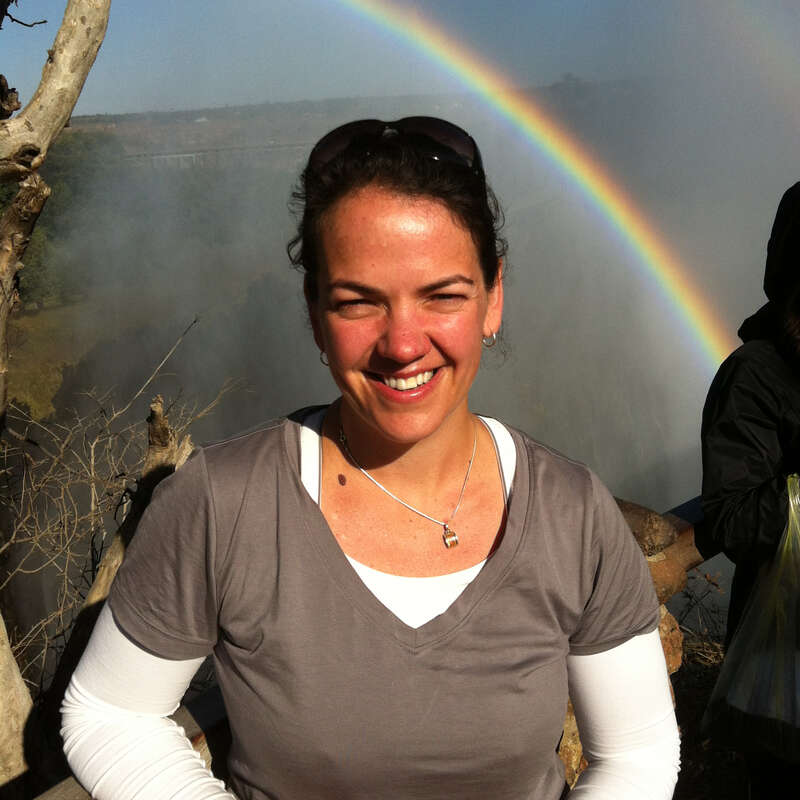About Pom Pom Camp
An island camp fronted by a lagoon and surrounded by grassy plains: Pom Pom has an idyllic setting.
For many people, that’s the iconic Delta image, the grasslands dotted with small islands of mixed acacia woodland.
During the floods, the lagoon is home to pods of hippos. And as the land dries out, the residual waterhole acts like a magnet for wildlife aplenty – all on display in front of the dining area.
To sit on the deck in front of your tented room is to have the view – and the birdlife – to yourself. Behind, comfort beckons, with armchairs in the small lounge area and the breeze wafting through mesh windows, aided by an overhead fan in the bedrooms.
An outside shower keeps you in touch with the natural world. Or add a hint of decadence in the honeymoon chalet, whose outdoor bath is set against a leafy backdrop.
The sense of relaxation pervades the main area too, with two lounges, an honesty bar and a large teak table where guests gather for convivial meals.
By day, you’ll explore this corner of the Okavango by 4WD, or – in season – experience the channels of the Delta from the near-silence of a mokoro.
Then return to cool off in the swimming pool, and to chat over the day with drinks around the campfire.
Our view
Pom Pom Camp is a good, reasonably economical option to enjoy the Delta's scenic environments and great birdwatching. The wildlife here, while resident, can be variable, so come for some of the Okavango Delta's loveliest scenery and mokoro trips. And if you approach the 4WD safaris with moderate expectations you might just be surprised by their growing reputation for big cats! The camp's ambience is laidback and friendly. The smallest downfall was the food presentation, but it did not detract from the taste.
Accommodation
9 tented rooms
Children
Best for aged 12+
Open
All year
Activities

4WD Safari

Birdwatching

Boat trip

Fishing

Guided walking safari

Helicopter

Mokoro

Night drive

Private activities
Traveller reviews of Pom Pom Camp
20 real, un-edited reviews from Expert Africa's travellers.
Arrived 15 Mar 2025, 3 nights
"Pom Pom Camp is fantastic"
Overall rating: Excellent
Arrived 8 Feb 2025, 3 nights
"Tired"
Overall rating: Average
Arrived 19 Jan 2025, 3 nights
"Pom Pom Camp review"
Overall rating: Excellent
Arrived 23 Aug 2024, 4 nights
"Pom Pom Camp review"
Overall rating: Excellent
Arrived 21 Jun 2024, 2 nights
"Lagoon views & wild dogs"
Overall rating: Excellent
Arrived 13 Apr 2024, 3 nights
"Pom Pom Camp review"
Overall rating: Excellent
Arrived 12 Jun 2023, 2 nights
"Pom Pom Camp review"
Overall rating: Excellent
Arrived 30 Nov 2021, 3 nights
"Pom Pom Camp review"
Overall rating: Excellent
Arrived 12 Sep 2017, 3 nights
"Wonderful first safari at Pom Pom "
Overall rating: Excellent
Arrived 20 Nov 2016, 3 nights
"third and last camp on botswana trip"
Overall rating: Good
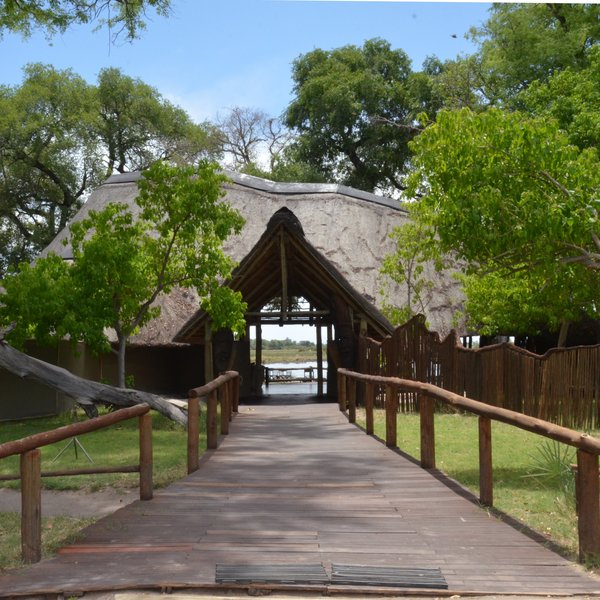
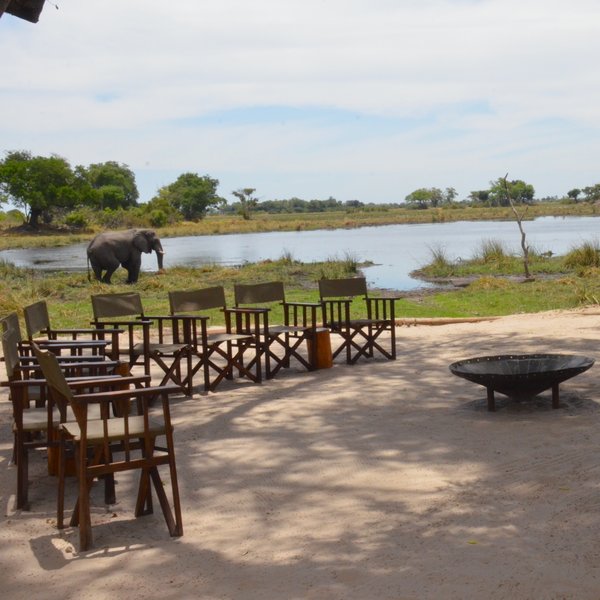
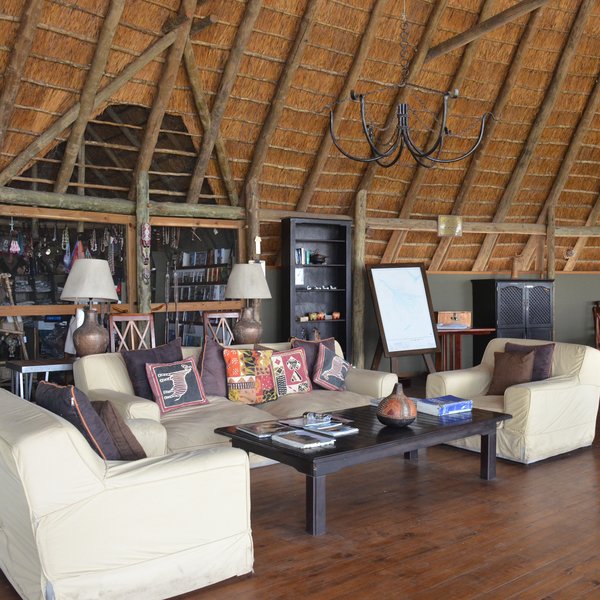
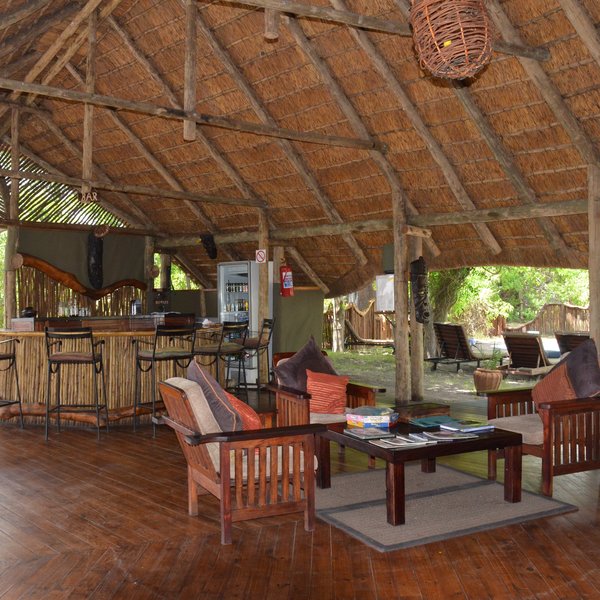
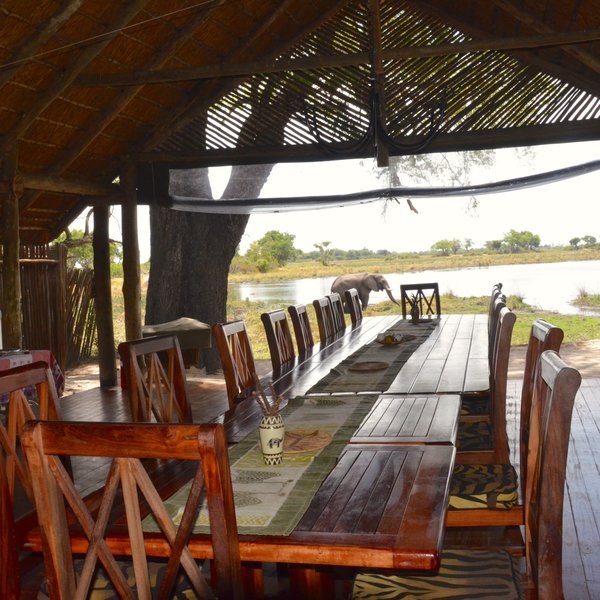
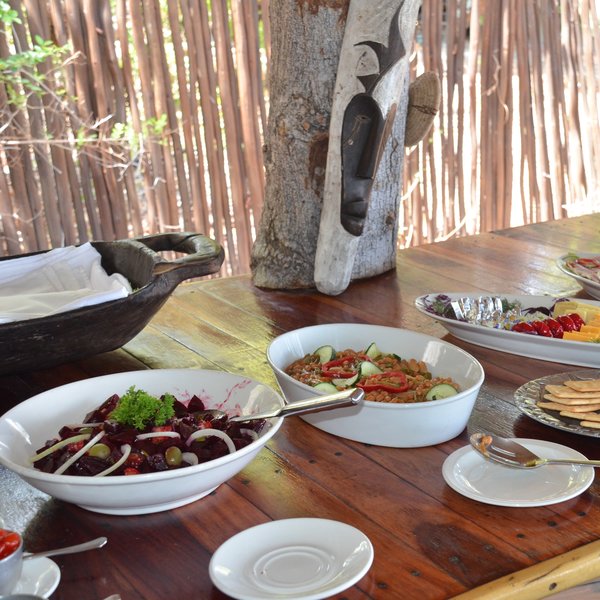
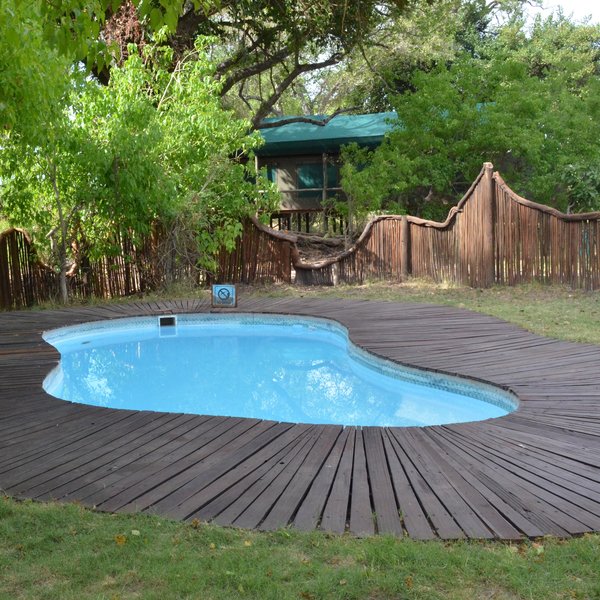
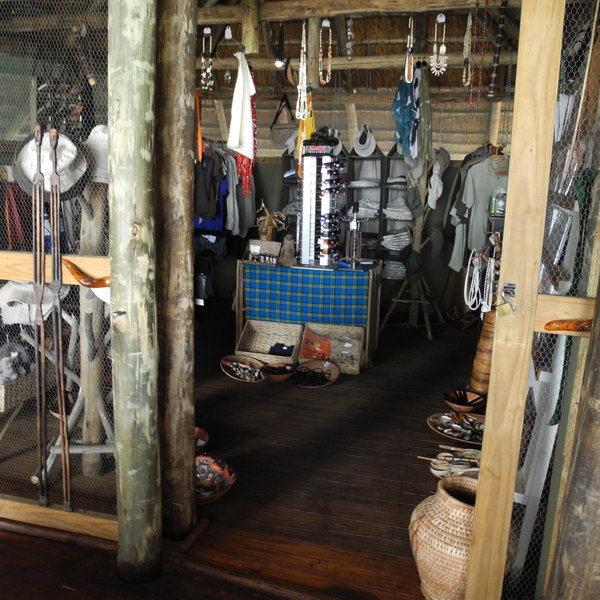
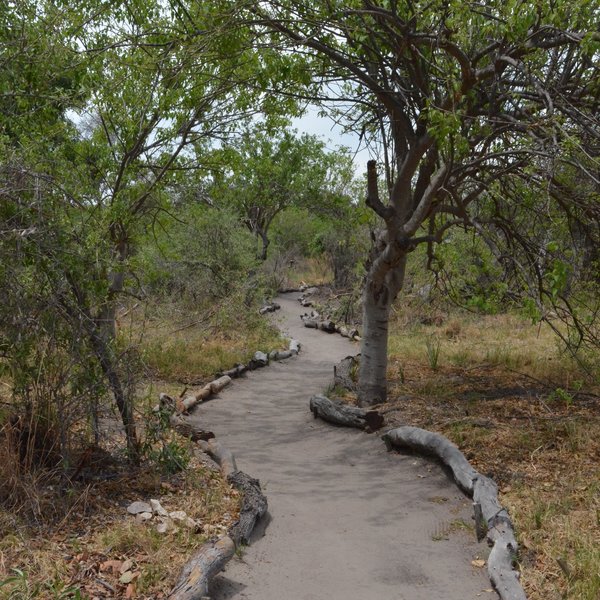
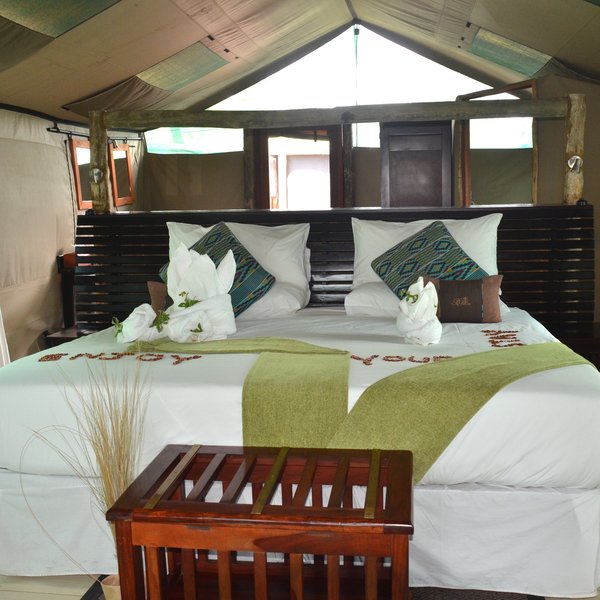
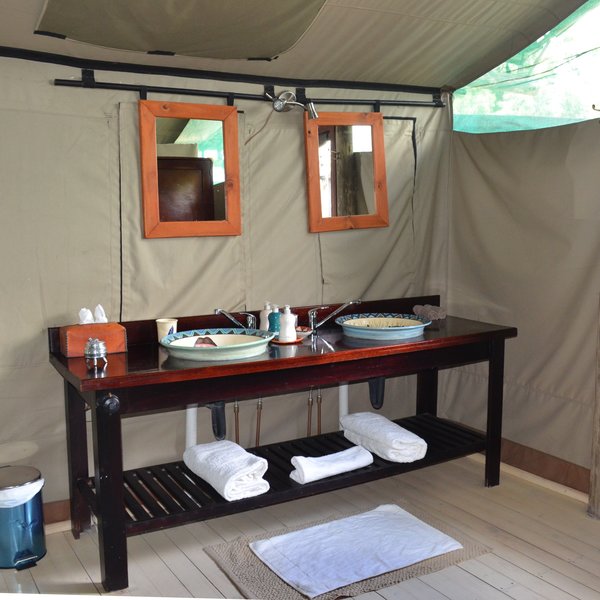
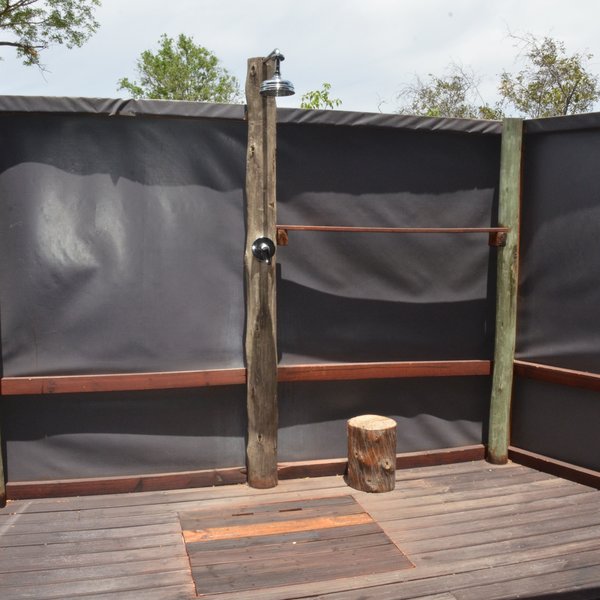
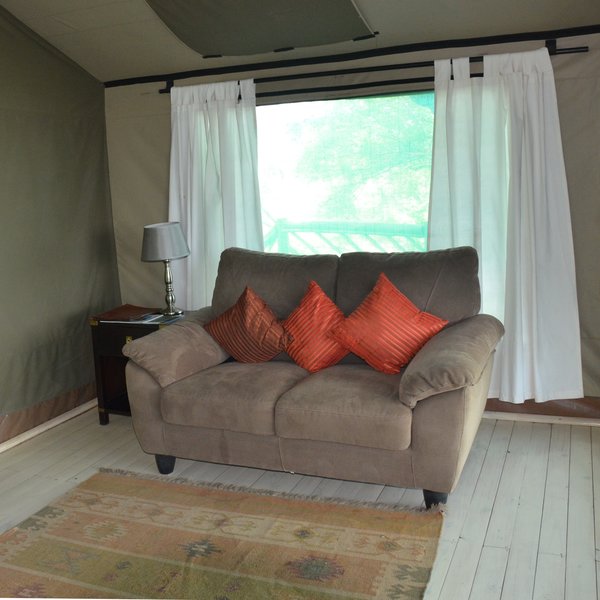
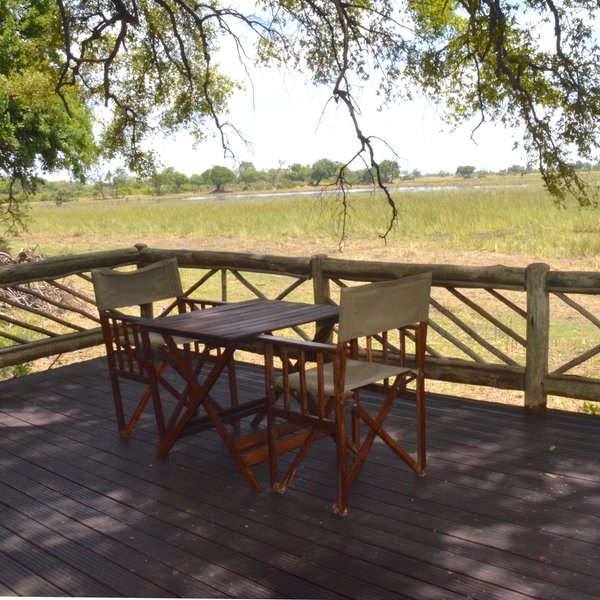
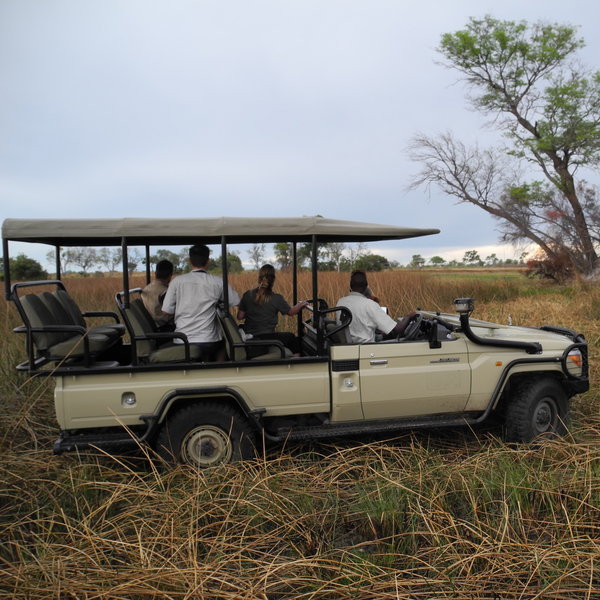
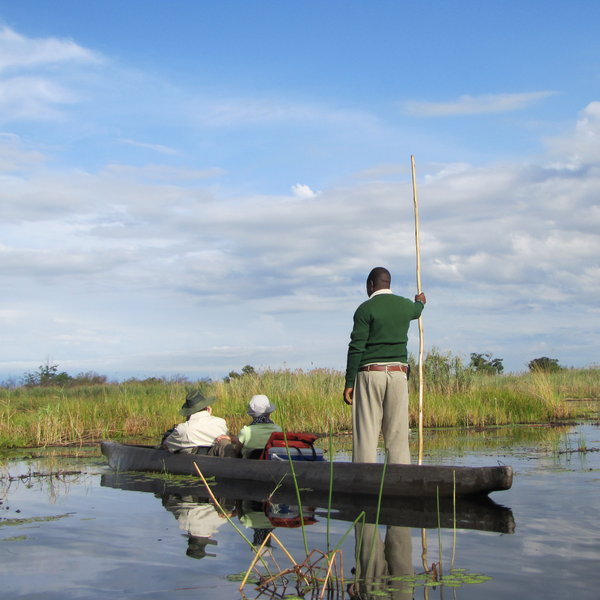
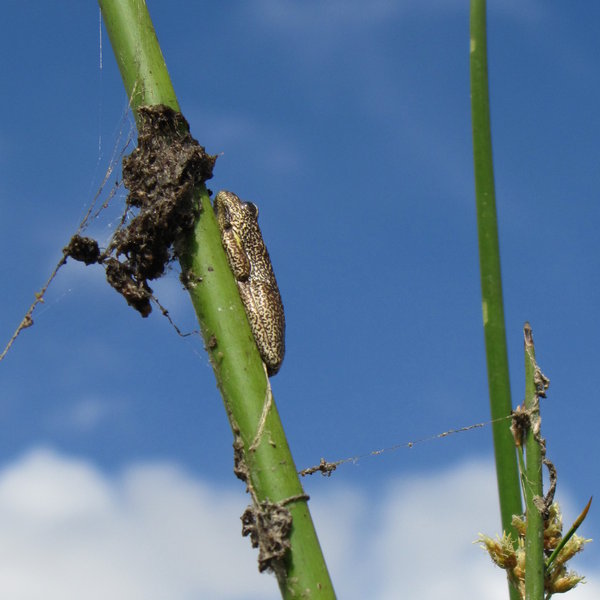
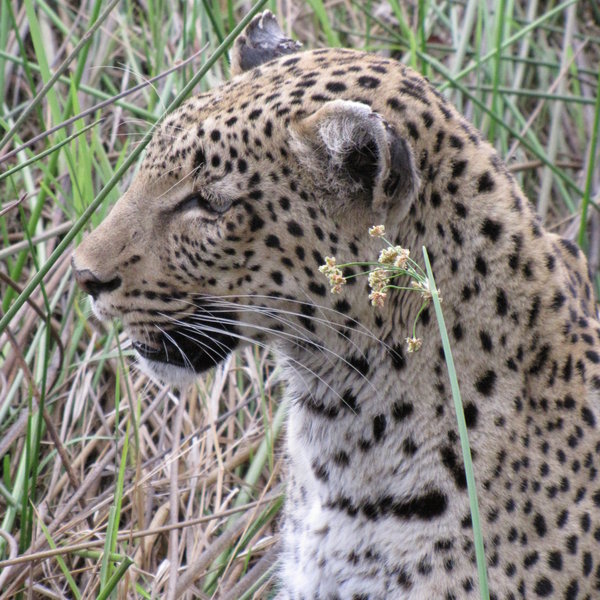
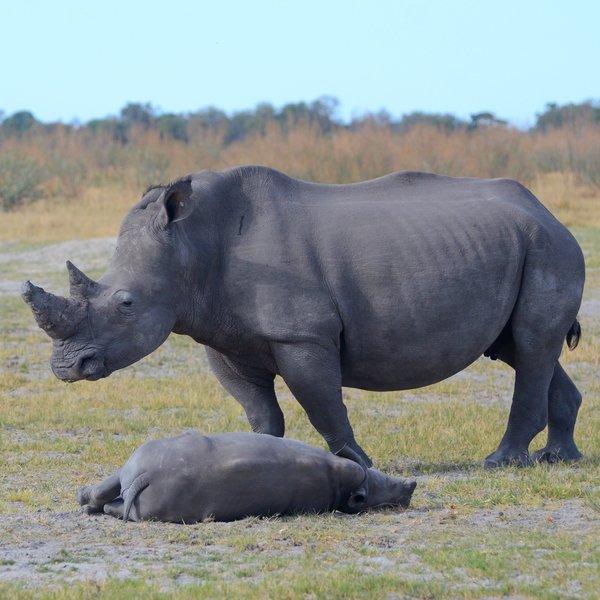

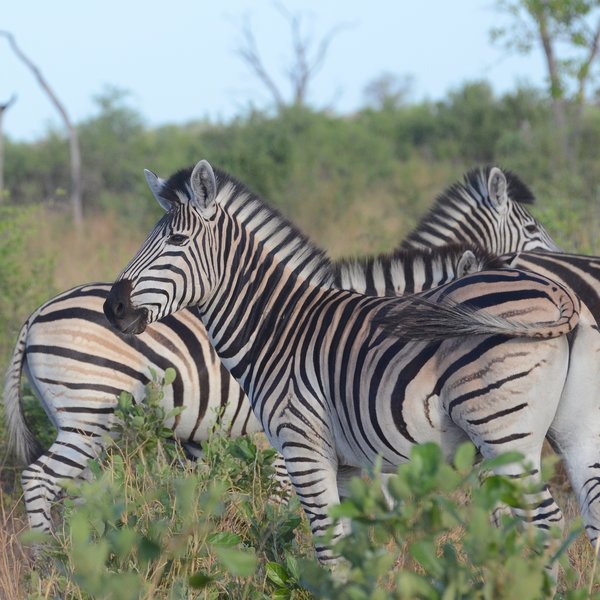
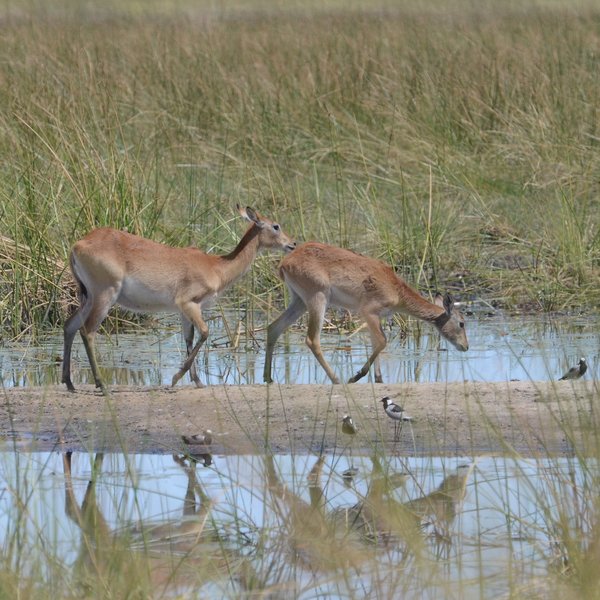
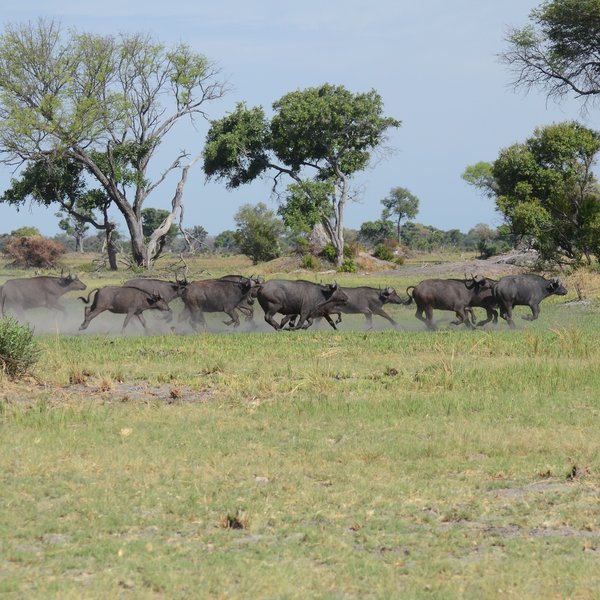
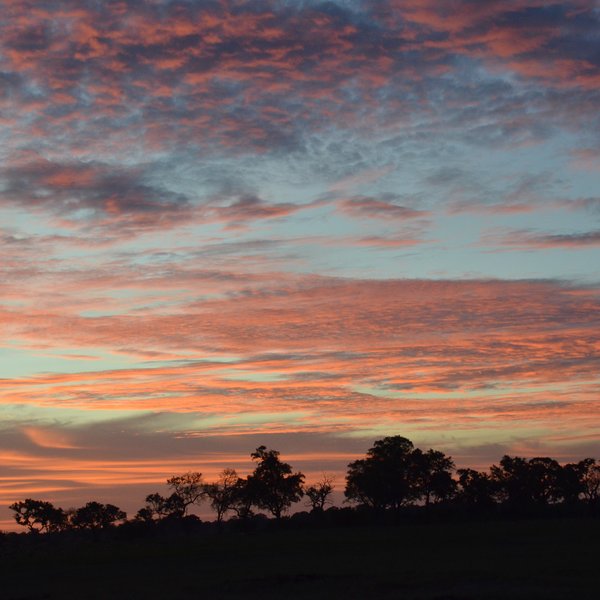
Expert Africa's gallery
When we travel we take lots of photos ourselves to give you a real and un-edited view of the safaris. See our 24 pictures of Pom Pom Camp to get the candid view.
View gallerySafaris visiting Pom Pom Camp
Just ideas, we'll always tailor-make a trip for you
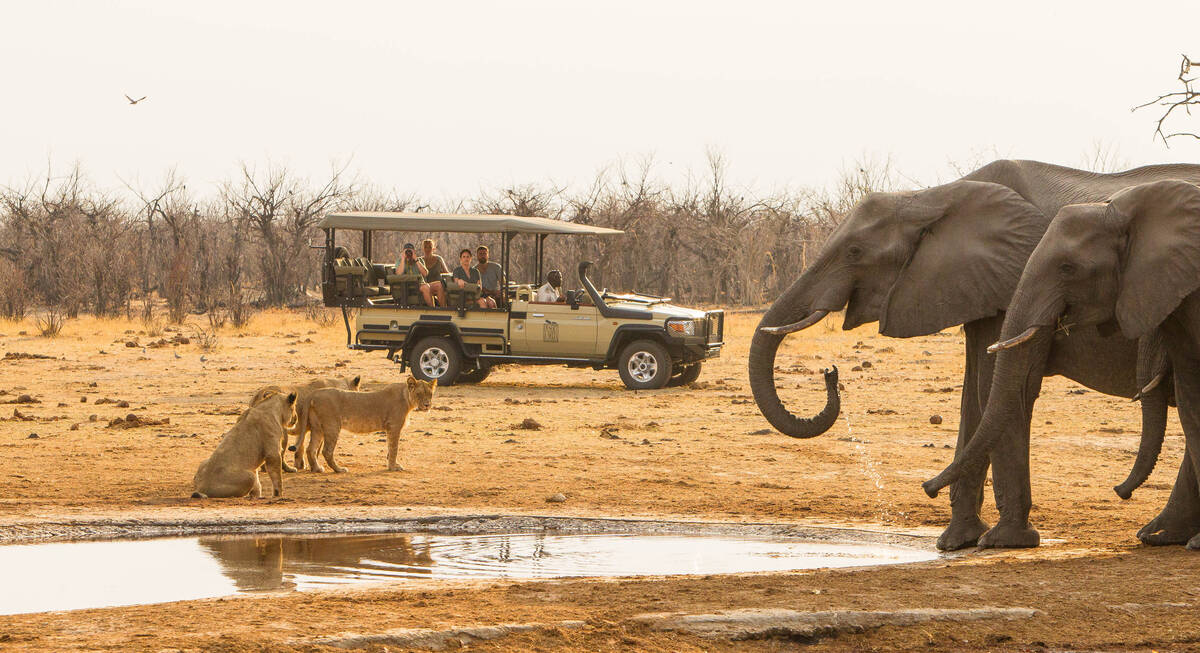
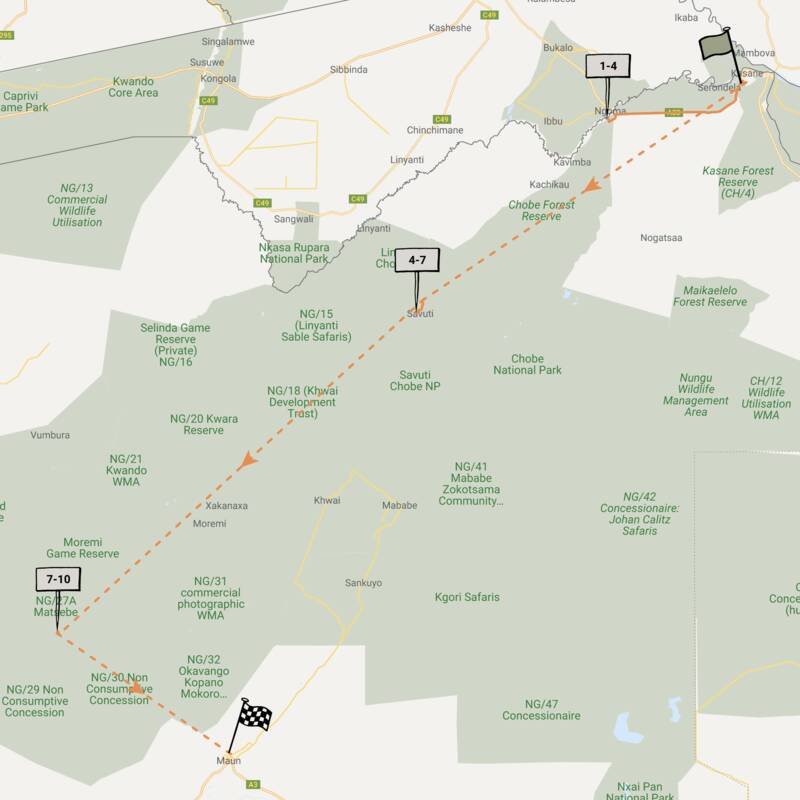
Spring Hare Safari
9 days • 3 locations • 1 country
KASANE AIRPORT TO MAUN AIRPORT
An authentic and diverse safari to Botswana combining the Chobe Forest Reserve, Savuti Marshes and the Okavango Delta. Strong wildlife viewing, a variety of activities and excellent value camps.
Visiting Chobe, Okavango Delta
US$8,710 - US$14,180 per person
Pom Pom Camp: Our full report
On the western side of Botswana’s Moremi Game Reserve, Pom Pom Camp sits on an island of the same name.
It’s a very scenic area where swathes of floodplain grasslands are dotted with small islands of acacia woodland – typical of many people's image of the Delta. The nine-room tented camp overlooks the reed-fringed Pom Pom Lagoon, which shrinks to a waterhole in the dry season, but in the flood season is covered with water lilies and popular with hippos.
Please note that Pom Pom will be closed for a refurbishment from 1 October 2025 to 30 April 2026.
The camp’s nine tented rooms, including a family tent and a honeymoon chalet, are spacious double-shelled Meru-style tents, elevated on wooden platforms. At the front of each is a deck overlooking the lagoon, with an outdoor table and chairs providing a peaceful spot to enjoy the views and birdlife. The outer shell of the tent forms a shaded lounge area with desk and armchairs.
Meshed doors lead into the bedroom where comfortable twin beds are backed by a free-standing slatted headboard. Crisp white linen is brightened with colourful throws and cushions. Drinking water is placed on a small bedside table and reading lights are fitted to a simple wooden frame above the headboard; USB charging points are easily accessible too. At the foot of the beds are wooden chests, which create a handy space for storing luggage. Whitewashed floorboards lend the room an airy feel and large mesh windows allow a cooling breeze, enhanced by an overhead fan.
Behind the bedroom, in the en-suite bathroom, twin locally made artistic washbasins and two large mirrors stand opposite a wooden wardrobe and a canvas walled toilet. Through a rear door is an open-air shower, enclosed by canvas sides. Here you'll find a towel rail with fluffy white towels, toiletries (soap, body lotion, and shampoo/shower gel) and a lantern for ambient lighting. Other amenities include a laundry basket, washing powder for undergarments, a digital safe, mosquito repellent and coils, insect spray, and an air-horn in case of emergencies.
In Pom Pom’s family tent, two interlinked bedrooms share an en-suite bathroom, so it would work well for families with younger children or friends travelling together.
The honeymoon chalet has an outdoor bath with a lovely leafy backdrop in addition to the outside shower. It is also located furthest from the central area for more privacy. Having said this, on a previous visit, our team reported they could hear snippets of noise and music from the staff village, which is relatively close to this end of the camp.
Sandy paths lead from the tents to Pom Pom’s communal areas, and guests are always escorted after dark as wildlife does occasionally pass through camp.
Pom Pom's large, thatched main area is divided into three open-fronted sections: a help-yourself bar, two comfy lounge areas and a dining space dominated by a large teak table. A tea station displays a selection of teas, coffees and herbal drinks. The décor is neutral and simple with splashes of colour and local crafts added to good effect. It's cool and shady - great for relaxing during the heat of the day; and warmly lit at night by spirit-lamp chandeliers and interesting “bird's nest” light fittings. A large tree trunk at the center functions as a low display “table” for curios, and a separate curio shop stocks other local crafts including hand-woven baskets.
In front of the main area, steps and a ramp lead down to a sandy terrace and a firepit with camp chairs overlooking the lagoon, where the camp's mekoro (traditional canoes) are usually kept in the shade of jackalberry (African ebony) and fig trees. Here Pom Pom plays host to vervet monkeys, baboons, bushbuck and a variety of birds, including red-billed francolin and black-collared barbet (whose melodic duet is often heard in the early morning).
To the side of the main area is a small 1.2m-deep swimming pool surrounded by loungers and chairs.
Pom Pom Camp offers a variety of safari activities including 4WD safaris (day and night), mokoro trips, fishing, and walking safaris accompanied by an armed guide.
Historically the guides at Pom Pom used to comment that sightings were not consistent, explaining that in the wet season big game such as elephant, buffalo, giraffe, rhino and lion migrated away from the area in search of larger tracts of dry land (“pom pom” means “soft ground” in the local language). This fits in with our previous impressions here, as far back as 1992 when one of the Expert Africa team first visited. In recent times, however, the Delta has seen a change in water levels and there has been a significant shift in wildlife movements. Now lion and leopard are regularly seen throughout the year as the landscape has not flooded as well as in some years, and cheetah are also occasionally seen in the area.
On our last visit in January 2024, we had some very good game viewing, including a pair of mating leopards, a honey badger and a pride of lions. The highlight, however, was a pack of 21 wild dogs that had a 45-minute interaction with a herd of wildebeest that successfully defended their young. To watch the wildebeest chasing the dogs away and then standing shoulder to shoulder, presenting the dogs with a wall of horns, was a sight not easily forgotten.
On a previous visit, we tried the mokoro trip led by entertaining and informative guides; it was idyllic;. We haven't had a chance to assess the walking safaris so cannot recommend them personally.
While guiding at Pom Pom was patchy in the early days, things have changed in the last ten years. Our experience on our 2024 trip mirrors that on our stay in 2015; on both occasions we found the guides to be enthusiastic, knowledgeable, and engaging, striking up a good rapport with guests.
It is worth noting that due to fluctuating water levels in the Delta, water levels are at their lowest during the “green season” (around December to April), when the Okavango is not in flood. As a result, the lagoon in front of camp can be reduced to a small waterhole that acts as a focal drinking point for wildlife. On our January visit, we were particularly impressed one lunchtime when impala, zebra, giraffe, bushbuck, kudu, red lechwe, warthog and wildebeest could all be seen from the dining table! The downside, however, is that at this time of year mokoro trips are not always an option due to lower water levels.
Geographics
- Location
- Okavango Delta Safari Reserves, Botswana
- Ideal length of stay
- 2–3 nights. We’d usually recommend three nights for most camps in the Delta, but because of Pom Pom’s variable game viewing we think that a two-night stay could be fine here in flood season.
- Directions
- Pom Pom Camp is accessed by light aircraft – a short 20-minute flight from Maun or 1½ hours from Kasane. From the airstrip, it's a five-minute transfer by 4WD to the lodge.
- Accessible by
- Fly-and-Transfer
Food & drink
- Usual board basis
- Full Board & Activities
- Food quality
- On our last visit to Pom Pom Camp in January 2024 we found that the quality, presentation, and selection of food were good overall. Occasionally, because we were out on a game drive longer than expected, the food had lost some of its zest. Meals are generally served as a buffet and guests are all seated together.
A light breakfast of cereal or porridge, muffins, fruit, yoghurt, toast, spreads, juices, tea and coffee are served before the morning activity, usually around the campfire.
For brunch, on return from the morning activity, we were served a buffet of cooked breakfast options along with a variety of fresh pizzas, spinach tartlets, Okavango fish (tilapia) and a range of salads. Homemade bread, cold meats, cheese and crackers, and a fresh fruit platter were also available.
Before setting out on the afternoon activity, afternoon tea consisted of fresh muffins, shortbread biscuits and fresh fruit slices, along with iced tea and coffee and a selection of hot drinks.
Dinner is generally three courses. We had a traditional meal cooked on open flames, with beef fillet, lamb chops, sausages and seswaa (traditional meat stew), with pap (polenta), sweetcorn and vegetables. For dessert, we celebrated a birthday in camp and shared a cake with other guests, along with a chocolate pudding.
After dinner, drinks were served around the campfire. - Dining style
- Group Meals
- Dining locations
- Indoor and Outdoor Dining
- Further dining info, including room service
- Private dining can be arranged on request.
- Drinks included
- All drinks are included (nothing is stocked that guests have to pay extra for). Red and white wine are served at dinner, and house spirits are also available.
Special interests
- Family holidays
- With a family chalet, consisting of two interlinked bedrooms with a shared bathroom, Pom Pom Camp is a good option on a family safari to Botswana – ideally with children aged 12 or over.
- See ideas for Family holidays in Botswana
- Solo Travel
- Pom Pom Camp does not charge a single supplement in the green season, This, along with communal dining, make the small camp an ideal option for solo travellers on safari in Botswana.
- See ideas for Solo Travel in Botswana
- Birdwatching
- Located within extensive floodplain areas, the birding at Pom Pom Camp offers is excellent opportunities for birding in Botswana. Water-associated birds are a feature here and sightings may include wattled crane, Pel's fishing owlDickinson’s kestrel, African palm swifts, slaty and black egrets and black coucals.
- See ideas for Birdwatching in Botswana
Children
- Attitude towards children
- Pom Pom Camp welcomes children from the age of 6 and offers a family tent that sleeps up to four people in connecting double and twin rooms, with a shared bathroom.
- Property’s age restrictions
- A private vehicle is compulsory for families with children 6 to 11 years old. For safety reasons, children under the age of 12 are not permitted to do the mokoro trips and nature walks are at the discretion of the guides.
- Special activities & services
- No special activities or services are offered for children.
- Equipment
- Pom Pom has a family tent that sleeps up to four people in connecting double and twin rooms, with a shared bathroom.
- Generally recommended for children
- We would recommend Pom Pom Camp for children aged 12 and up, unless the family is willing to pay for a private activity vehicle.
- Notes
- Children at Pom Pom Camp must be under the supervision of their parents or guardians at all times as the camp borders a lagoon and is not fenced from potentially dangerous wildlife.
Our travellers’ wildlife sightings from Pom Pom Camp
Since mid-2018, many of our travellers who stayed at Pom Pom Camp have kindly recorded their wildlife sightings and shared them with us. The results are below. Click an animal to see more, and here to see more on our methodology.

100% success

100% success

100% success

100% success

100% success

100% success

100% success

100% success

90% success

56% success

56% success

50% success

50% success

43% success

17% success

17% success

13% success

0% success
Communications
- Power supply notes
- The generator runs during the day and goes off at night, when a low-wattage lighting system in the rooms is powered by a bank of batteries (recharged by the generator). The fans in the bedrooms are also powered at night.
There are plug points in the rooms, and USB points next to the beds. - Communications
- Wi-Fi is available in the guest rooms, but there is no cellphone reception. In an emergency, radio contact can be made with the main office in Maun.
- Water supply
- Borehole
Health & safety
- Malarial protection recommended
- Yes
- Medical care
- All the managers and guides are first-aid trained and there are full trauma kits on site. The closest doctor is in Maun, which is a 20-minute flight. In an emergency, the camp has access to Medivac. Please note however that it is only possible to fly out of camp during daylight hours as the bush airstrips do not have any lighting at night.
- Dangerous animals
- High Risk
- Security measures
- Because Pom Pom Camp is not fenced against potentially dangerous animals, guests are escorted to their rooms after dark. There is an airhorn in each tent for guests to attract attention in an emergency, and the manager's house is close by.
- Fire safety
- There are fire extinguishers outside each tent and in the communal areas.
Activities
4WD Safari
Birdwatching
Boat trip
Fishing
Guided walking safari
Helicopter
Mokoro
Night drive
Private activities
Extras
- Disabled access
- On Request
- Laundry facilities
- A laundry service is included at the camp – excluding undergarments. Washing powder is provided in the rooms for guests to wash personal items.
- Money
- There is an electronic safe in each tent.
All major currencies are accepted, including US dollars, British pounds, euros, South African rand and Botswana pula. Mastercard and Visa are accepted but not Amex or travellers' cheques. There is no fee charged for credit-card payments.
Plan and book your trip with Expert Africa
All of our trips are tailor-made, so we'll always adapt them to suit you. Talk to an Expert and let us plan and arrange your perfect trip.

Talk to an Expert
Call or email us now! We’ll match you with the Specialist in our team who is best suited to help you. Then together we can start planning your trip.

Set up your itinerary
Based on our experience and your ideas, your specialist will create a detailed, costed itinerary. We’ll refine it together, until we have a trip that you’re perfectly happy with.

Prepare for your trip
The same Specialist will make the seamless arrangements for your trip, send you detailed travel documents, and be available to answer any questions before you depart.

Travel with peace of mind
After you set off, you’ll be cared for by our partners in Africa, most of whom have worked with Expert Africa for decades. And if you ever need us urgently, we’re available 24/7.

When you return
We love to learn about your trip, and so will always be grateful if you’ve the time to give feedback to your Specialist when you return.
Pom Pom Camp's location
Look closer at the environment and surroundings of Pom Pom Camp.
Excursions from Pom Pom Camp
Optional extra day-trips and excursions possible whilst you're staying at Pom Pom Camp. Talk to us: these are usually best arranged before you go.
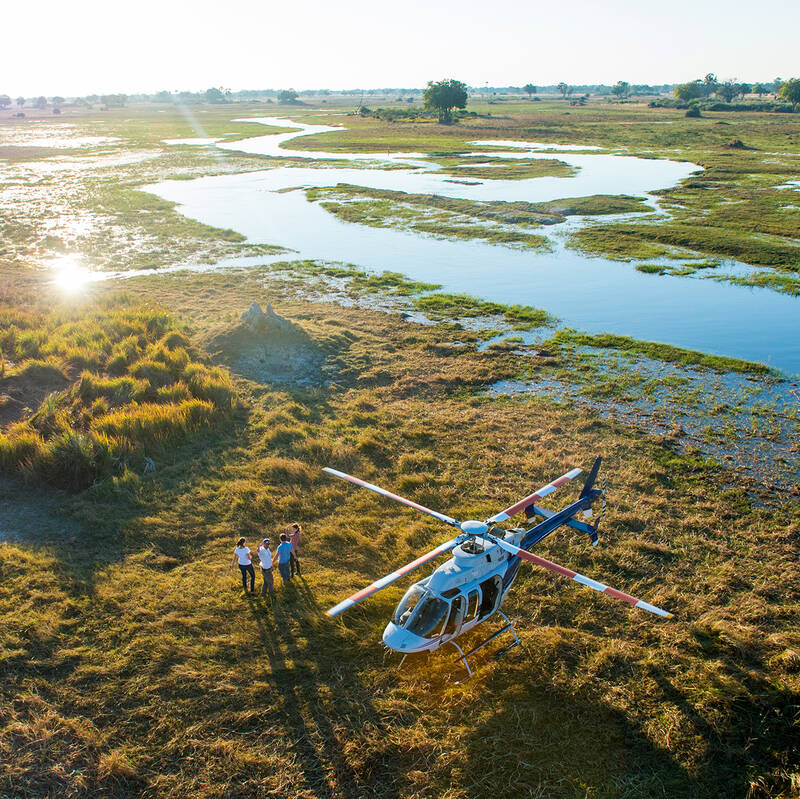
Helicopter Flight - Botswana
Various: from 30 minutes to half a day.
Low-flying, agile and offering superb views, helicopters are an ideal way to move around the Okavango Delta.You can use them instead of fixed-wing inter-lodge transfers or as an addition to other wildlife watching activities, and of course, helicopters can hover to allow that perfect pic, whereas fixed-wings can’t.
More about Helicopter FlightOther lodges in Okavango Delta Safari Reserves
Alternative places to stay in this same area.
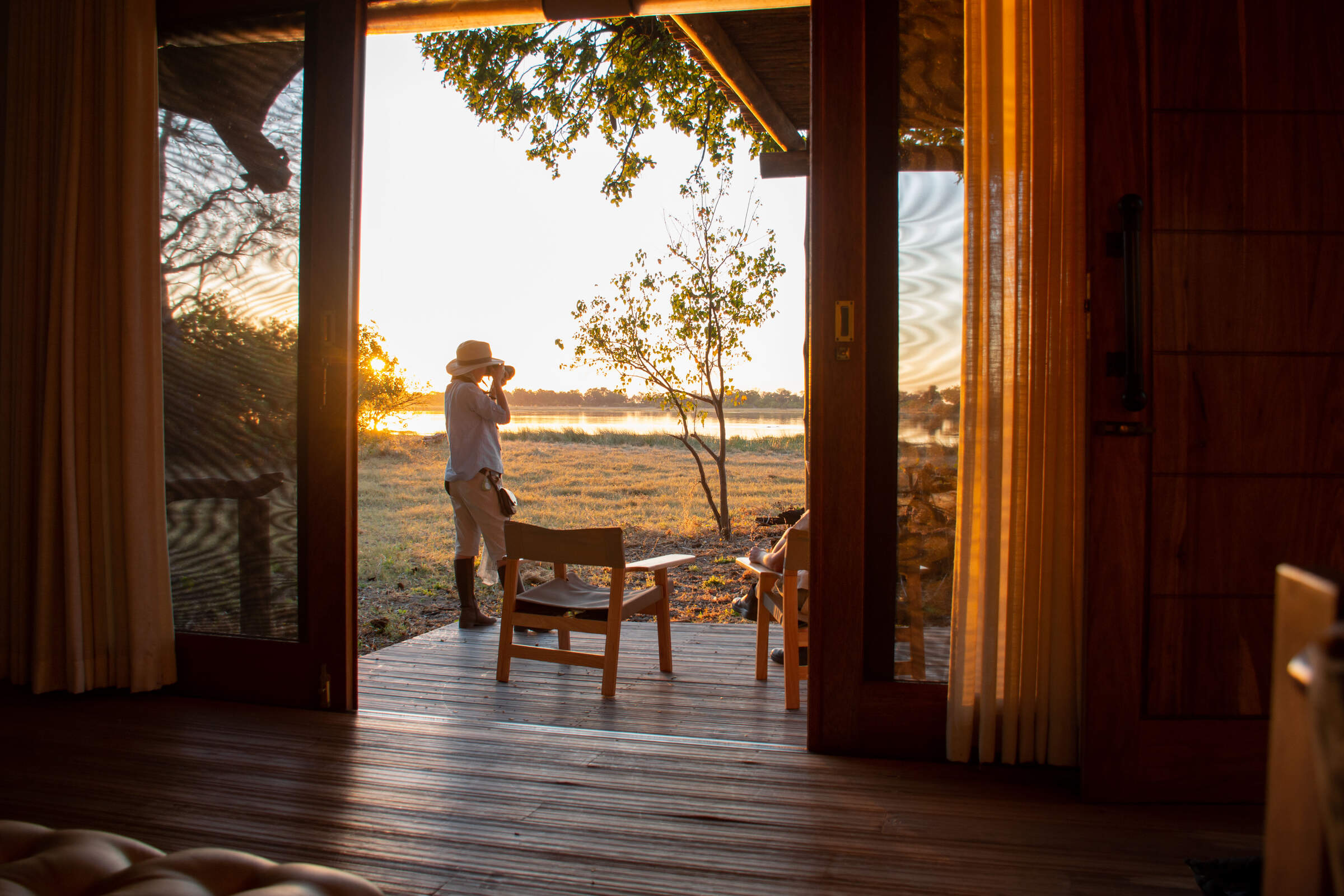
Kwara Camp
Kwara Camp's private reserve boasts land and water activities year-round, with excellent game-viewing opportunities and access to permanent channels of the north-east Okavango Delta.
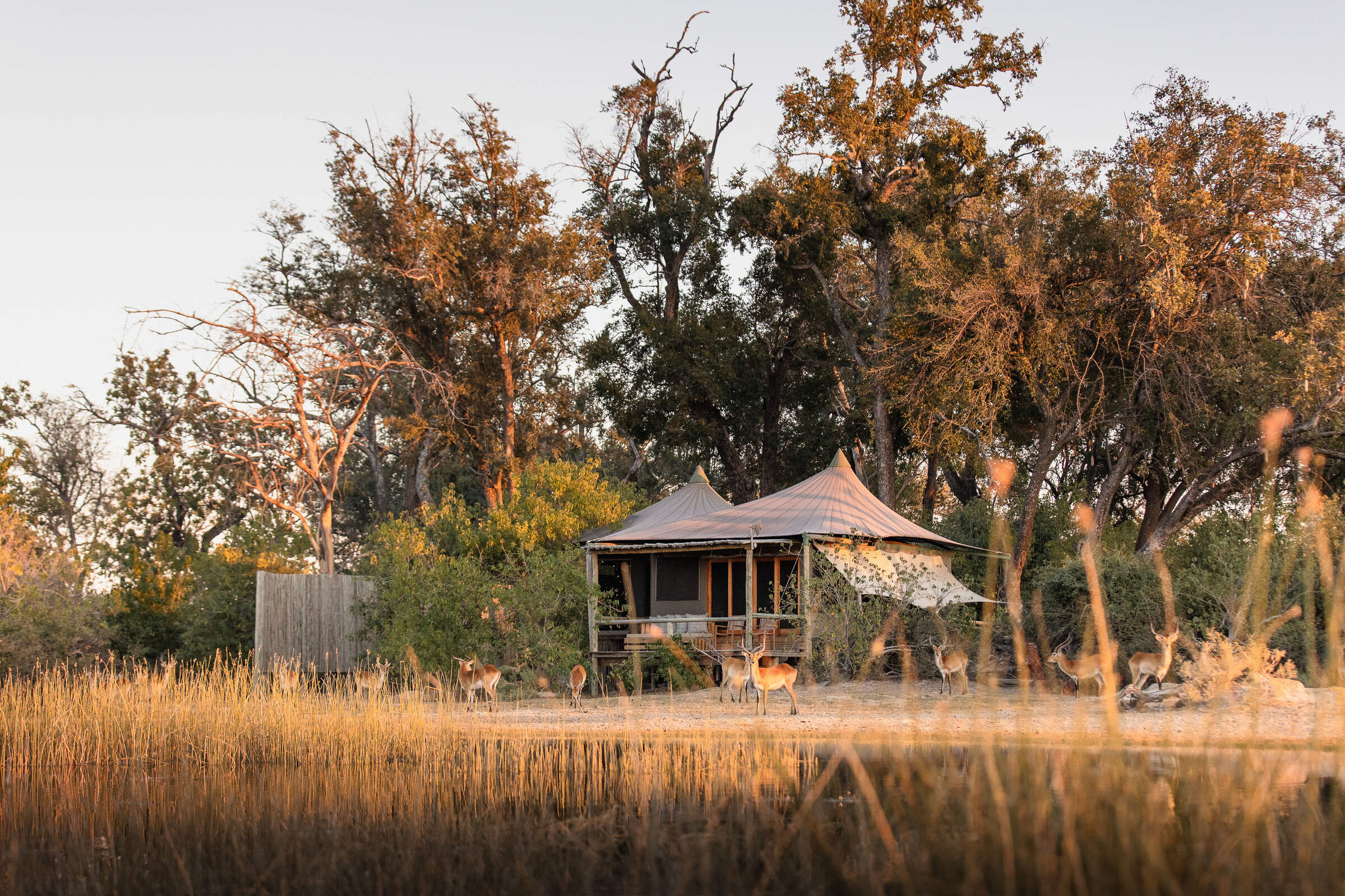
Little Vumbura
On a secluded island within a private reserve, Little Vumbura combines superb game viewing with a broad diversity of habitats in a truly picturesque setting.
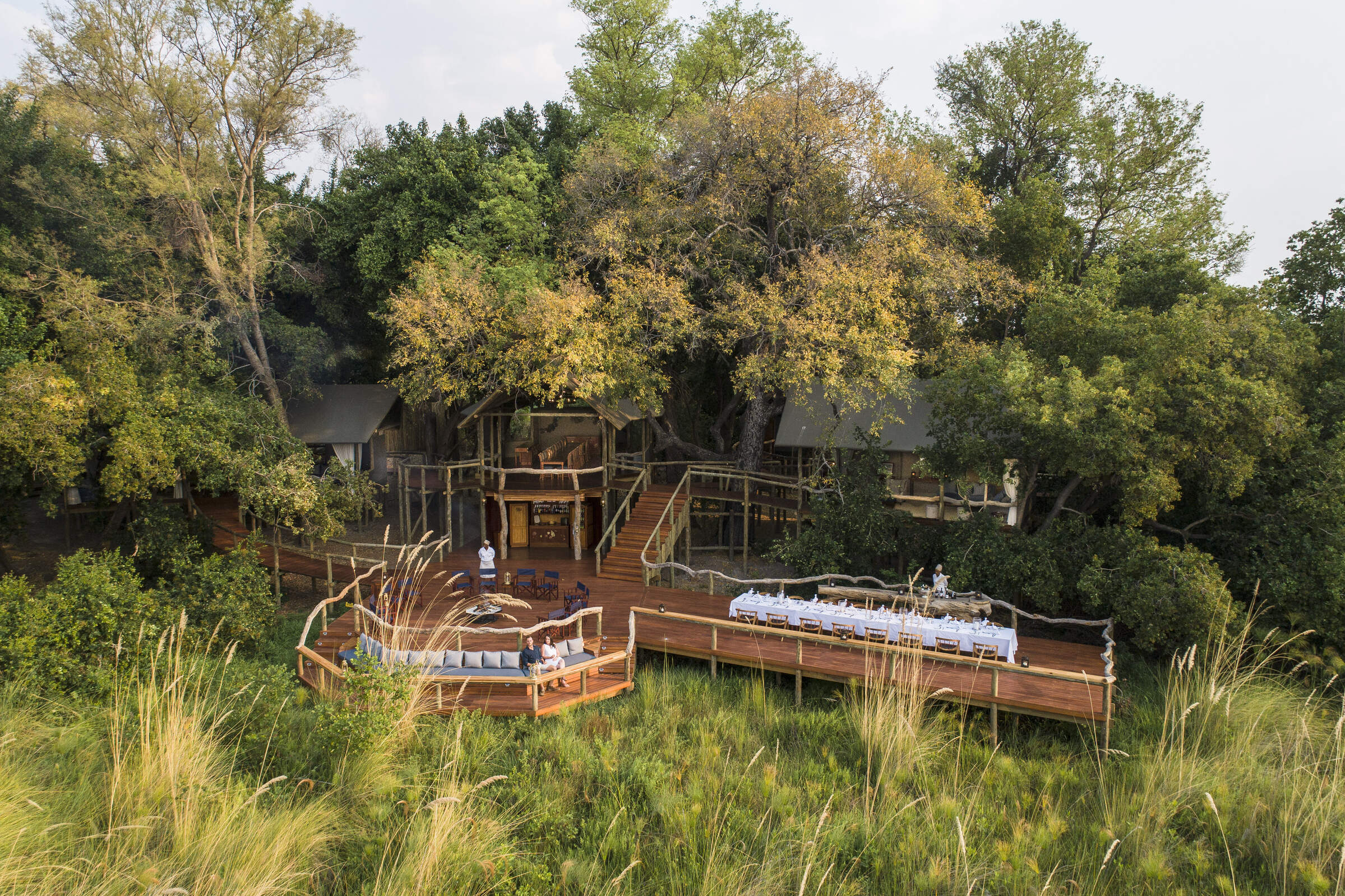
Shinde Camp
With experienced staff and a wealth of activities, Shinde offers a traditional safari in an exceptionally varied and wildlife-rich environment.
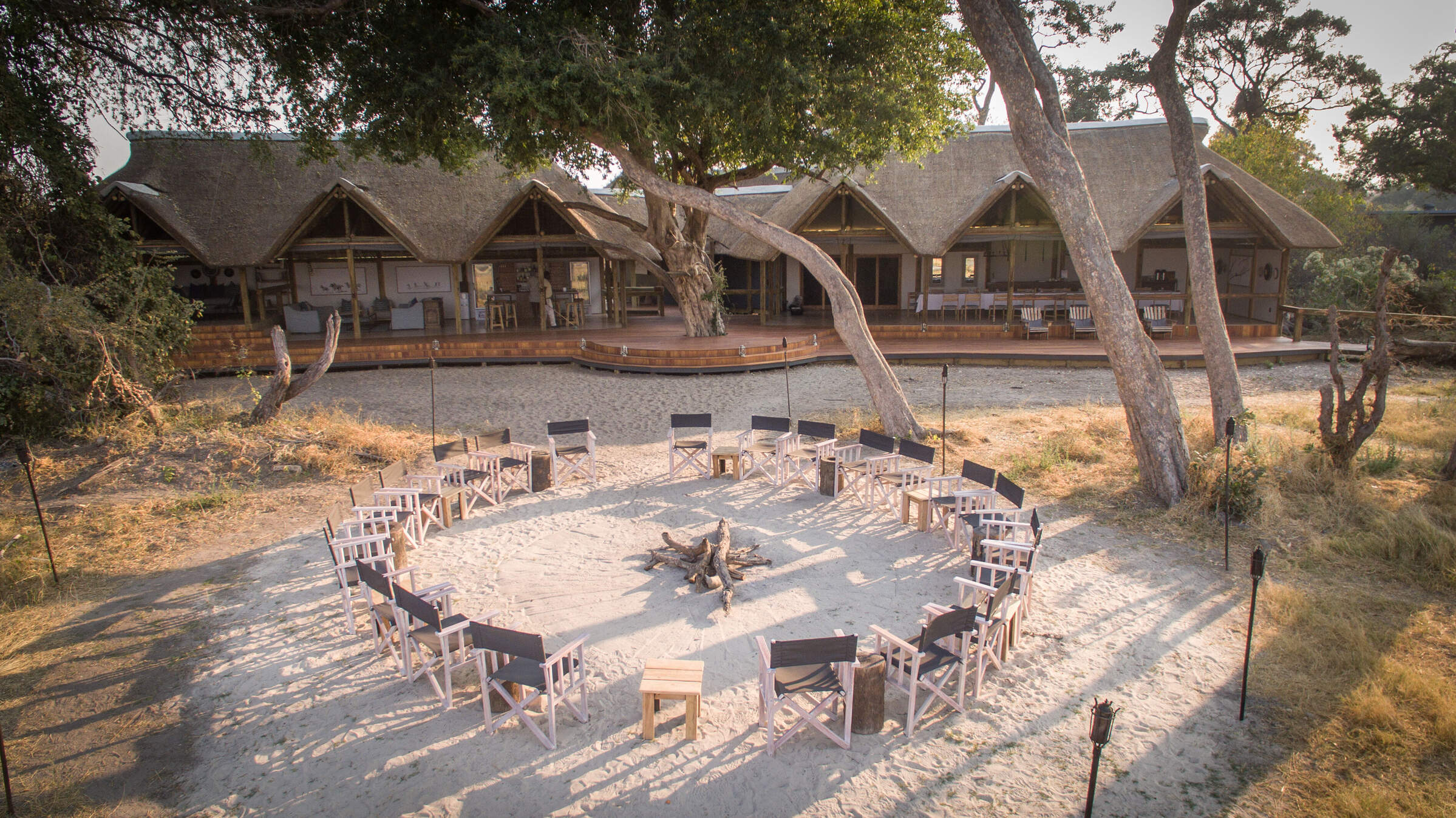
Splash Camp
Set in the Kwara Reserve, offering superb wildlife viewing year-round, Splash offers both land and water activities led by guides with a particular knack for tracking big game.
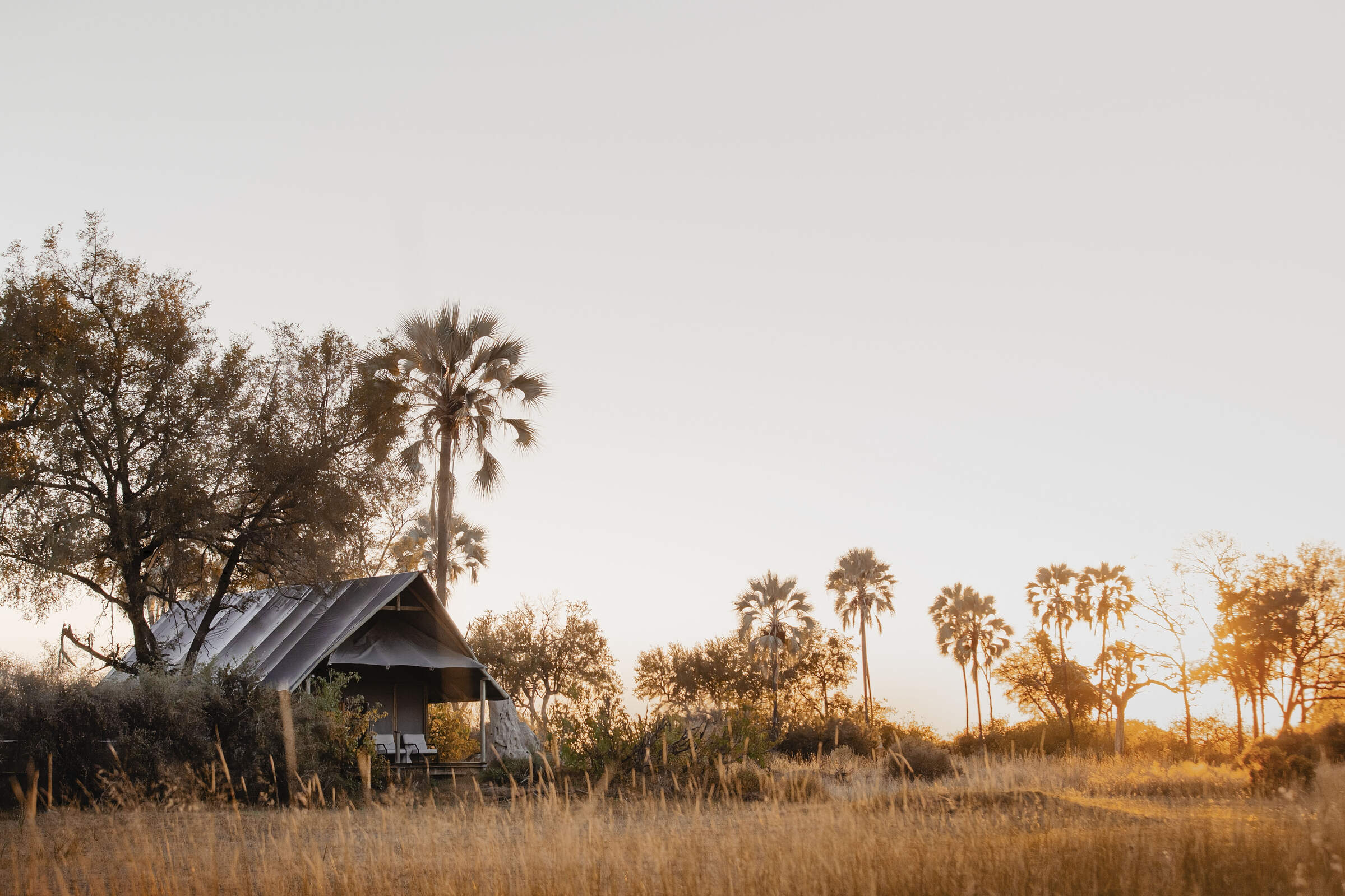
Chitabe Lediba
Chitabe Lediba, in Botswana's southern Okavango Delta, is a small family friendly safari camp; it offers great dry-land safaris and in our experience consistently delivers good game sightings.
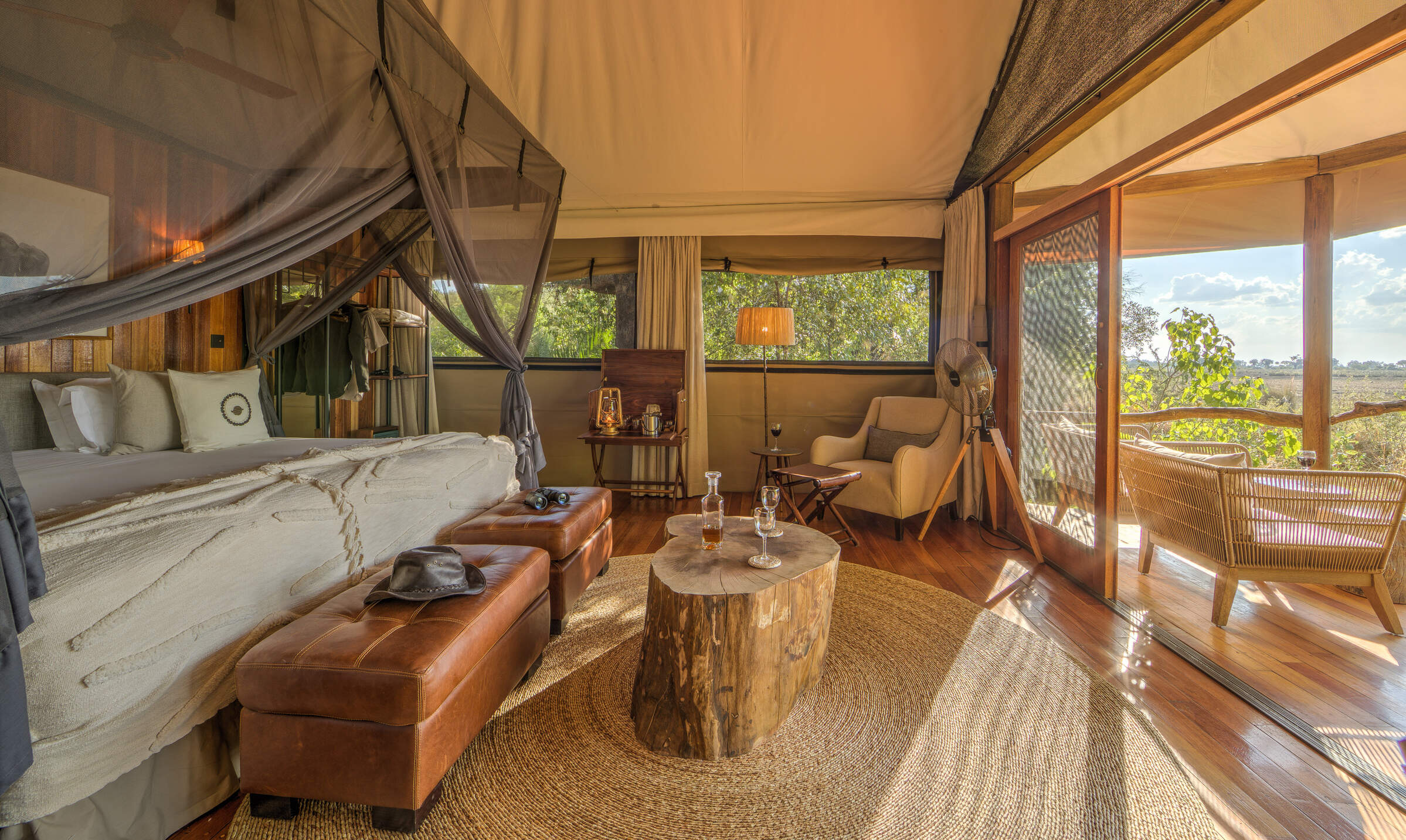
Kanana
In a beautiful part of the Delta, Kanana focuses on fantastic water activities and birding – including exclusive access to an impressive heronry.
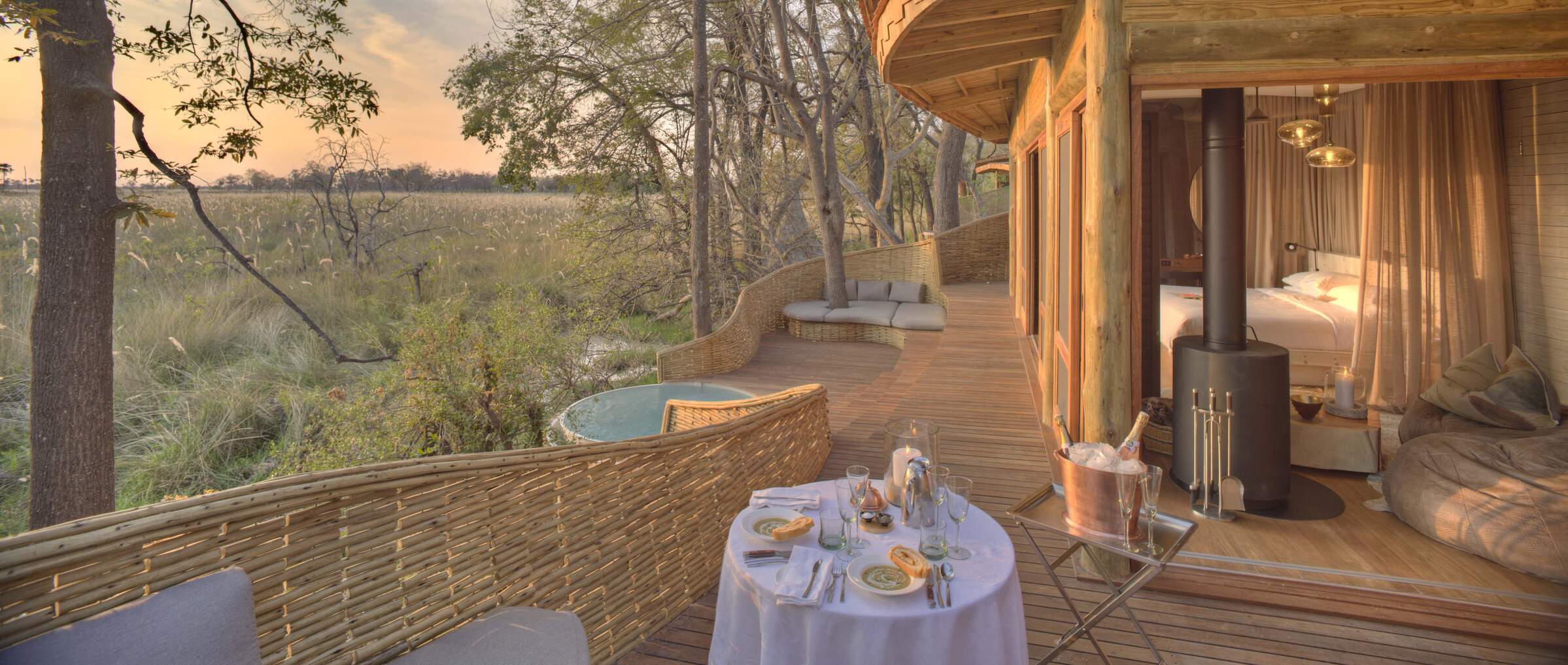
Sandibe Safari Lodge
The luxurious Sandibe Okavango Safari Lodge lies in a private concession in the heart of the Okavango Delta, beside Moremi Game Reserve, with superb big-game viewing.
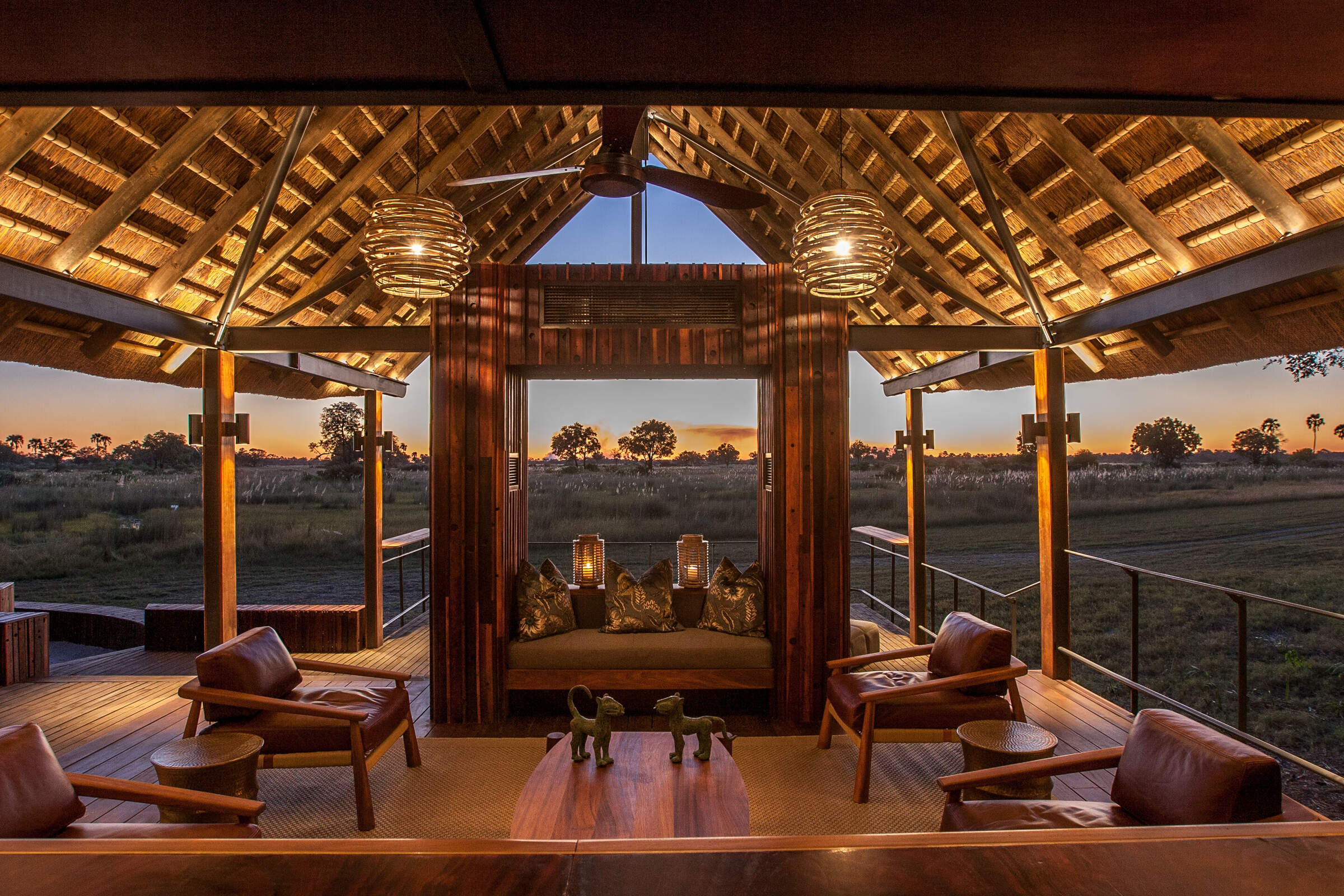
Chitabe Camp
In the southern Okavango Delta, the excellent Chitabe Camp concentrates on dry-land safaris in an area that we've found particularly good for wild dog sightings.
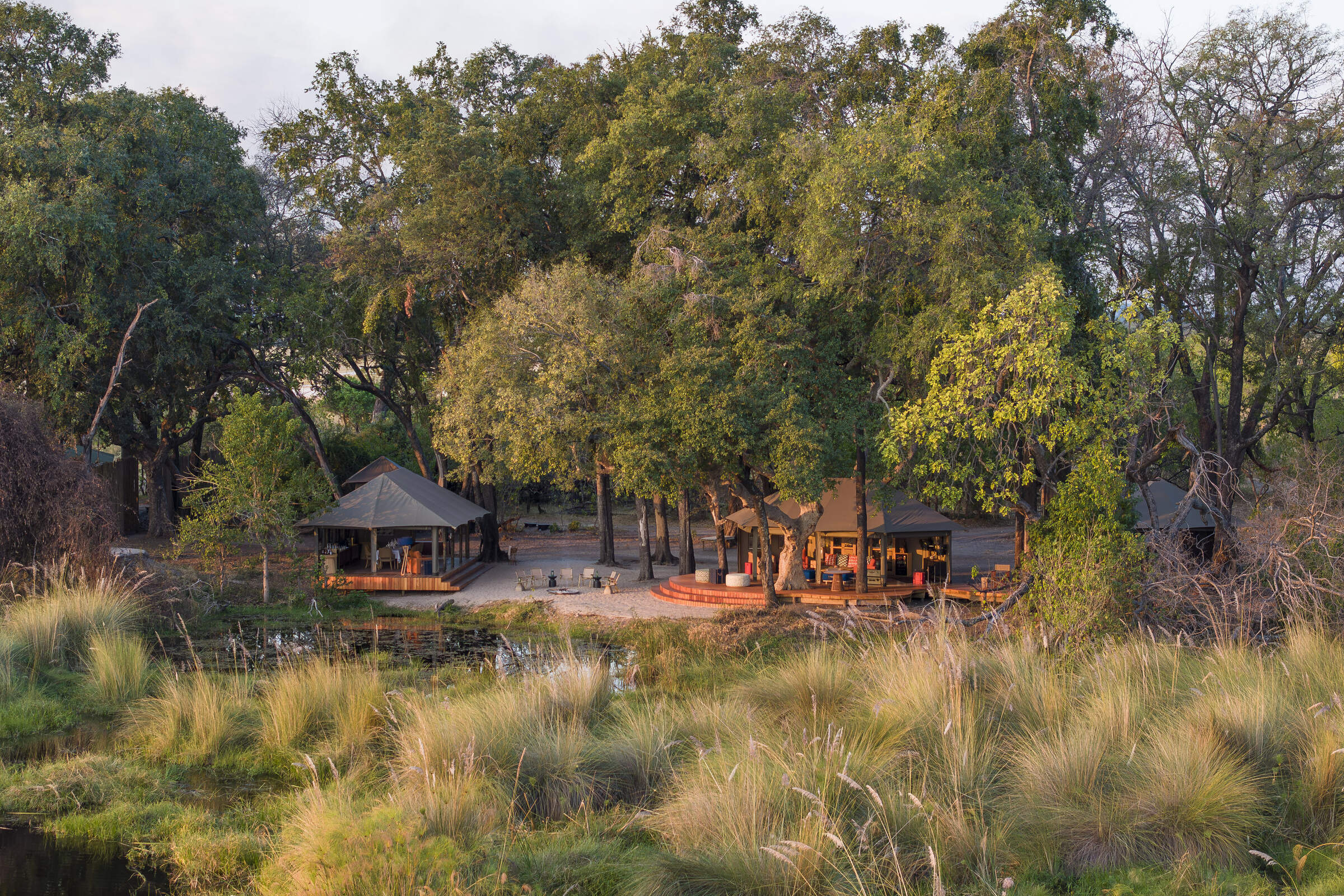
Shinde Footsteps
Small and simple, but comfortable, Shinde Footsteps focuses on walking safaris as well as game drives; it also runs a special children's programme so is particularly suitable for families.
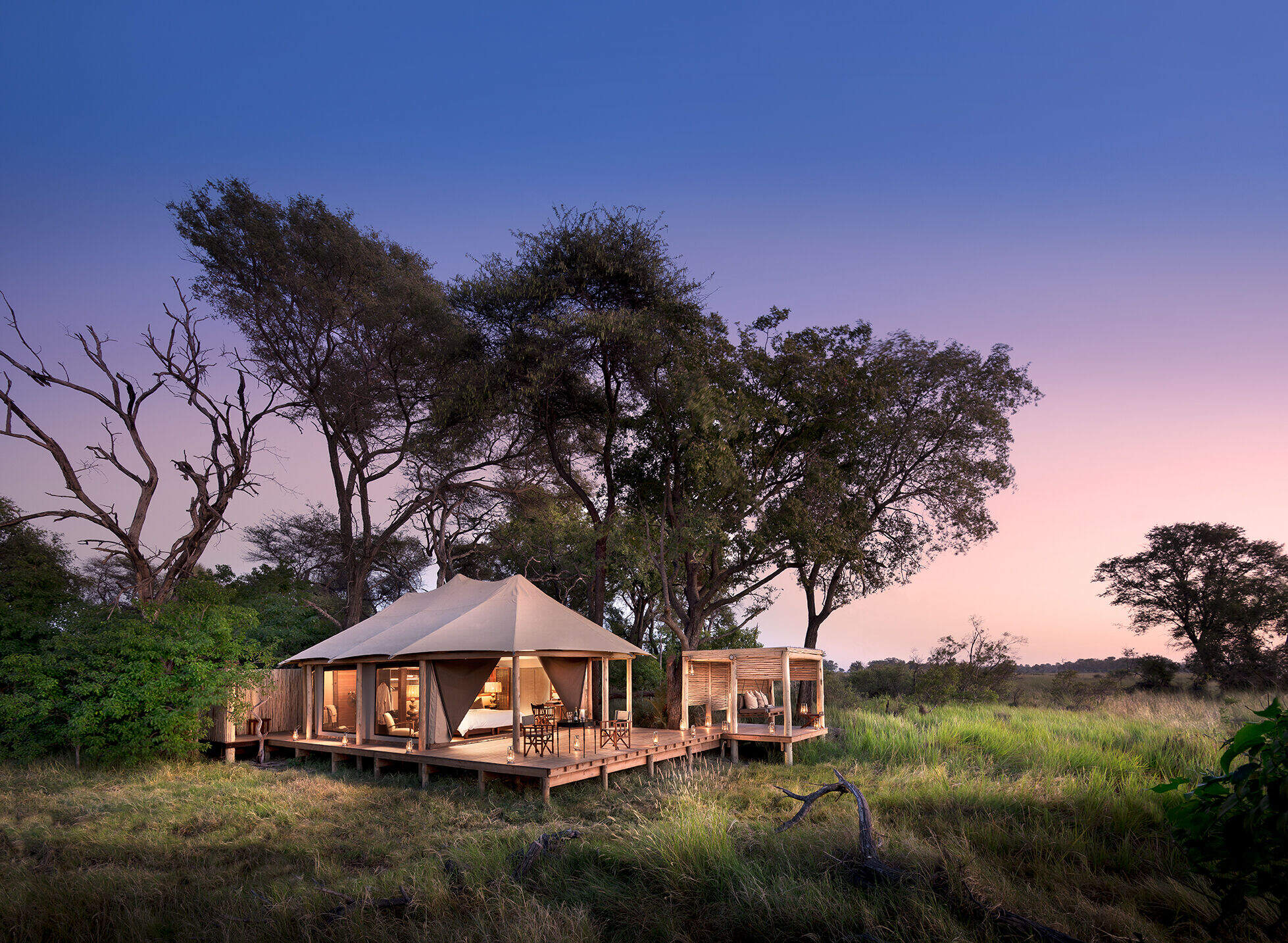
Nxabega Tented Camp
Nxabega offers a selection of both land- and water-based activities, plus very good guiding, food and service, but game viewing can be somewhat erratic.
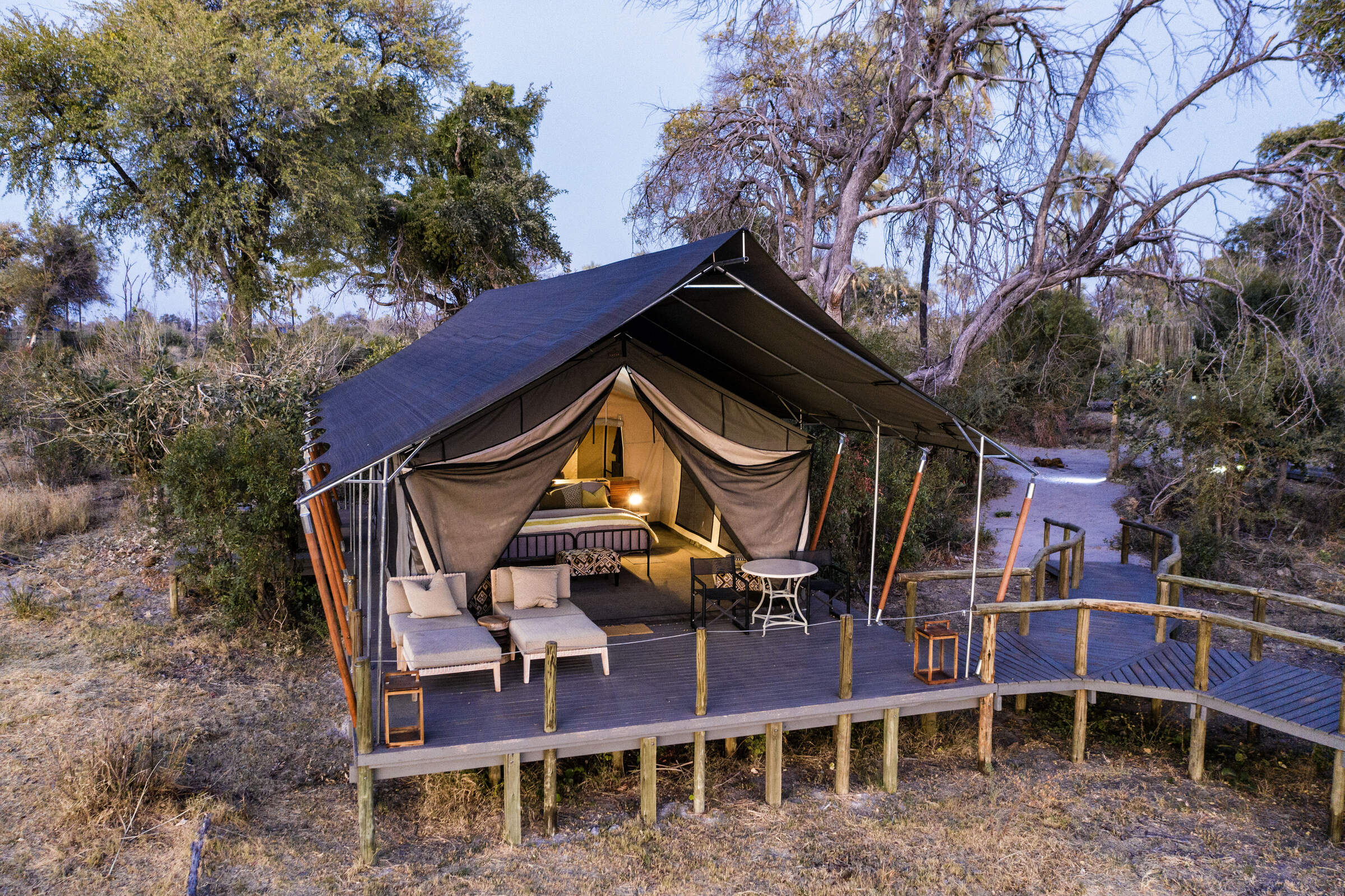
Gomoti Plains
Overlooking a tributary of the Gomoti River, Gomoti Plains Camp is a classically designed camp with very comfortable tents in a good game-viewing area.
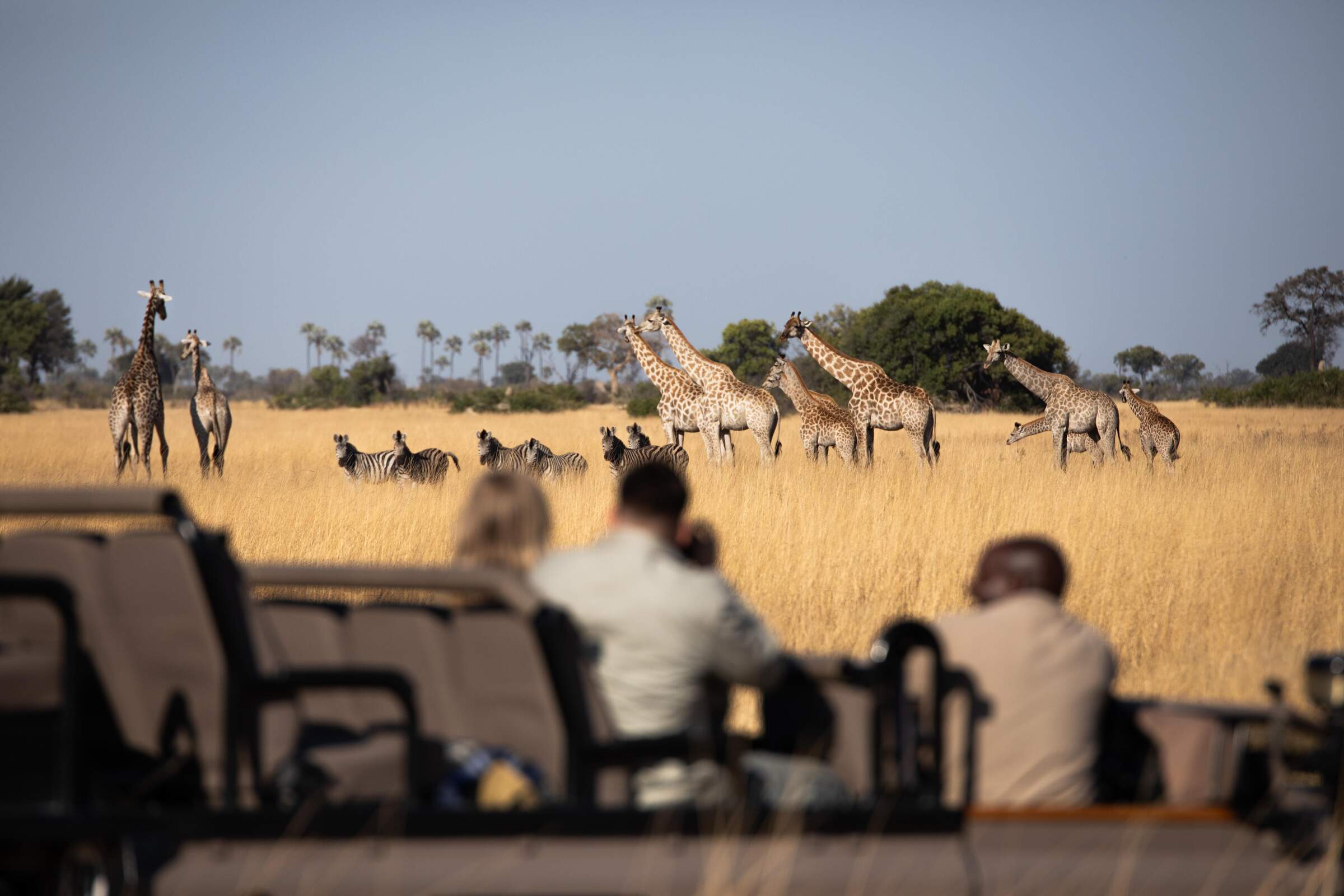
Tubu Tree Camp
A traditional tented camp with a distinctive tree-house feel, Tubu Tree offers some of the best game viewing in the Jao Reserve.
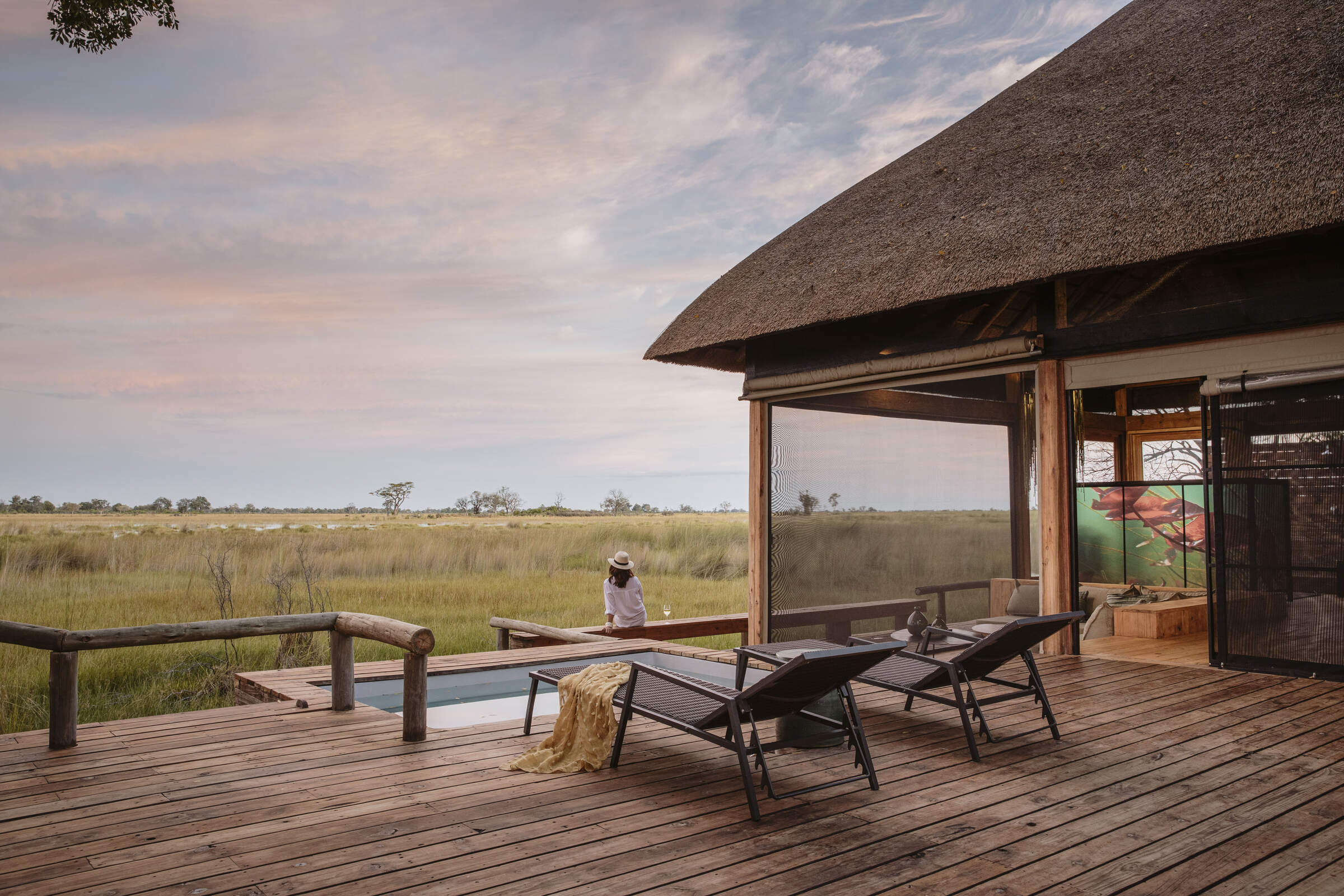
Vumbura Plains
Indulgently stylish and luxurious, Vumbura Plains offers superb game viewing and birding on an exceptionally varied private reserve.
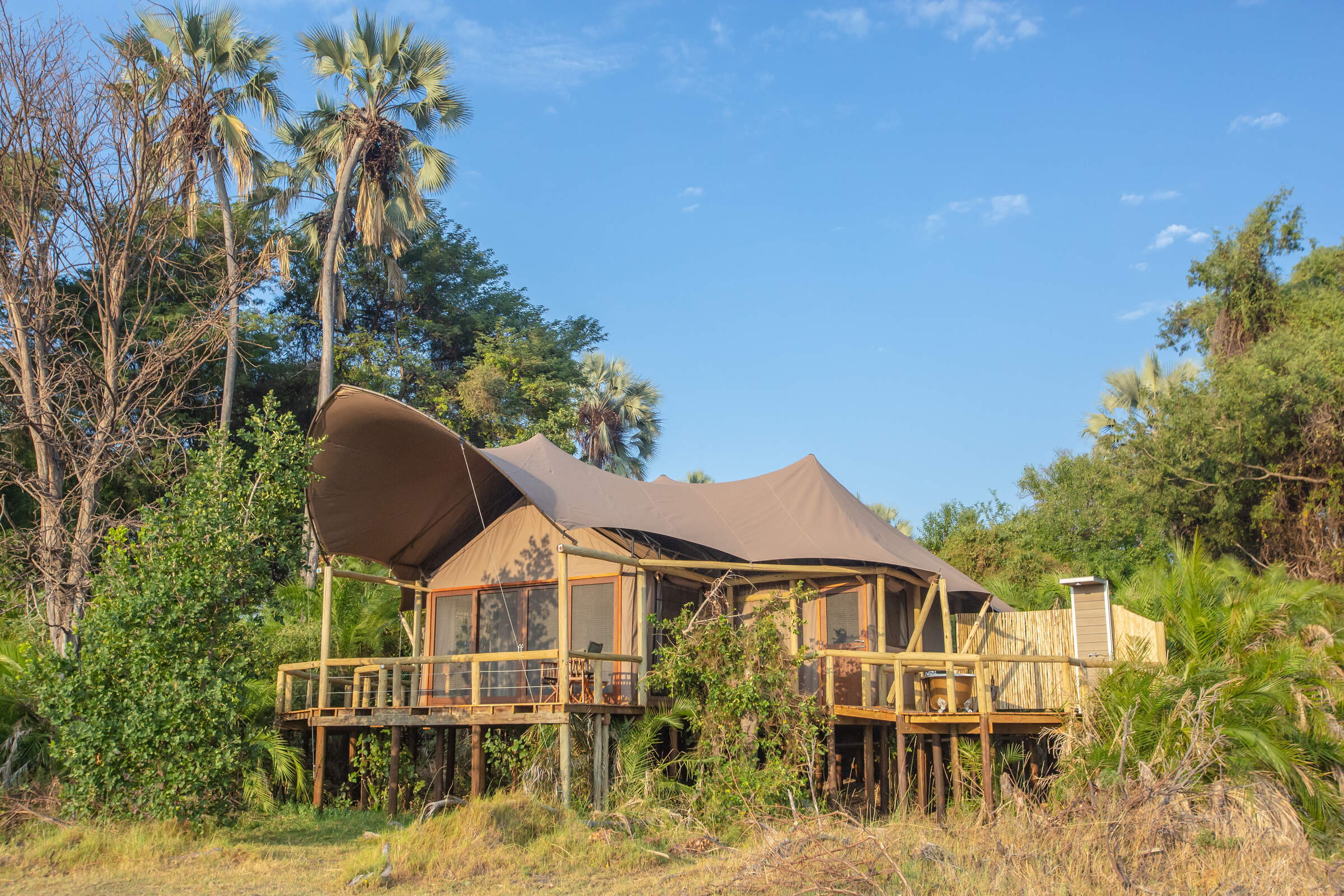
Jacana Camp
Jacana Camp is a small safari camp with an informal island feel; it is ideal for water-based activities in the Delta and offers excellent birdwatching.
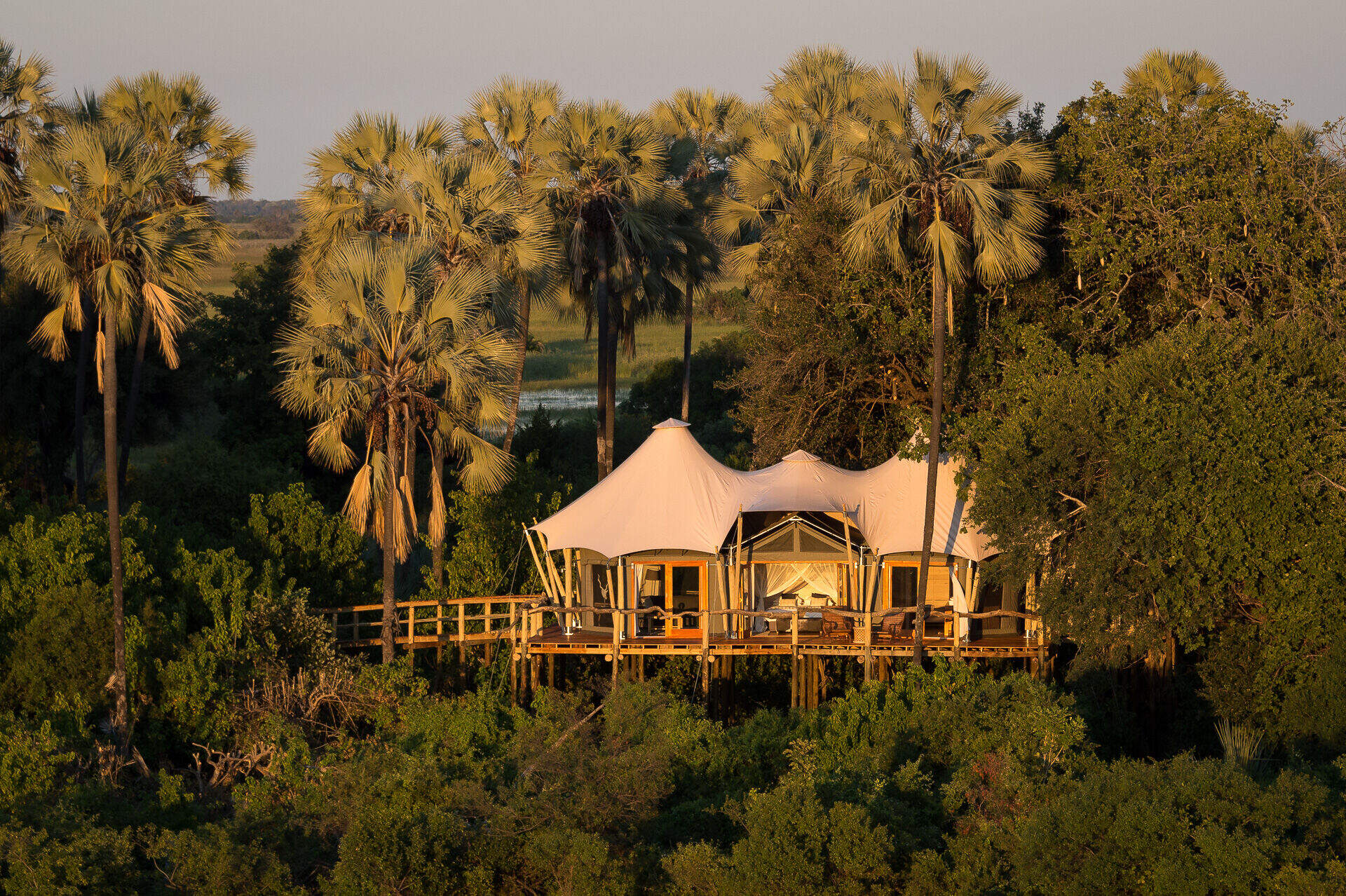
Kwetsani Camp
Deep in the Delta, overlooking a floodplain, Kwetsani Camp is a small, high-end camp with good access to areas for land and water-based activities.
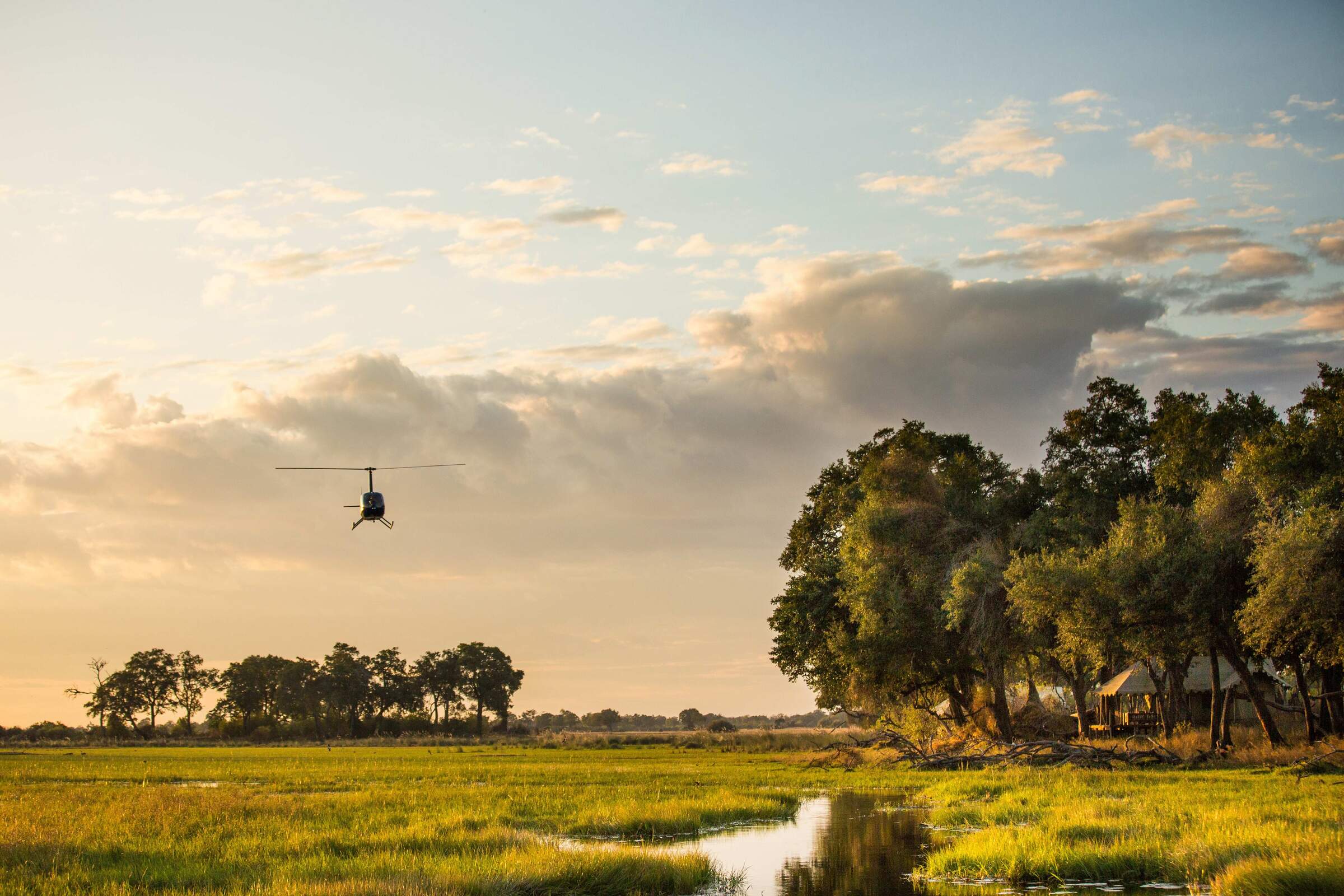
Duba Explorers Camp
Intimate and elegant, Duba Explorers Camp promises a firm safari focus in a remote corner of the Okavango, led by a team who value the highest guiding and hosting standards.
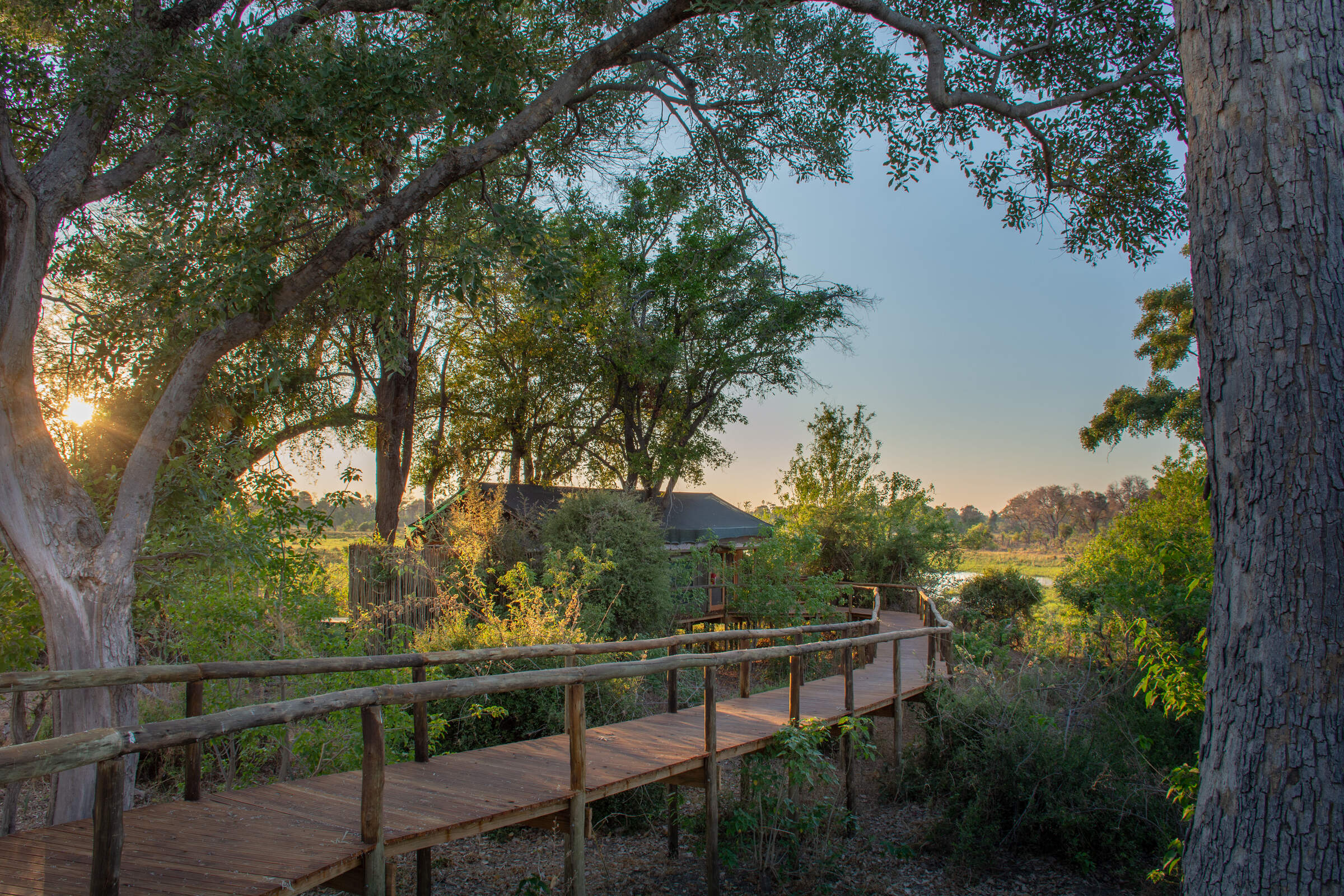
Mma Dinare
Beautifully located in a private concession overlooking the Gomoti River, the traditional Mma Dinare is very well-priced for the Okavango Delta.
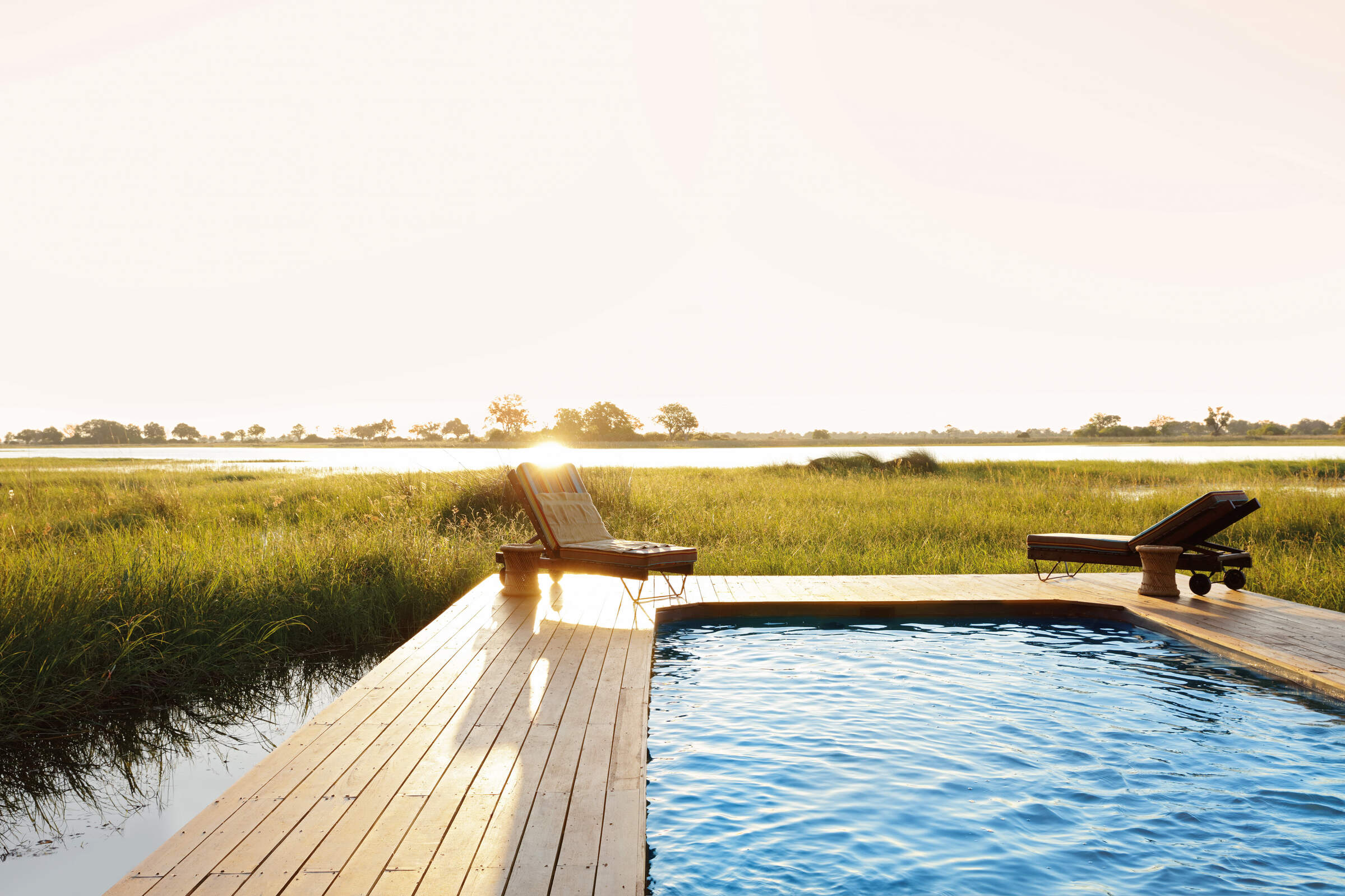
Mapula Lodge
For an affordable yet varied safari encompassing a range of eco-systems, the traditional Mapula Lodge takes a lot of beating.
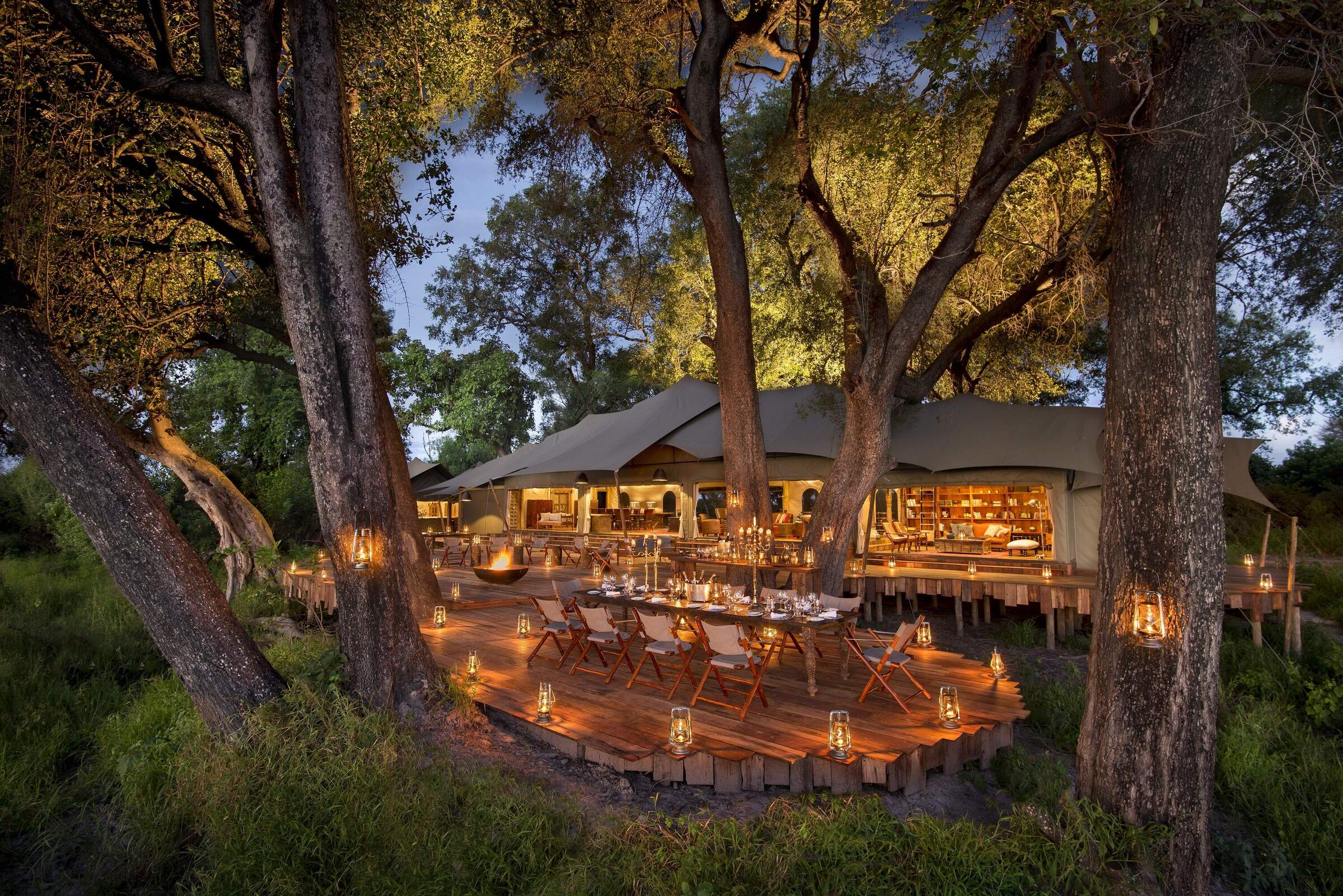
Duba Plains Camp
Duba Plains Camp is a traditional yet luxurious safari camp, best known for the thrilling lion behavior interaction that is often see during the day.
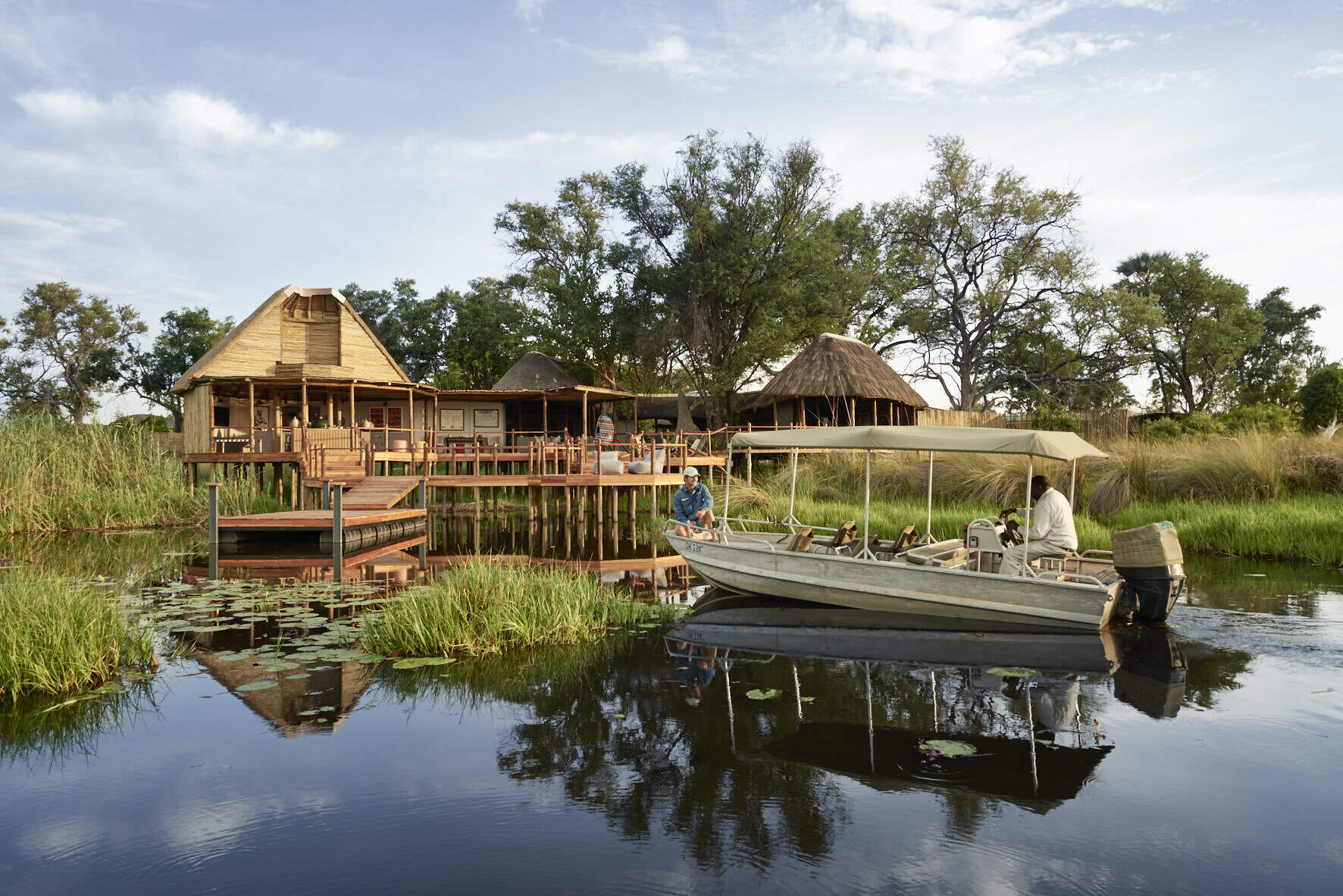
Baines' Camp
Baines' Camp is a well-run, intimate camp in a pretty part of the Okavango, offering a range of activities and the option to spend a morning walking with elephants.
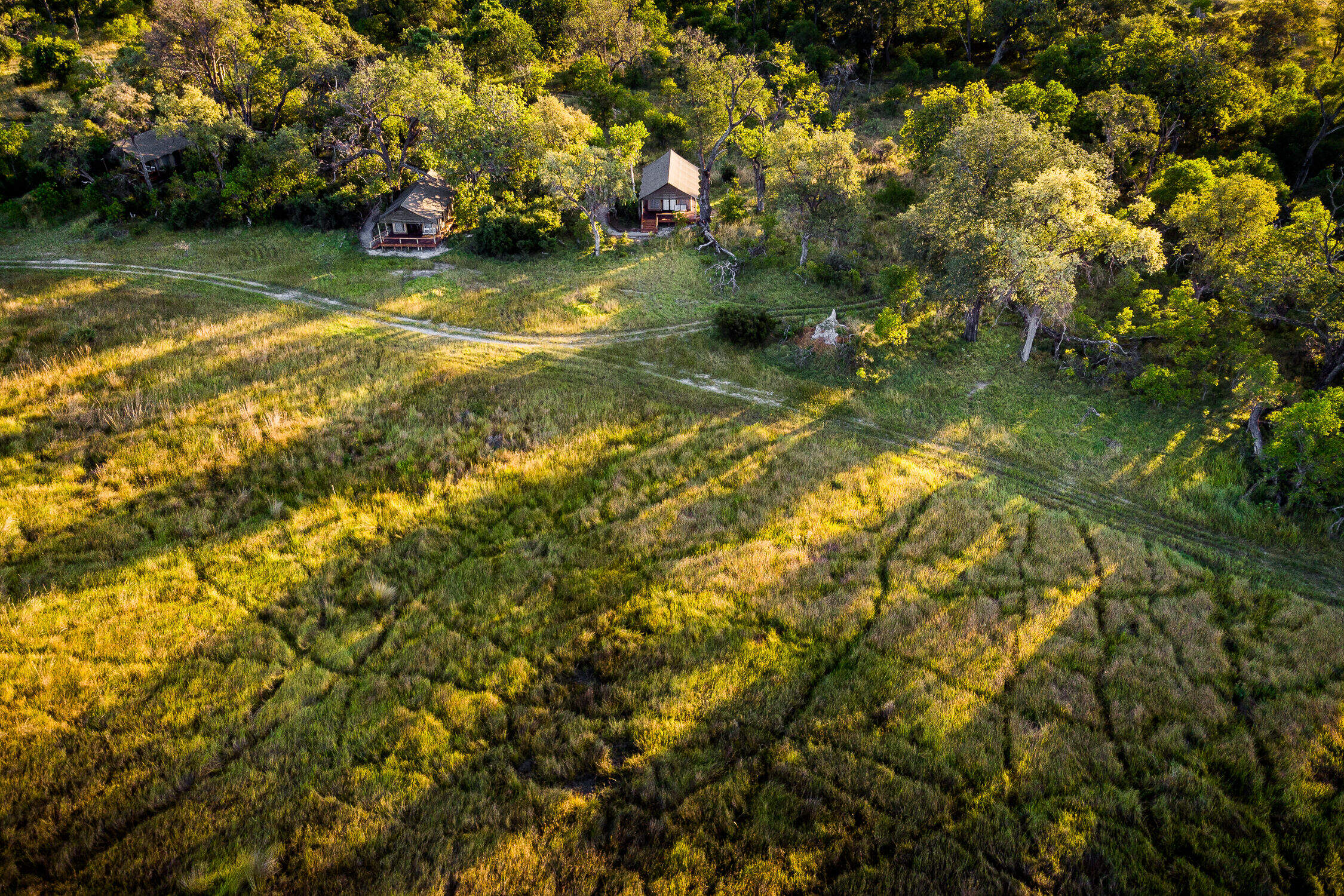
Stanley's Camp
In a private concession south of Moremi Game Reserve, Stanley's Camp offers 4WD game drives, seasonal water activities and a superb elephant interaction.
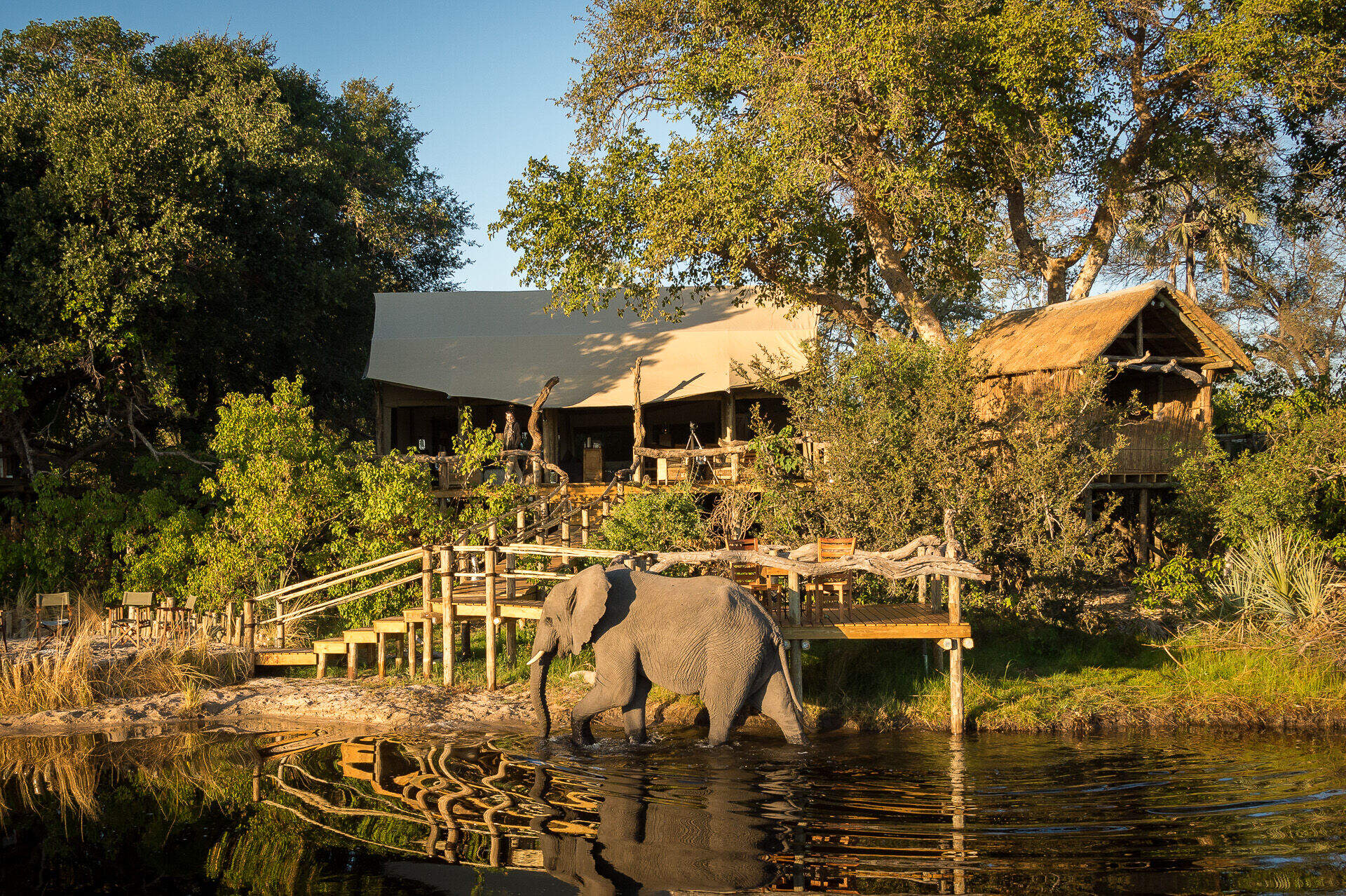
Little Tubu
Little Tubu is a new, traditional camp with just three tented chalets and a distinctive tree-house feel. The areas around it can be explored by water and land-based activities year round.
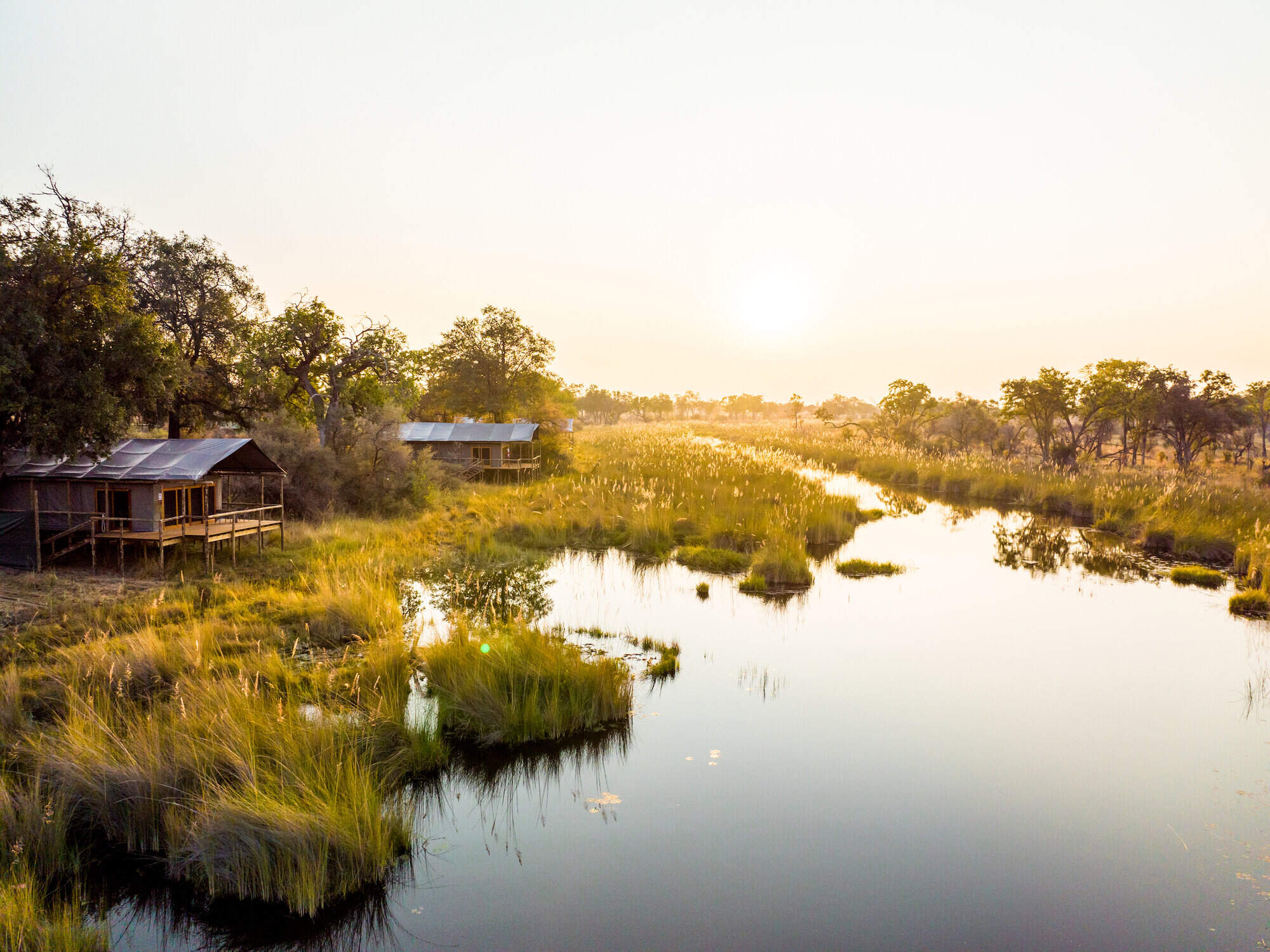
4 Rivers
4 Rivers is a new camp in a previously in accessible area of the excellent Kwara concession.
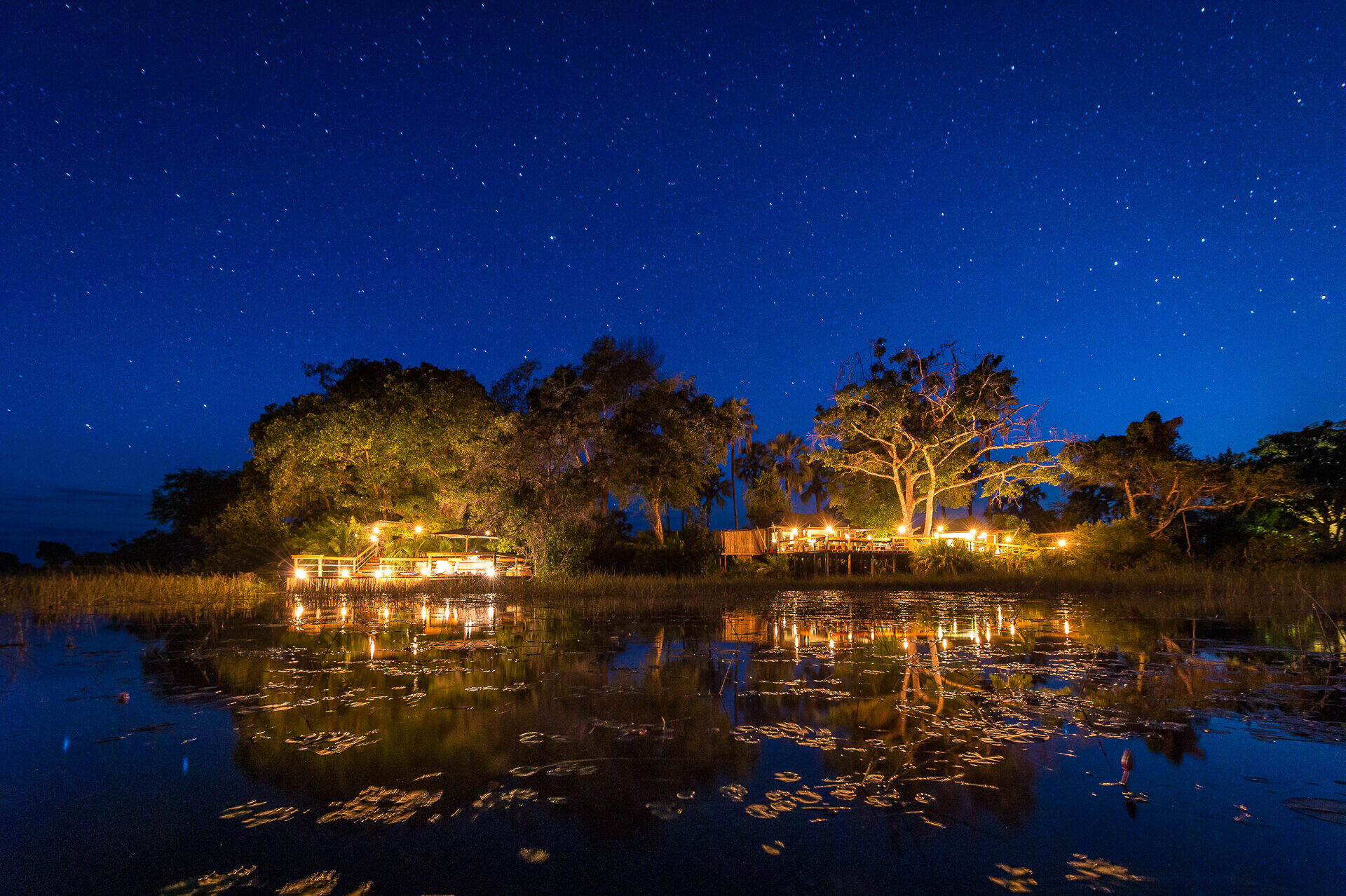
Pelo Camp
In a pristine wilderness environment deep in the Okavango Delta, the seasonal Pelo Camp is tented yet comfortable, with activities focusing on excursions by mokoro.
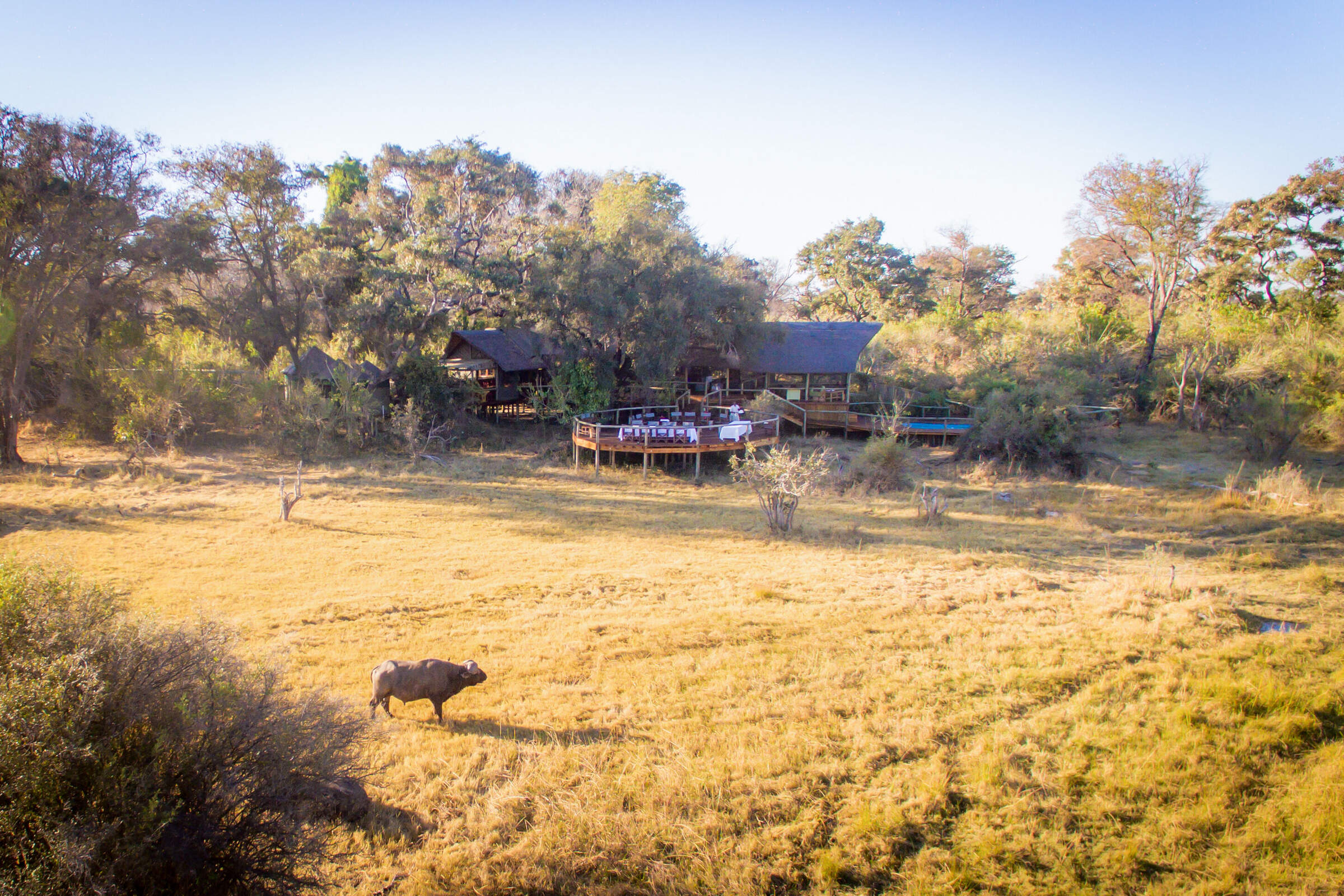
Rra Dinare
Located in a private concession in the southern reaches of the Okavango Delta, overlooking the Gomoti River, Rra Dinare is a traditional-style, well-priced camp.
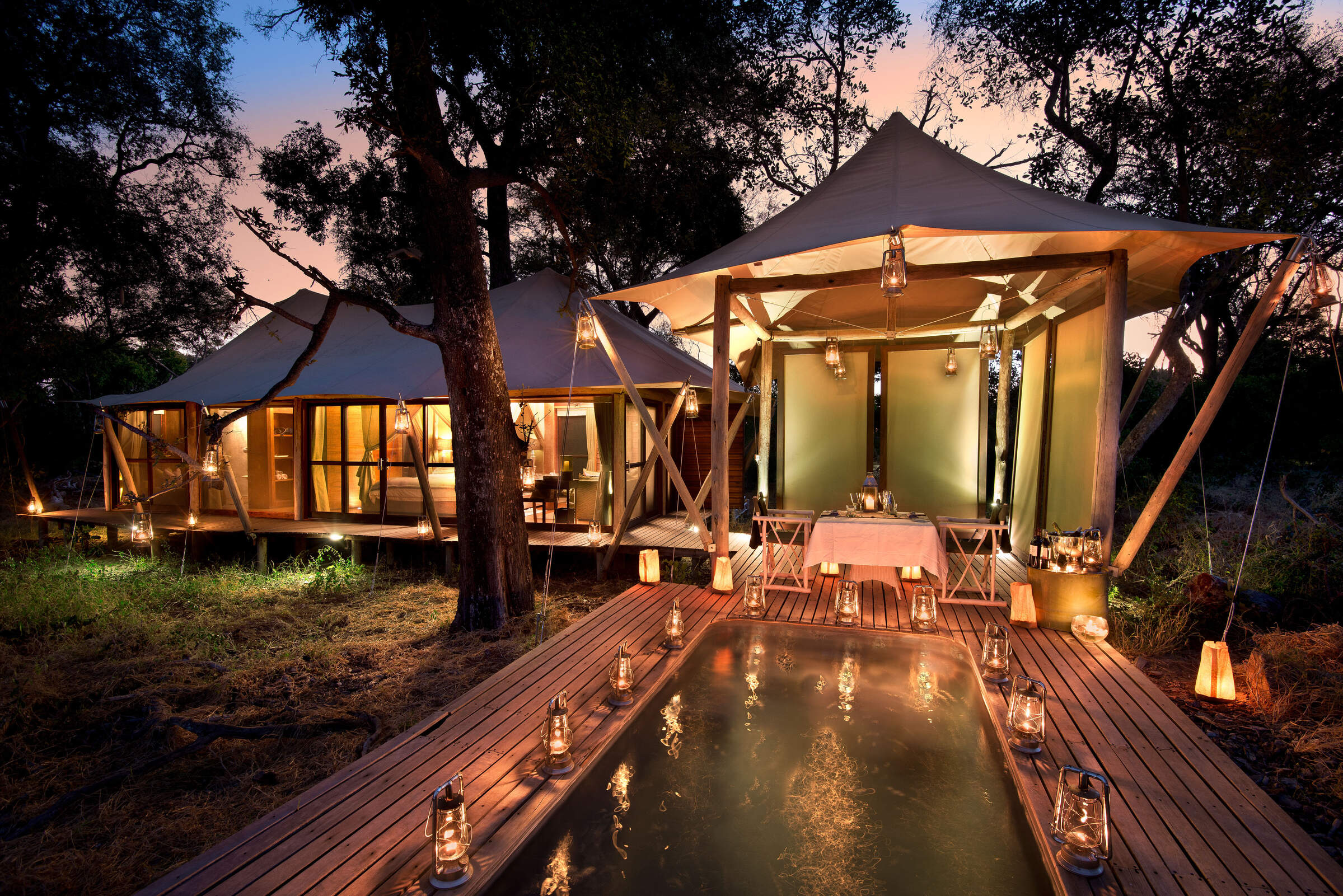
Xaranna
Xaranna is a plush tented camp amongst the idyllic waterways and islands of the Delta. Each air-conditioned tent has a plunge pool. Water activities and pampering are the focus here.
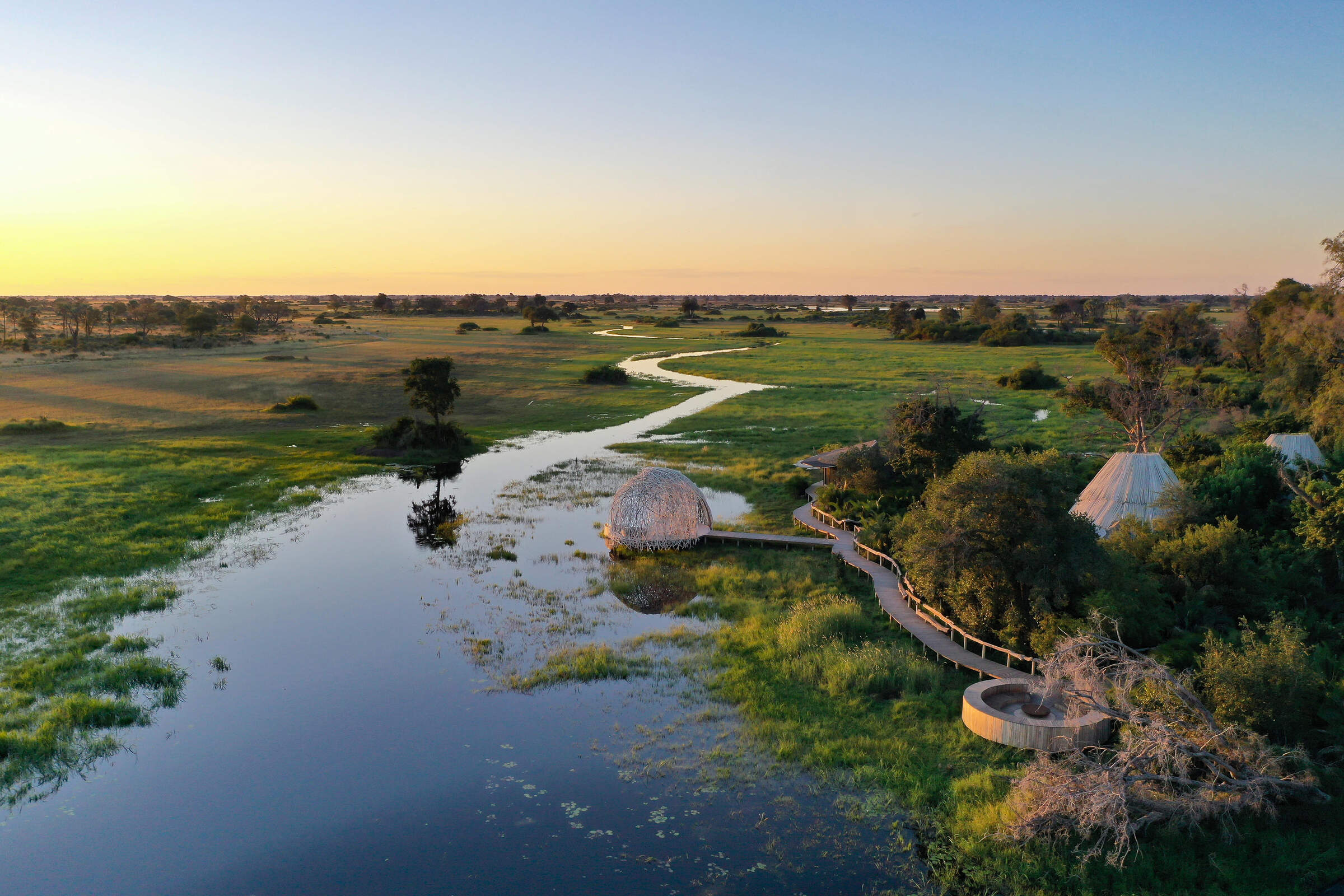
Jao Camp
In a beautiful area with fantastic water activities, Jao combines an idyllic location with high levels of luxury and service, and a top-end spa.
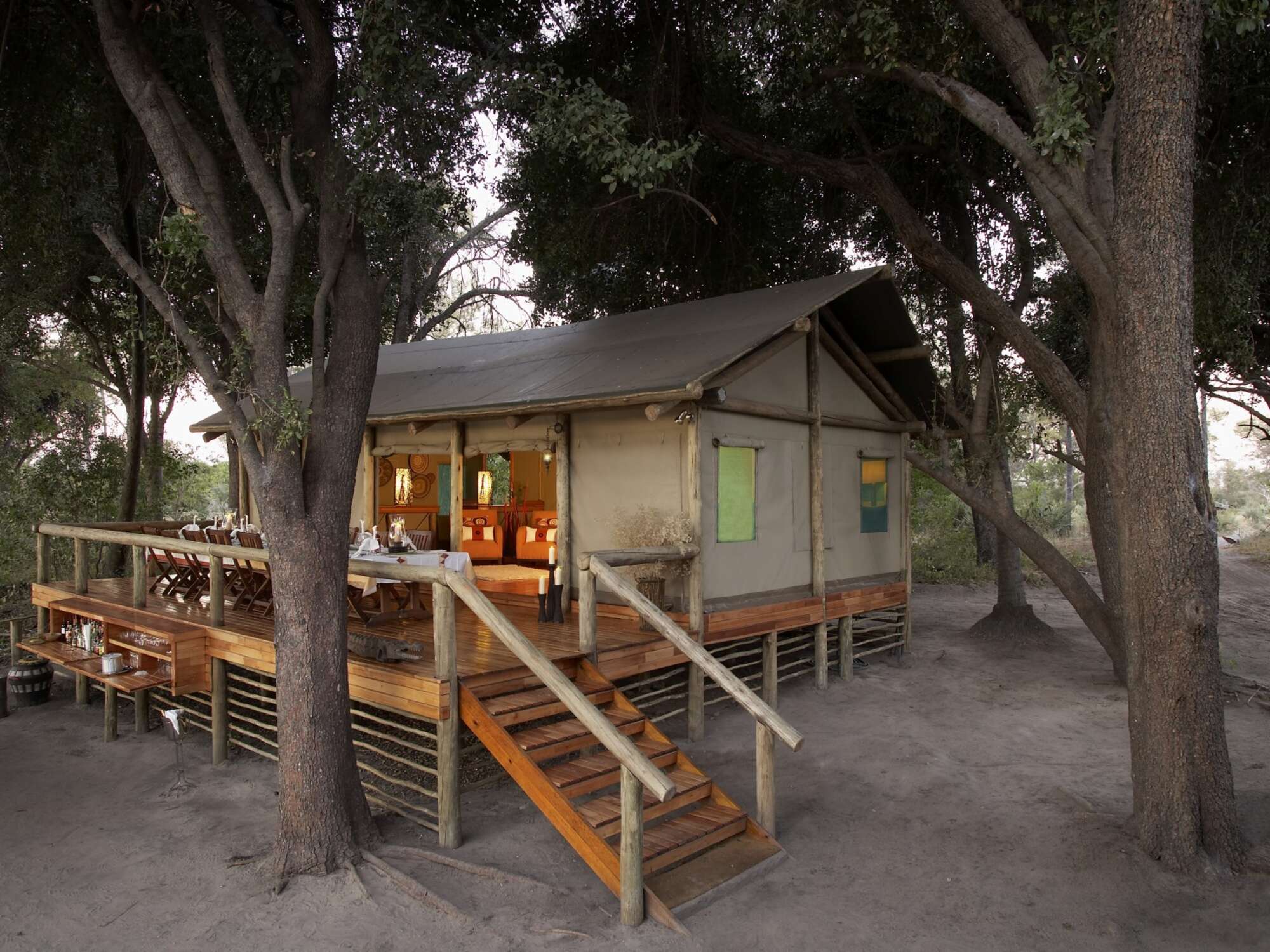
Seba Camp
Seba Camp is a luxury camp in a lovely location that offers the full range of water and land safari activities, depending on the time of year. This camp is particularly suitable for families.
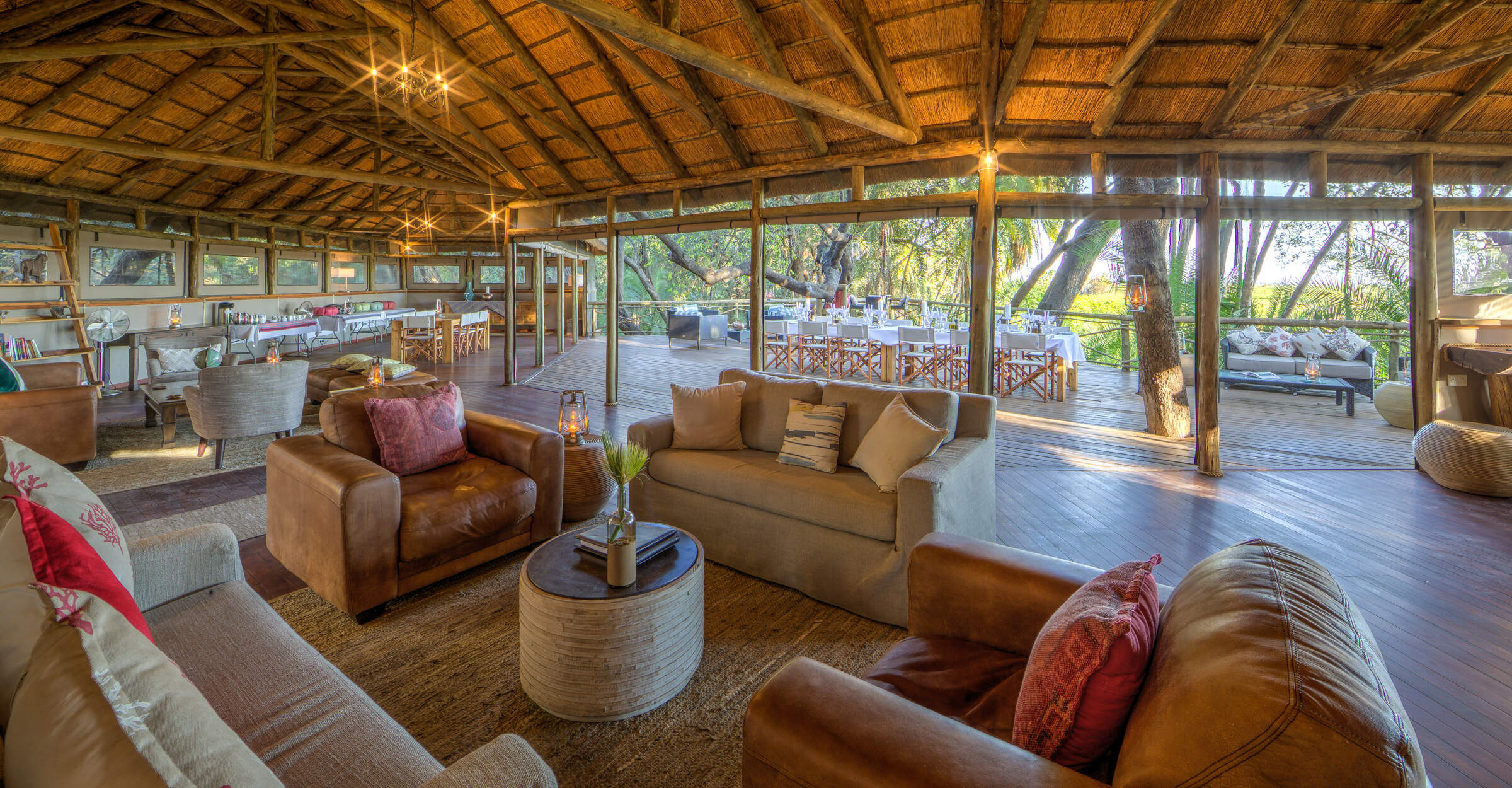
Setari Camp
Setari Camp stands on an island dotted with palm trees, close to the base of the Okavango’s ‘Panhandle"
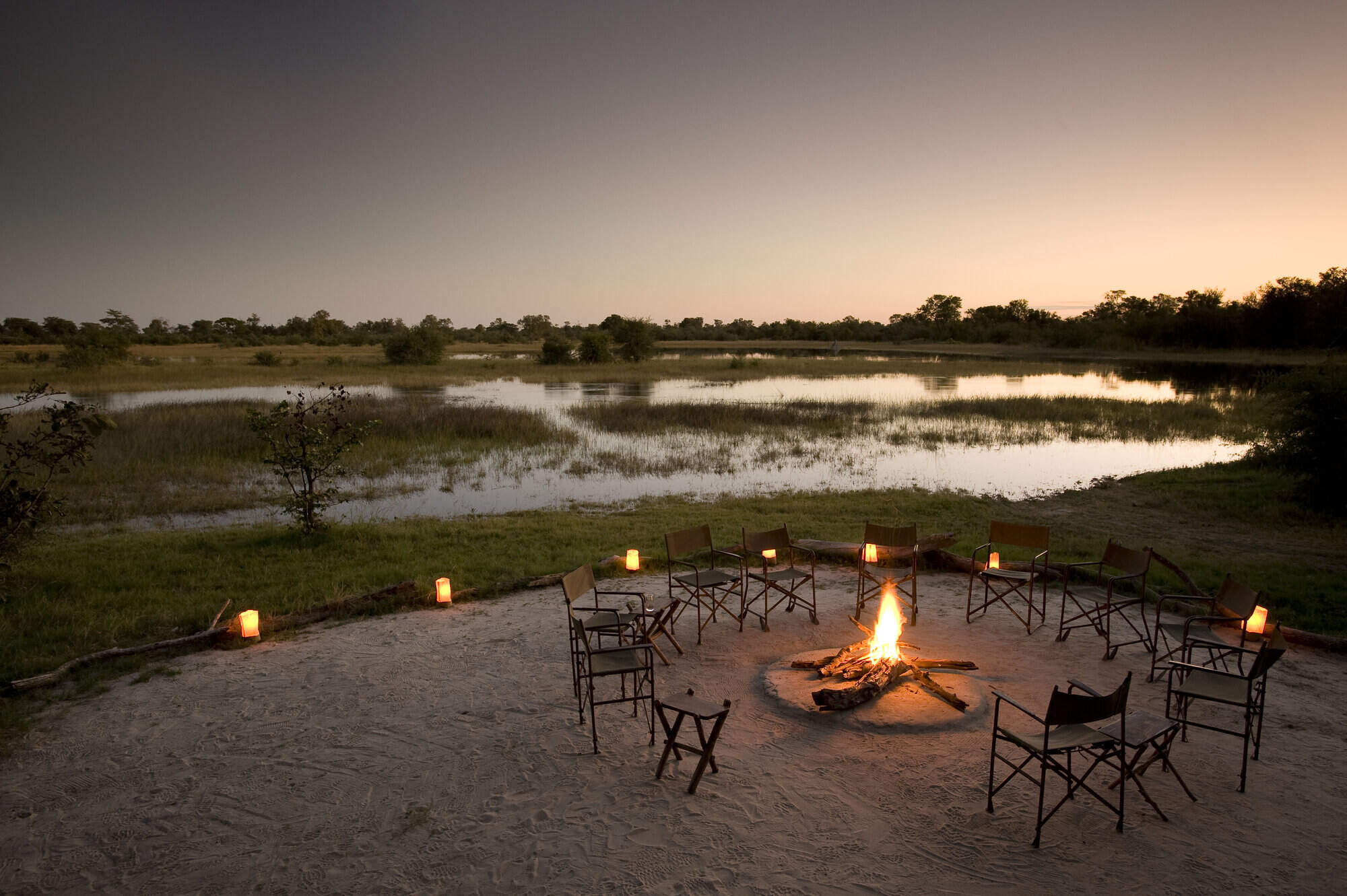
Okavango Explorers
The traditional, tented Okavango Explorers Camp offers a mix of walking, canoeing and game drives led by great guides in a wildlife-rich area.
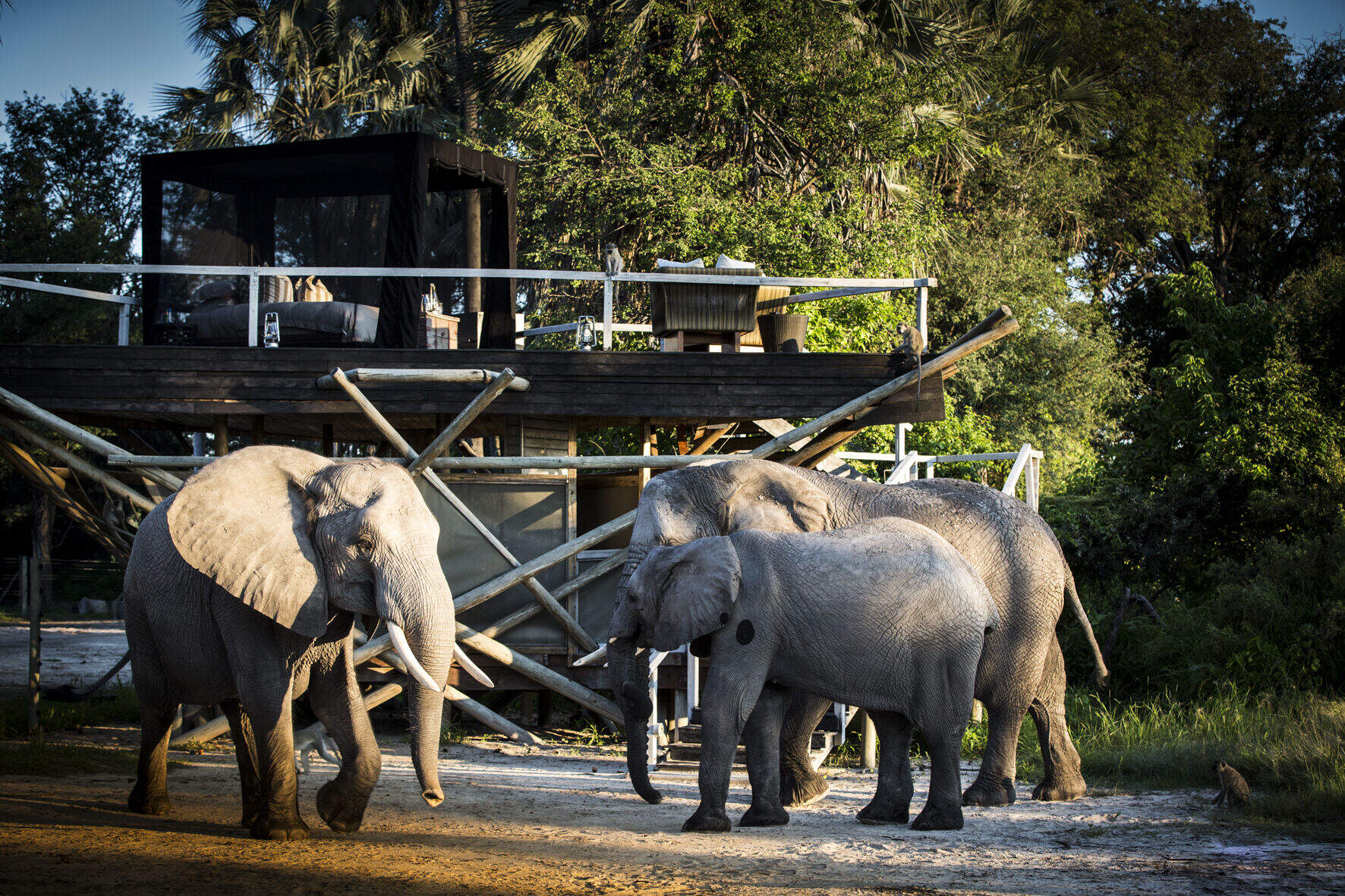
Abu Camp
Abu Camp is an exclusive safari camp on the western side of the Botswana's Okavango Delta - offering superb elephant-back safaris and opportunities to walk with them too.
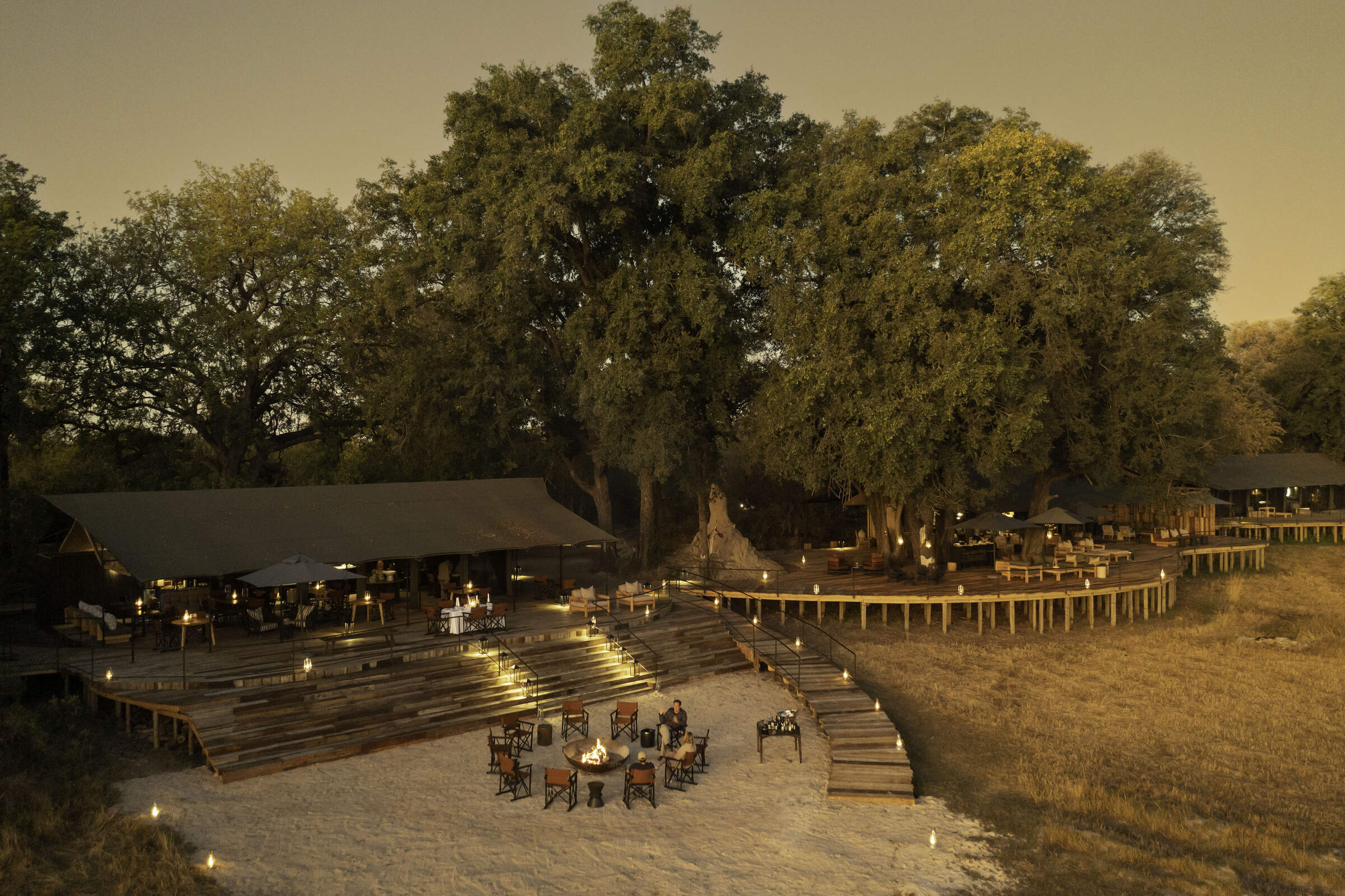
Kiri Camp
Kiri Camp is the latest Okavango offering from the excellent team behind Machaba. In an exciting new location in the heart of the Delta we cannot wait to visit this new camp.
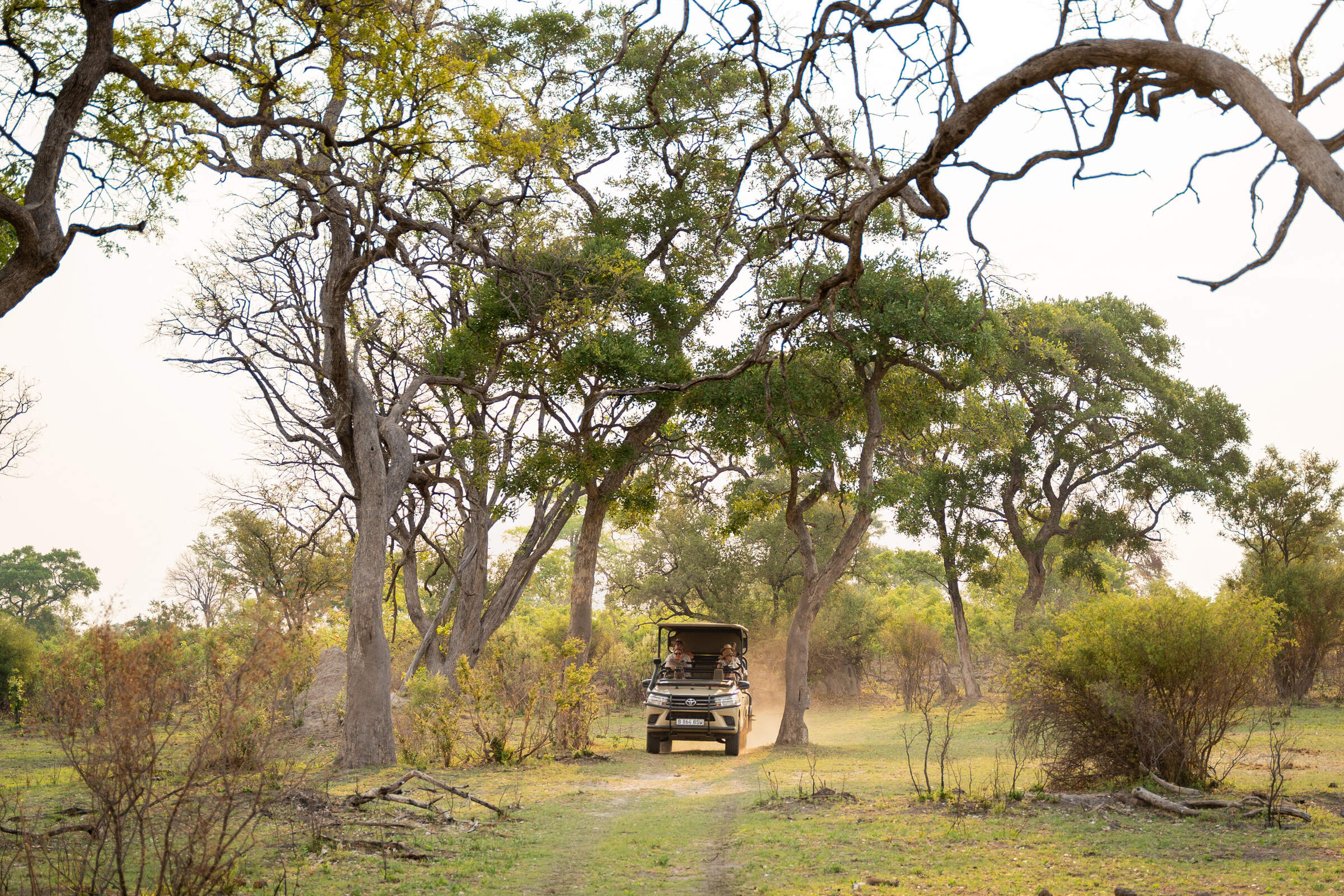
Karangoma
New for 2024, Karangoma is a classic, tented camp offering walking, canoeing and game drives, in partnership with the local Bukakwe San clan.
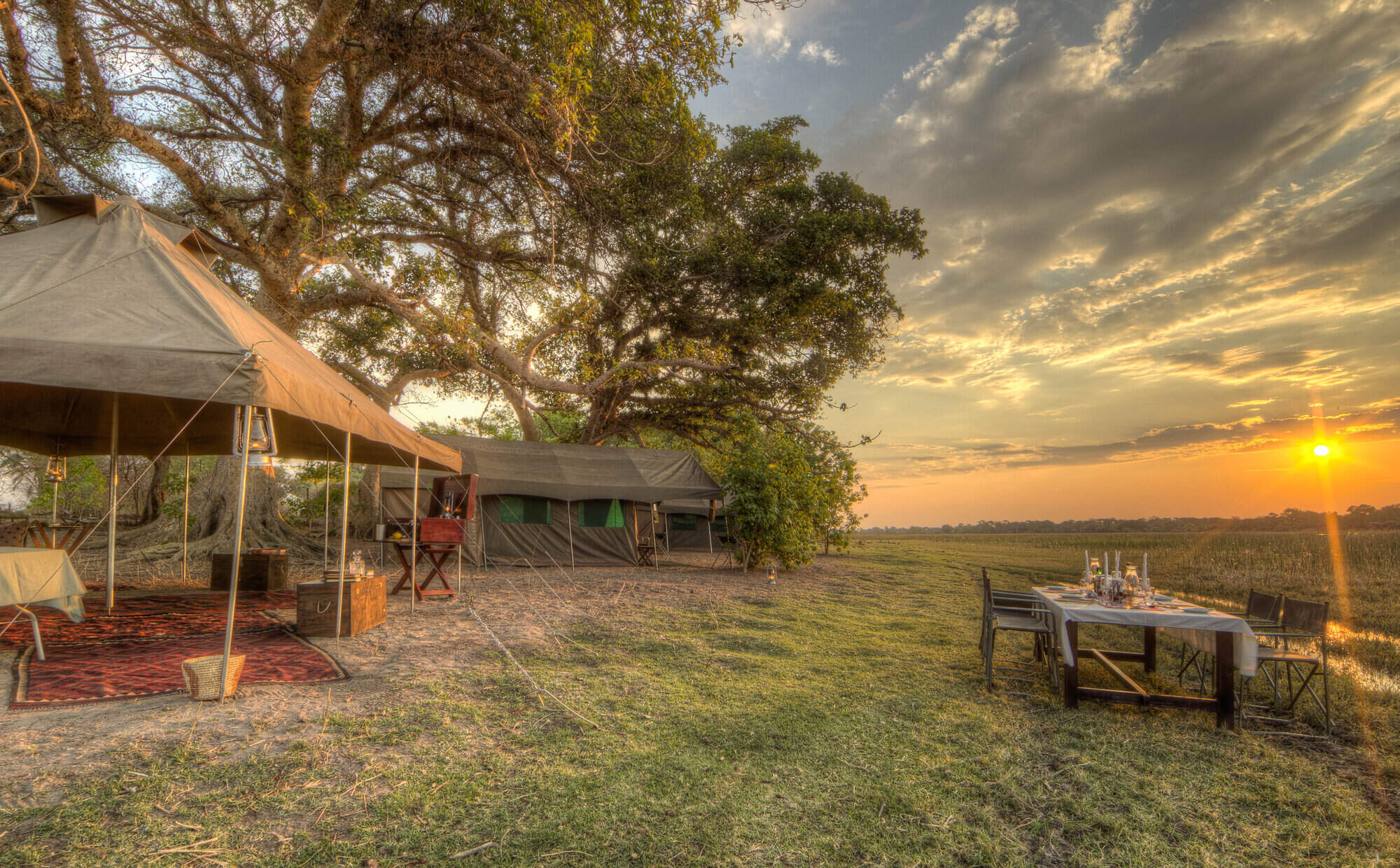
Okavango Walking Safari
The Okavango Delta Walking Safari camps in a secluded Okavango Delta Reserve where there are few roads; the ideal location for a walking trail led by an expert guide.
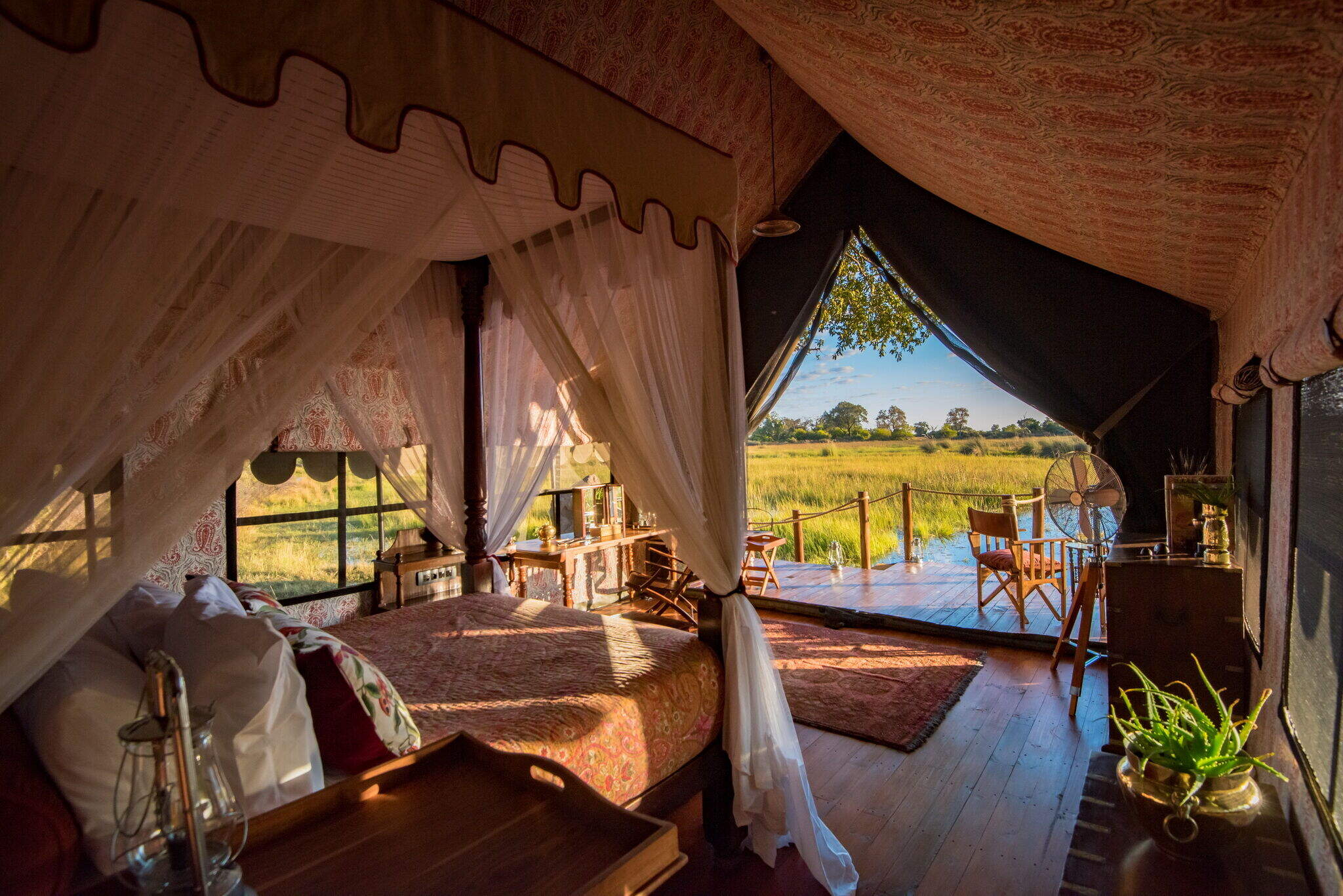
Duke’s Camp
On a remote island within a large concession, the romantic Duke's Camp and smaller Duke’s East are nestled among mature trees overlooking wildlife-rich plains and waterways of the Okavango.
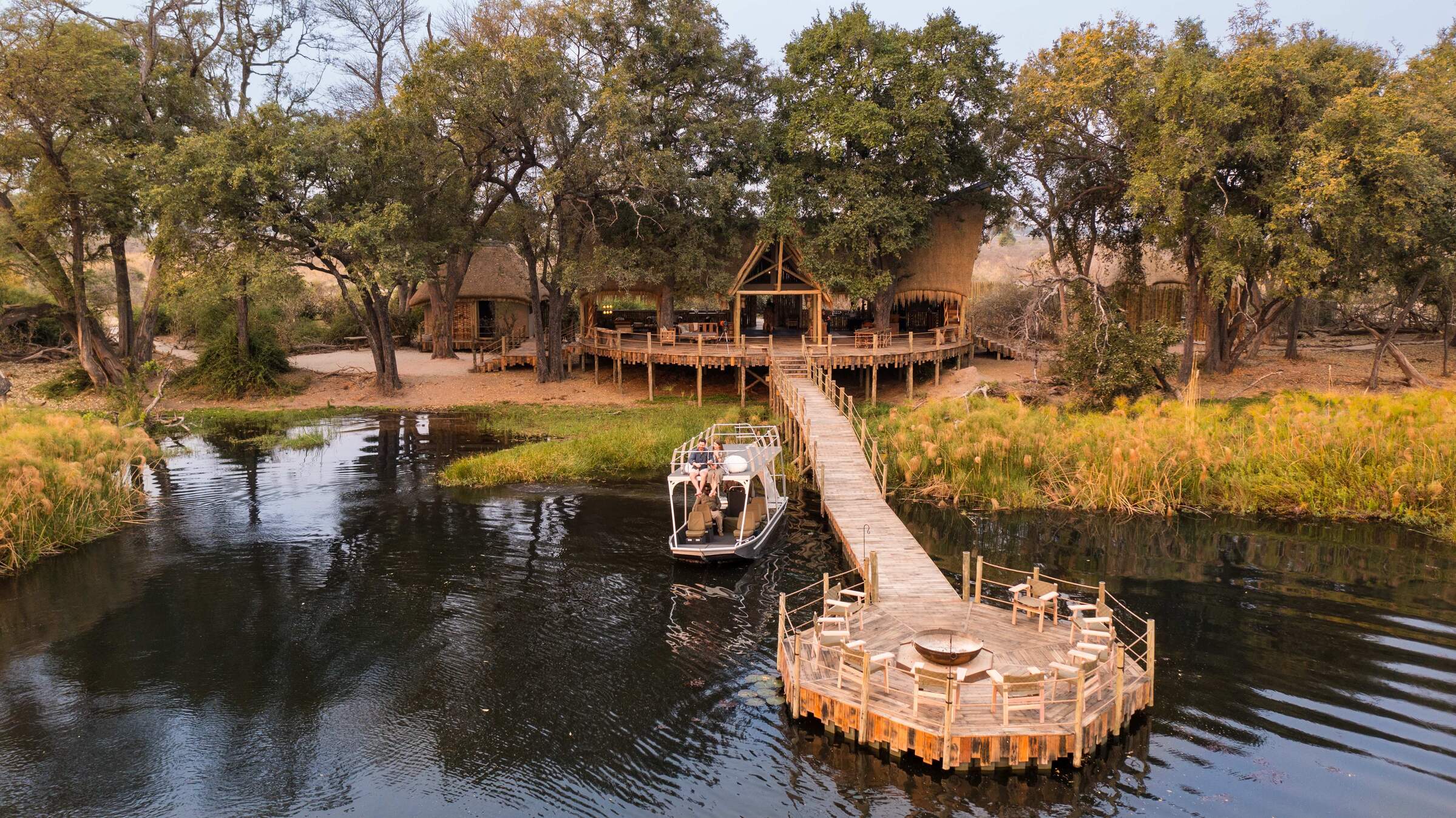
Sitatunga Island Camp
Tucked away in a pristine corner of the Okavango Delta, the exclusive Sitatunga Private Island is a water-based camp offering boating, mokoro trips and fishing.
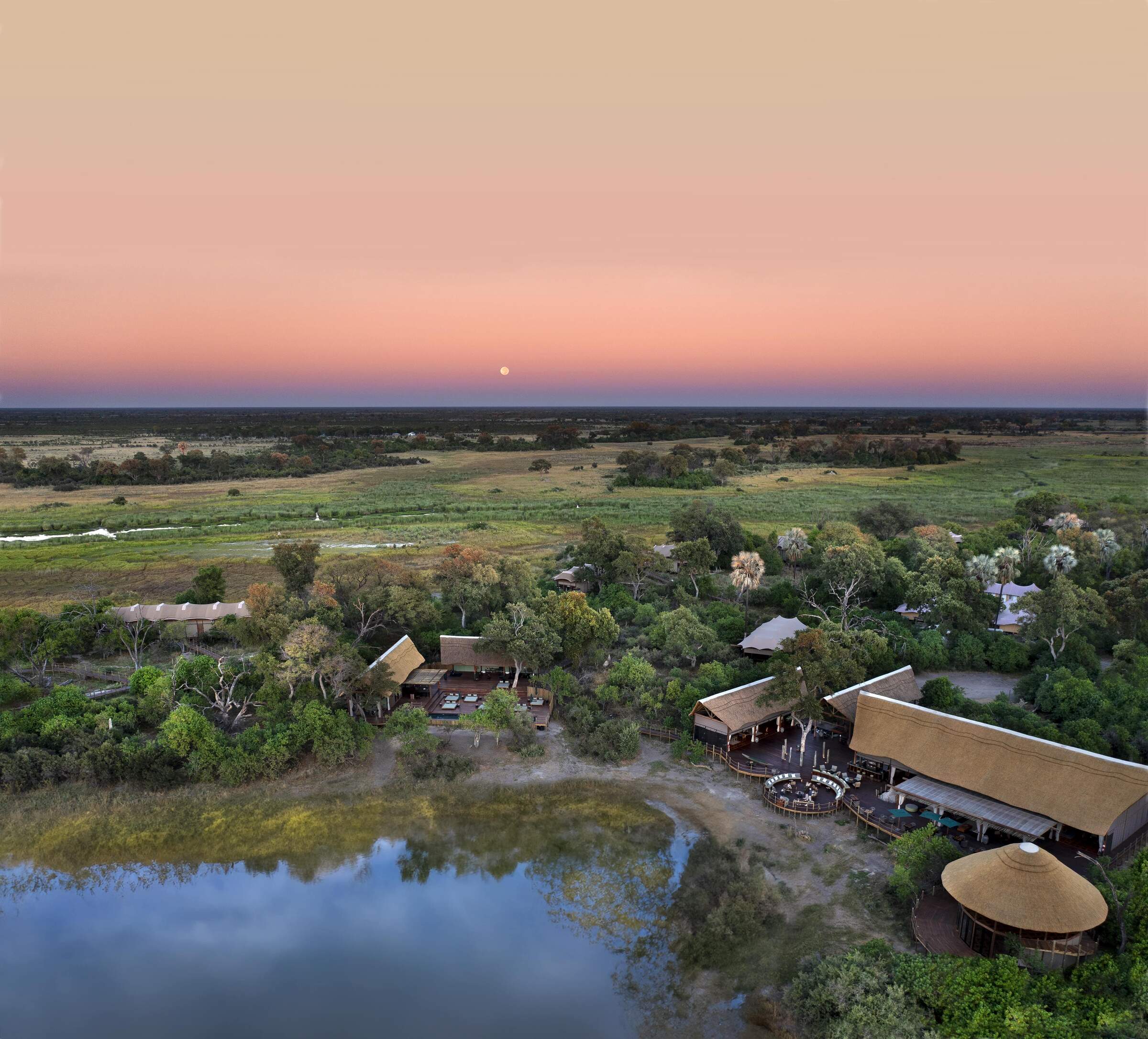
Atzaro Okavango
With a high level of tasteful luxury promised at Atzaro, we think it will be best suited to travellers seeking a touch of pampering alongside their safari.
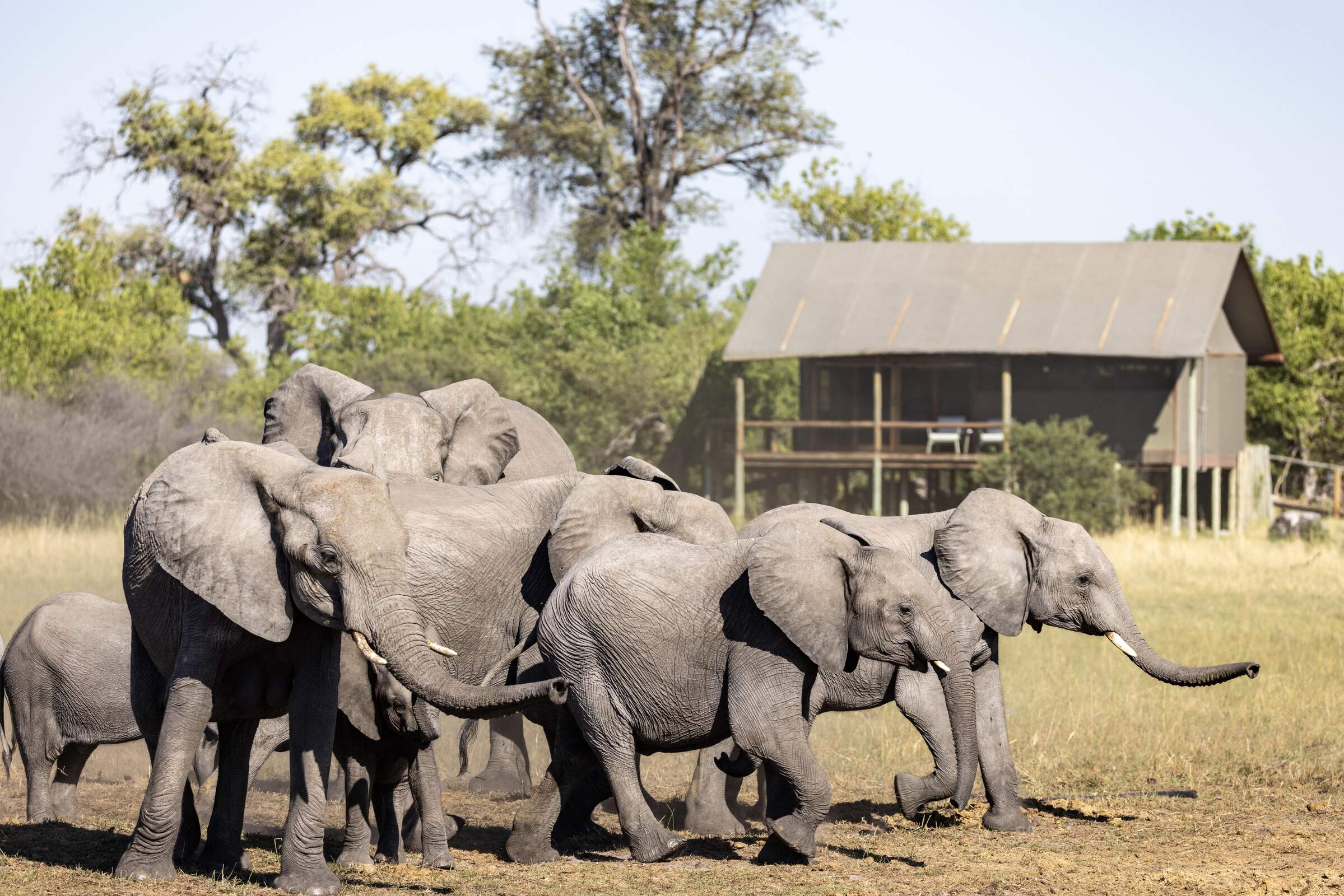
Mokolwane
Deep in the heart of the Okavango, the simple Mokolwane focuses on wildlife viewing in a large, untouched area.
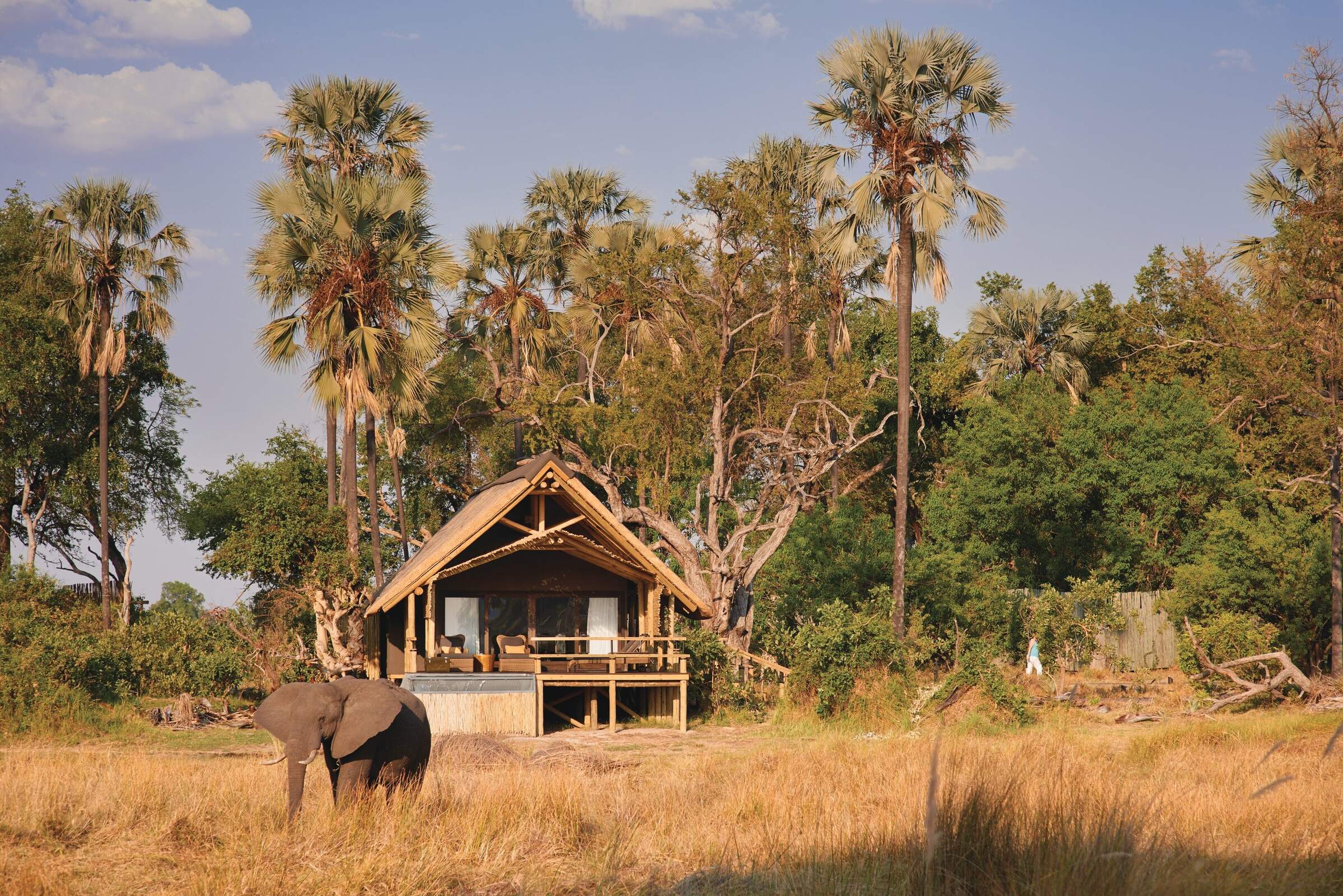
Eagle Island Lodge
Eagle Island Lodge is a luxurious camp with international-style facilities including air conditioning and intercom in each room; offering water based activities in the Okavango Delta.
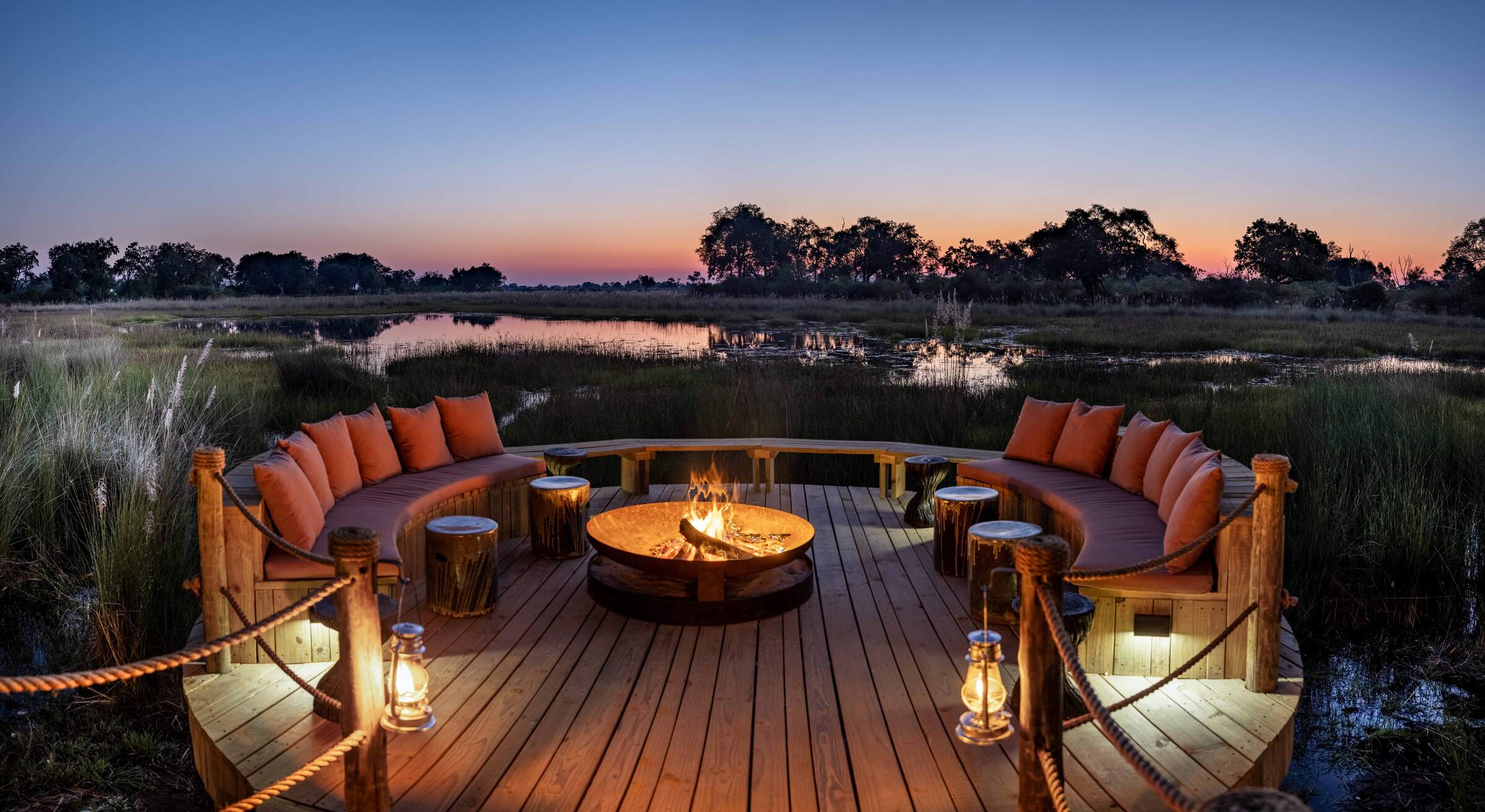
North Island Okavango
Deep in quintessentially “Okavango” territory, between deep-water and dry-land habitats, North Island focuses on a luxury safari experience with very good wildlife viewing opportunities.
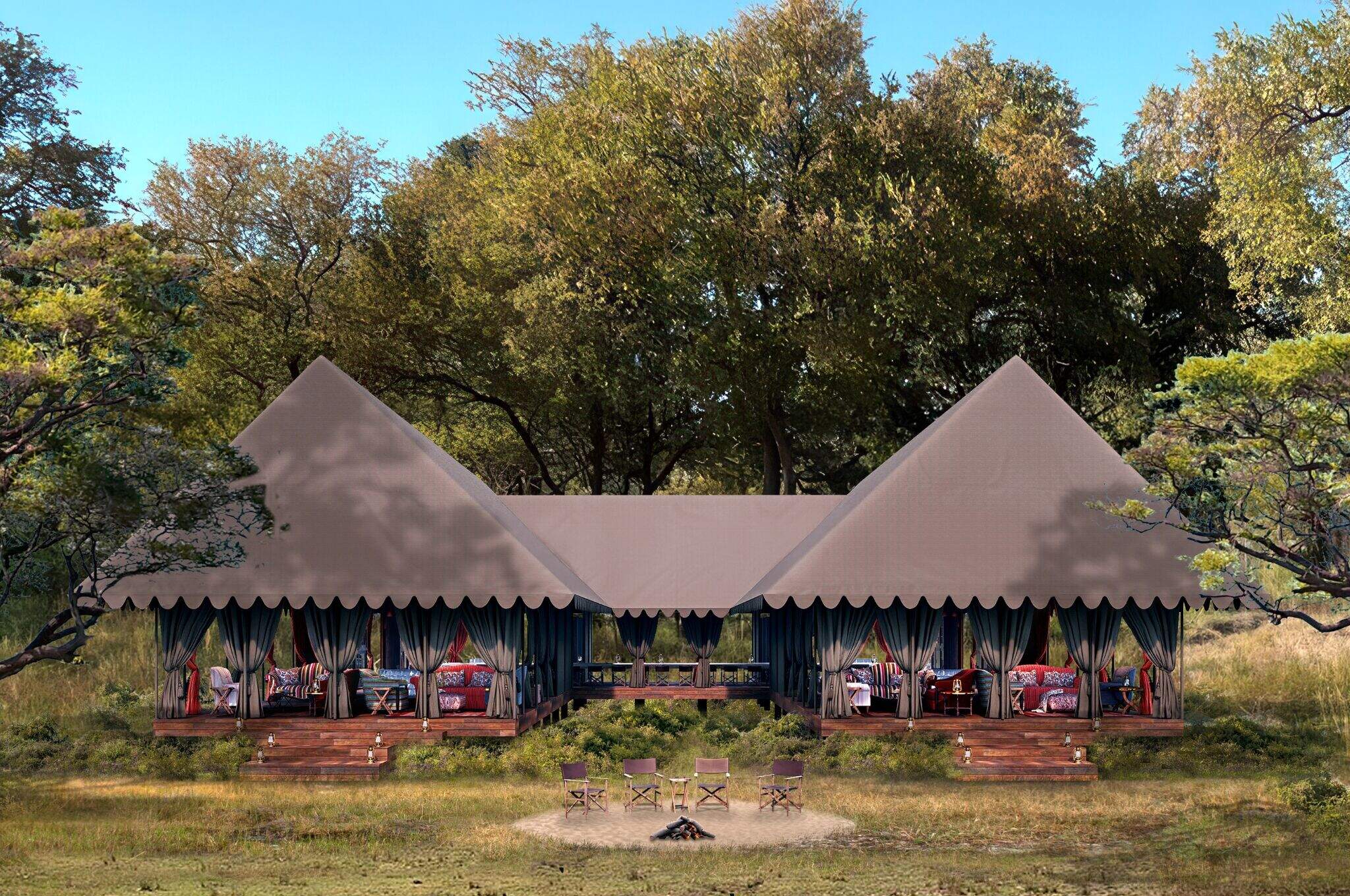
Mbamba
Deep within the northern Okavango, the classically styled Mbamba is set to open in a wildlife-rich private concession in April 2025.
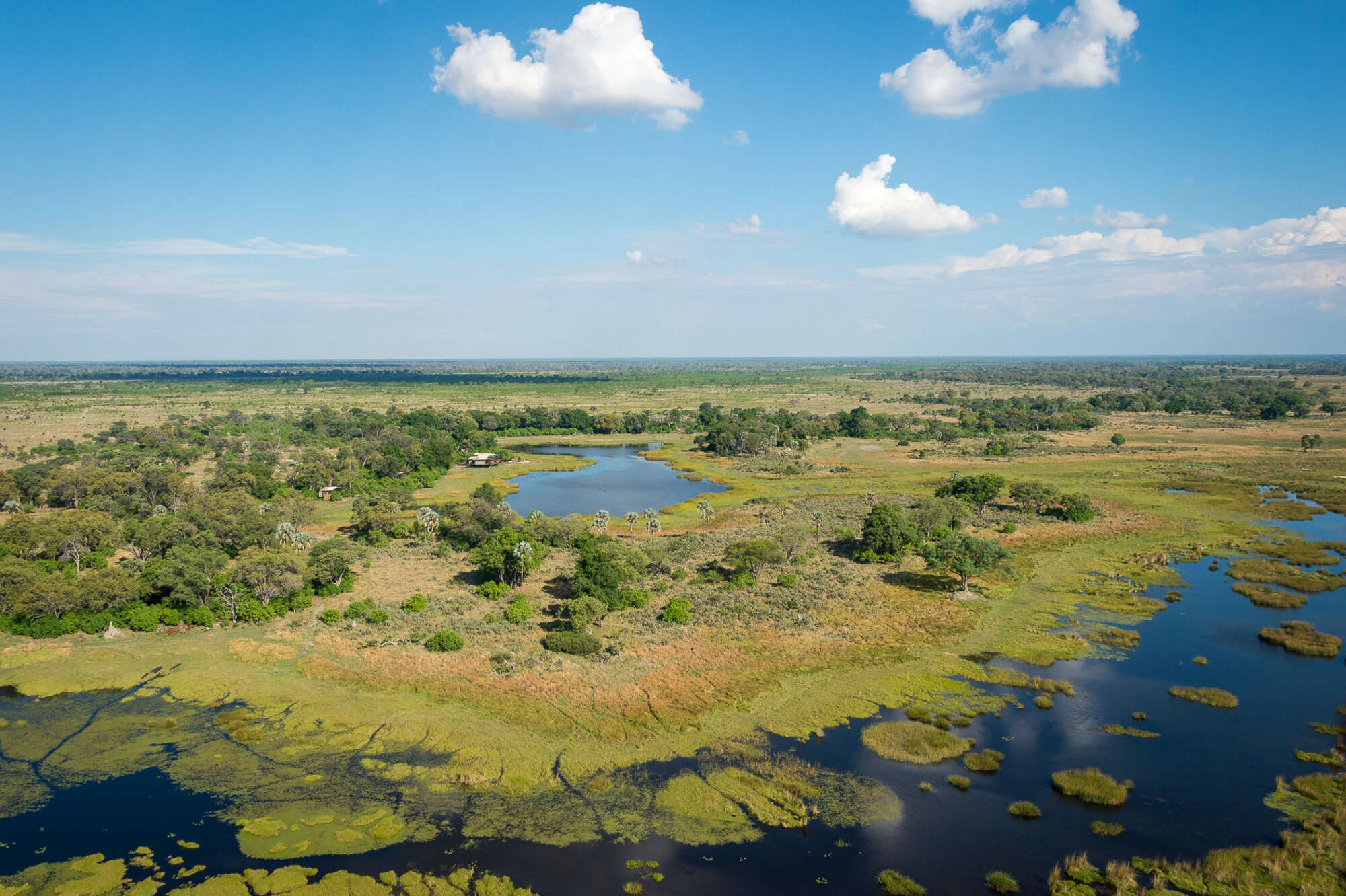
Qorokwe Camp
Luxurious and contemporary, the relatively new Qorokwe Camp is a gem in the Okavango Delta, offering land- and occasionally water-based activities in a prime wildlife area.
When to go to Okavango Delta Safari Reserves
Our month by month guide: What it's like to visit Pom Pom Camp in Okavango Delta Safari Reserves
Jan
Feb
Mar
Apr
May
Jun
Jul
Aug
Sep
Oct
Nov
Dec
Okavango Delta Safari Reserves in January
January marks the peak of the rainy season in the Okavango Delta. Evening rains are often short but heavy, accompanied by occasional dramatic thunderstorms. Temperatures remain high, although cooler than the preceding months of October to December. Wildlife can be harder to spot as animals spread out across the lush floodplains.
This month is a birdwatcher’s paradise, with migratory species in abundance over flooded areas. Rising water levels in parts of the Delta make mokoro safaris possible, offering serene and immersive experiences. The vibrant greenery and dramatic skies provide stunning opportunities for photography. With relatively low rates and fewer visitors, January is ideal for those seeking a quieter, budget-conscious Botswana safari.
- Warm temperatures with frequent evening showers
- Birdlife at its most spectacular in the Delta
- Wildlife dispersed, but insects and smaller creatures abound
- Excellent availability in Delta lodges and camps
Our view
A good time to visit, with pros & cons
Weather in January
Okavango Delta Safari Reserves in February
February mirrors January’s weather patterns, with heavy rains and slightly cooler temperatures. The Delta’s landscape is at its greenest and teeming with life. Smaller animals, insects, and vibrant birdlife dominate, as many species raise their young. The rains create temporary pools and waterholes, further dispersing larger game, while thick vegetation and tall grass adds to the challenge of spotting big wildlife.
However, Moremi Game Reserve and select areas of the Delta still offer excellent game viewing opportunities. Rising water levels enhance water activities, with boat safaris providing unique access to the Delta’s watery beauty. February is particularly rewarding for photographers seeking lush landscapes and dramatic skies and birdwatchers, with many migratory species present.
- Warm with occasional thunderstorms
- Many animals with young in the Delta
- Big game dispersed throughout wetlands
- Big game dispersed, but viewing improves in drier areas
- Lower visitor numbers and great lodge availability
Our view
This is not a great time to visit
Weather in February
Okavango Delta Safari Reserves in March
March marks the gradual end of the main rainy season in the Okavango Delta. Sunny days become more frequent, with occasional afternoon thunderstorms. The Delta remains lush and vibrant, with wildlife activity increasing as animals finish raising their young and begin congregating around permanent water sources.
Rising water levels make boat safaris a highlight, offering intimate access to the Delta’s waterways. Birdwatching is excellent, with both resident and migratory species thriving. With fewer visitors, March offers a quieter, more personal safari experience.
- Rains taper off but temperatures remain warm
- Occasional small thunderstorms in Delta
- Wildlife begins congregating around water sources
- Ideal conditions for boat safaris
- Few tourists and attractive rates at camps
Our view
A good time to visit, with pros & cons
Weather in March
Okavango Delta Safari Reserves in April
April brings clearer skies to the Okavango Delta, with the landscape remaining green and lush. Night temperatures begin to drop, especially in the southern Delta. The annual floods from Angola start to flow through the northern Delta, filling channels and lagoons, creating ideal conditions for water-based activities like boat safaris.
Wildlife viewing improves as vegetation thins and predator activity increases with cooler evenings. Moremi Game Reserve and the private concessions offer rewarding game drives, and walking safaris on the larger islands, such as Chief’s Island, become popular during this time. Birdwatching remains excellent, with many migratory species still present. April’s combination of pleasant weather, wildlife activity, and relatively low rates makes it a rewarding time to visit.
- Cooler evenings and occasional light showers
- Floodwaters begin to fill Delta channels
- Predator-prey interactions increase
- Ideal for walking safaris and boat trips
- Popular shoulder season, rates fairly low
Our view
A good time to visit, with pros & cons
Weather in April
Okavango Delta Safari Reserves in May
May is a popular time to visit the Okavango Delta, marking the last month of the shoulder season. The annual floods continue to spread through the Delta, transforming the landscape. Cooler mornings and evenings encourage predator activity, while thinning vegetation makes wildlife spotting easier, though some tall grasses may still obstruct views.
May offers excellent photographic opportunities with clear, crisp air. It's a favourite time for many visitors, combining good wildlife sightings with pleasant weather. Camp bookings throughout the Delta fill up quickly during this period.
This is a perfect month for scenic flights, offering breathtaking views of the advancing floodwaters. Mokoro trips through the Delta’s tranquil waterways provide a unique perspective on the environment. Camps start to fill quickly as the Delta’s combination of pleasant weather and excellent wildlife sightings makes it a favourite among safari-goers.
- Cool mornings and evenings with little rain
- Improved game viewing as Delta grasses thin
- Predator activity increasing in drier areas
- Scenic flights and water activities highly recommended
- Last month of shoulder season for camps
Our view
A very good time to visit
Weather in May
Okavango Delta Safari Reserves in June
June signals the start of the dry season in the Okavango Delta. Days are warm, with clear skies, while mornings and evenings can be cold, occasionally reaching freezing temperatures. The annual floods reach their peak, creating spectacular conditions for water-based activities like boat safaris along the Khwai River and in private concessions.
Wildlife concentrates around permanent water sources as surface water dries up, improving game viewing. The thinning vegetation and crisp, clear air make June perfect for photography. High demand for camp bookings reflects its popularity, as this month combines great game viewing and pleasant weather.
- Warm days, cold mornings and nights
- Peak floodwaters make boat safaris unforgettable
- Wildlife congregates around permanent water sources
- Excellent conditions for photography
- High demand for camps and lodges
Our view
Fantastic: the very best time to visit
Weather in June
Okavango Delta Safari Reserves in July
July offers cool mornings and evenings with warm, sunny days, making it ideal for wildlife viewing. The floodwaters remain at their peak, providing excellent opportunities for boat safaris. Vegetation continues to thin, enhancing visibility on game drives in Moremi Game Reserve and the Okavango’s private reserves.
Large herds of elephants and buffalo are common sights as they gather near water sources. Predator sightings, including lions and leopards, increase as prey concentrates. Birdwatching is rewarding, and the crisp winter air creates stunning photographic conditions. July is one of the most popular months to visit, with many lodges fully booked well in advance.
- Comfortable days, cold mornings and nights
- Excellent game viewing and predator activity
- Moremi and Khwai areas become busy
- Private concessions offer exclusivity
- High season rates; advance bookings essential
Our view
Fantastic: the very best time to visit
Weather in July
Okavango Delta Safari Reserves in August
August remains a highly sought-after month for visiting the Okavango Delta. Nights are cool, while daytime temperatures rise gradually. Wildlife viewing is exceptional as animals concentrate near water sources, while the Delta’s floods are typically at their peak, offering picturesque settings for excellent boat safaris.
Walking safaris and game drives in areas like Moremi Game Reserve and Chief’s Island are particularly rewarding. Large herds of elephants and buffalo are common sights, and predator activity is high, with increased chances of seeing lions, leopards, and wild dogs hunting. The clear skies and lack of humidity create excellent stargazing conditions. With many travellers visiting during European and North American holidays, lodge availability can be challenging.
- Dry, warm days and cool nights in the Delta
- Fantastic wildlife viewing near water sources
- Excellent opportunities for game drives and boat safaris
- Cloudless skies, spectacular stargazing
- High demand for accommodation – book early
Our view
Fantastic: the very best time to visit
Weather in August
Okavango Delta Safari Reserves in September
September is a favourite for many safari-goers in the Okavango Delta. Daytime temperatures rise, but nights remain cool. The landscape transforms as greenery fades, and hazy conditions create dramatic sunsets. Wildlife viewing peaks as animals cluster around permanent water sources, with especially large numbers of elephants and buffalo. This concentration of prey attracts predators, increasing chances of witnessing exciting hunts.
The return of migratory birds enhances birdwatching. Water levels begin to recede, but boat cruises are still possible. Dusty conditions may challenge photographers, but the stunning landscapes and wildlife action more than make up for it.
- Warm days, cool nights in the Delta
- Prime month for Okavango wildlife viewing
- Migratory birds return, enriching birdwatching
- Spectacular sunsets and dramatic scenery
- High season rates, many Delta camps full
Our view
Fantastic: the very best time to visit
Weather in September
Okavango Delta Safari Reserves in October
October is the hottest and driest month in the Okavango Delta. Wildlife concentrates around the last remaining water sources, creating some of the most dramatic game viewing opportunities of the year. Predator-prey interactions are frequent and visibility is excellent, making for thrilling safaris.
Walking safaris are particularly rewarding, especially on smaller islands, but early starts are essential to avoid the midday heat. Towards the end of the month, the first rains may bring relief and begin rejuvenating the parched landscape. Despite the heat, October offers excellent big-game viewing and dramatic photographic moments of animal interactions.
- Hot days, with late-month chances of rain
- Outstanding big-game viewing near water sources
- Water activities limited as floods recede
- Walking safaris provide unique experiences
- Final month of the peak safari season
Our view
Fantastic: the very best time to visit
Weather in October
Okavango Delta Safari Reserves in November
November marks the start of the green season in the Delta. Rising humidity and temperatures often lead to the first heavy rains; these are typically short, heavy showers in the late afternoon or night, creating spectacular scenes and bringing a flush of green to the parched landscape. Wildlife begins to disperse as waterholes refill, but game drives still offer rewarding sightings.
Water levels may be low, limiting boat activities, but November is exceptional for birdwatching, with the arrival of many migratory species. Scenic flights highlight the contrast between dry and wet areas. The first two weeks are popular for travellers seeking good game viewing at lower rates as the Delta transitions into its shoulder season.
- Hot, humid days in the Delta
- Dramatic rain showers , increasing as month progresses
- Migratory birds arrive in abundance
- Wildlife watching good, but less predictable
- Shoulder season offers mid-range rates
Our view
A good time to visit, with pros & cons
Weather in November
Okavango Delta Safari Reserves in December
December sees the rainy season in full swing across the Okavango Delta, bringing some respite from high temperatures. Game viewing becomes more challenging as wildlife disperses, but great sightings can still be had. The landscape transforms dramatically, with lush vegetation sprouting across the Delta. This period is excellent for birdwatching, with numerous migratory species present.
Water levels begin to rise, gradually improving conditions for boat safaris. The green season offers unique photographic opportunities, with dramatic skies and newborn animals. December is ideal for visitors seeking a more intimate Delta experience, with fewer tourists and lower rates at many camps and lodges. The combination of wildlife, birdlife, and scenic beauty makes it a rewarding time to visit.
- Warm temperatures
- High chance of rain in short, heavy storms
- Wildlife more dispersed across Delta
- Game viewing more challenging in wetlands
- Low-season rates and fewer visitors in most Delta camps
Our view
A good time to visit, with pros & cons
Weather in December

Looking for inspiration on where to travel next?
Visit our trip chooser to explore your options and find inspiration for your perfect African adventure
Inspire me
